- Subscribe to BBC Science Focus Magazine
- Previous Issues
- Future tech
- Everyday science
- Planet Earth
- Newsletters

Everything you need to know about space travel (almost)
We're a long way from home...
Paul Parsons
When did we first start exploring space?
The first human-made object to go into space was a German V2 missile , launched on a test flight in 1942. Although uncrewed, it reached an altitude of 189km (117 miles).
Former Nazi rocket scientists were later recruited by both America and Russia (often at gunpoint in the latter case), where they were instrumental in developing Intercontinental Ballistic Missiles (ICBMs) – rockets capable of carrying nuclear weapons from one side of the planet to the other.

It was these super-missiles that formed the basis for the space programmes of both post-war superpowers. As it happened, Russia was the first to reach Earth orbit, when it launched the uncrewed Sputnik 1 in October 1957, followed a month later by Sputnik 2, carrying the dog Laika – the first live animal in space.
The USA sent its first uncrewed satellite, Explorer 1, into orbit soon after, in January 1958. A slew of robotic spaceflights followed, from both sides of the Atlantic, before Russian cosmonaut Yuri Gagarin piloted Vostok 1 into orbit on 12 April 1961, to become the first human being in space . And from there the space race proper began, culminating in Neil Armstrong and Buzz Aldrin becoming the first people to walk on the Moon as part of NASA's Apollo programme .
Why is space travel important?
Space exploration is the future. It satisfies the human urge to explore and to travel, and in the years and decades to come it could even provide our species with new places to call home – especially relevant now, as Earth becomes increasingly crowded .
Extending our reach into space is also necessary for the advancement of science. Space telescopes like the Hubble Space Telescope and probes to the distant worlds of the Solar System are continually updating, and occasionally revolutionising, our understanding of astronomy and physics.
- Subscribe to the Science Focus Podcast on these services: Acast , iTunes , Stitcher , RSS , Overcast
But there are also some very practical reasons, such as mining asteroids for materials that are extremely rare here on Earth.
One example is the huge reserve of the chemical isotope helium-3 thought to be locked away in the soil on the surface of the Moon . This isotope is a potential fuel for future nuclear fusion reactors – power stations that tap into the same source of energy as the Sun. Unlike other fusion fuels, helium-3 gives off no hard-to-contain and deadly neutron radiation.
However, for this to happen the first challenge to overcome is how to build a base on the Moon. In 2019, China's Chang’e 4 mission marked the beginning of a new space race to conquer the Moon, signalling their intent to build a permanent lunar base , while the NASA Artemis mission plans to build a space station, called Lunar Orbital Platform-Gateway , providing a platform to ferry astronauts to the Moon's surface.
Could humans travel into interstellar space and how would we get there?
It’s entirely feasible that human explorers will visit the furthest reaches of our Solar System. The stars, however, are another matter. Interstellar space is so vast that it takes light – the fastest thing we know of in the Universe – years, centuries and millennia to traverse it. Faster-than-light travel may be possible one day, but is unlikely to become a reality in our lifetimes.
It’s not impossible that humans might one day cross this cosmic gulf, though it won’t be easy. The combustion-powered rocket engines of today certainly aren’t up to the job – they just don’t use fuel efficiently enough. Instead, interstellar spacecraft may create a rocket-like propulsion jet using electric and magnetic fields. This so-called ‘ ion drive ’ technology has already been tested aboard uncrewed Solar System probes.

Another possibility is to push spacecraft off towards the stars using the light from a high-powered laser . A consortium of scientists calling themselves Breakthrough Starshot is already planning to send a flotilla of tiny robotic probes to our nearest star, Proxima Centauri, using just this method.
Though whether human astronauts could survive such punishing acceleration, or the decades-long journey through deep space, remains to be seen.
How do we benefit from space exploration?
Pushing forward the frontiers of science is the stated goal of many space missions . But even the development of space travel technology itself can lead to unintended yet beneficial ‘spin-off’ technologies with some very down-to-earth applications.
Notable spin-offs from the US space programme, NASA, include memory foam mattresses, artificial hearts, and the lubricant spray WD-40. Doubtless, there are many more to come.
Read more about space exploration:
- The next giant leaps: The UK missions getting us to the Moon
- Move over, Mars: why we should look further afield for future human colonies
- Everything you need to know about the Voyager mission
- 6 out-of-this-world experiments recreating space on Earth
Space exploration also instils a sense of wonder, it reminds us that there are issues beyond our humdrum planet and its petty squabbles, and without doubt it helps to inspire each new generation of young scientists. It’s also an insurance policy. We’re now all too aware that global calamities can and do happen – for instance, climate change and the giant asteroid that smashed into the Earth 65 million years ago, leading to the total extinction of the dinosaurs .
The lesson for the human species is that we keep all our eggs in one basket at our peril. On the other hand, a healthy space programme, and the means to travel to other worlds, gives us an out.
Is space travel dangerous?
In short, yes – very. Reaching orbit means accelerating up to around 28,000kph (17,000mph, or 22 times the speed of sound ). If anything goes wrong at that speed, it’s seldom good news.
Then there’s the growing cloud of space junk to contend with in Earth's orbit – defunct satellites, discarded rocket stages and other detritus – all moving just as fast. A five-gram bolt hitting at orbital speed packs as much energy as a 200kg weight dropped from the top of an 18-storey building.

And getting to space is just the start of the danger. The principal hazard once there is cancer-producing radiation – the typical dose from one day in space is equivalent to what you’d receive over an entire year back on Earth, thanks to the planet’s atmosphere and protective magnetic field.
Add to that the icy cold airless vacuum , the need to bring all your own food and water, plus the effects of long-duration weightlessness on bone density, the brain and muscular condition – including that of the heart – and it soon becomes clear that venturing into space really isn’t for the faint-hearted.
When will space travel be available to everyone?
It’s already happening – that is, assuming your pockets are deep enough. The first self-funded ‘space tourist’ was US businessman Dennis Tito, who in 2001 spent a week aboard the International Space Station (ISS) for the cool sum of $20m (£15m).
Virgin Galactic has long been promising to take customers on short sub-orbital hops into space – where passengers get to experience rocket propulsion and several minutes of weightlessness, before gliding back to a runway landing on Earth, all for $250k (£190k). In late July 2020, the company unveiled the finished cabin in its SpaceShipTwo vehicle, suggesting that commercial spaceflights may begin shortly.

Meanwhile, Elon Musk’s SpaceX , which in May 2020 became the first private company to launch a human crew to Earth orbit aboard the Crew Dragon , plans to offer stays on the ISS for $35k (£27k) per night. SpaceX is now prototyping its huge Starship vehicle , which is designed to take 100 passengers from Earth to as far afield as Mars for around $20k (£15k) per head. Musk stated in January that he hoped to be operating 1,000 Starships by 2050.
10 Short Lessons in Space Travel by Paul Parsons is out now (£9.99, Michael O'Mara)
- Buy now from Amazon UK , Foyles , WH Smith and Wordery
Share this article

- Terms & Conditions
- Privacy policy
- Cookies policy
- Code of conduct
- Magazine subscriptions
- Manage preferences
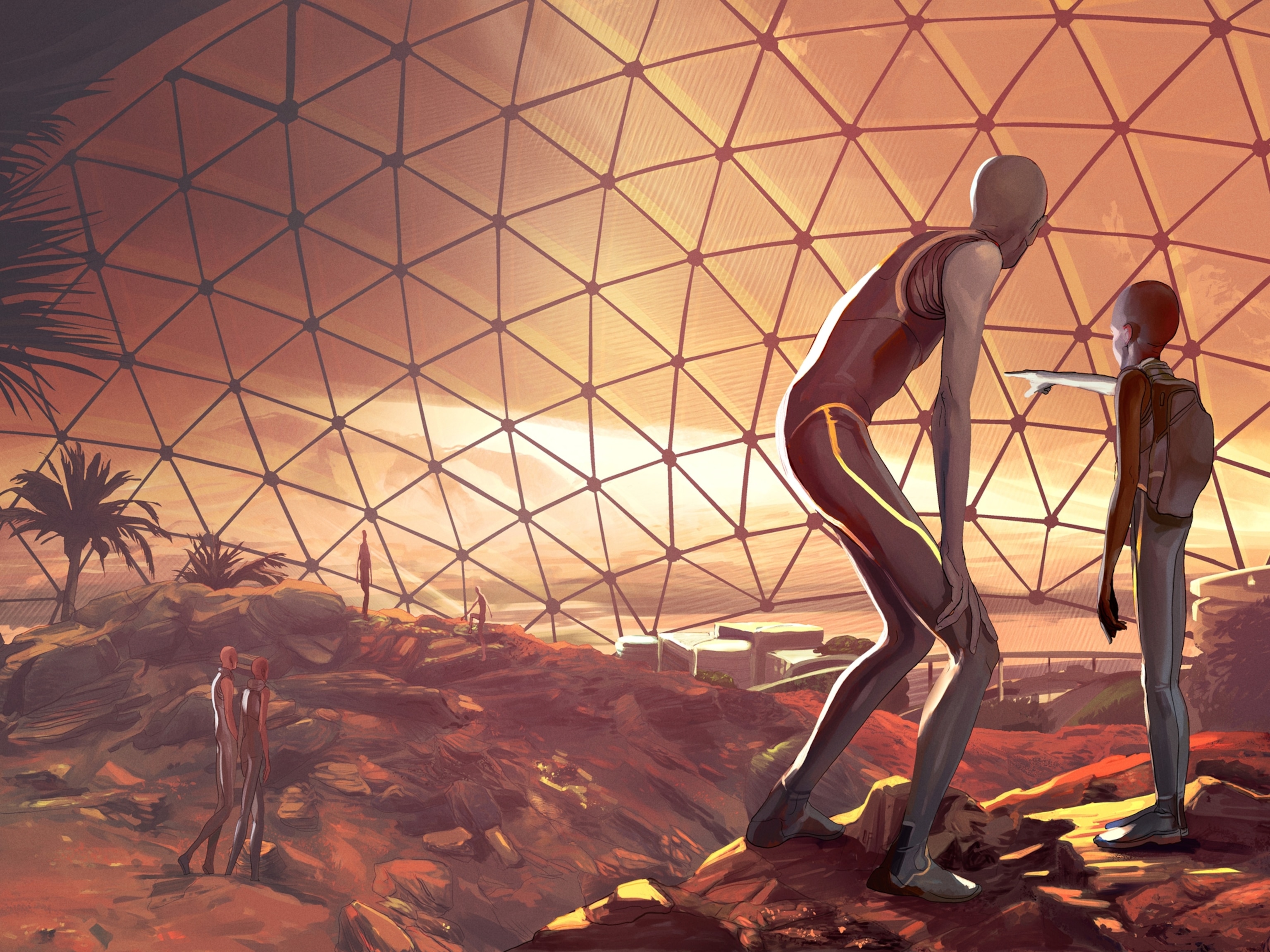
The future of spaceflight—from orbital vacations to humans on Mars
NASA aims to travel to the moon again—and beyond. Here’s a look at the 21st-century race to send humans into space.
Welcome to the 21st-century space race, one that could potentially lead to 10-minute space vacations, orbiting space hotels , and humans on Mars. Now, instead of warring superpowers battling for dominance in orbit, private companies are competing to make space travel easier and more affordable. This year, SpaceX achieved a major milestone— launching humans to the International Space Station (ISS) from the United States —but additional goalposts are on the star-studded horizon.
Private spaceflight
Private spaceflight is not a new concept . In the United States, commercial companies played a role in the aerospace industry right from the start: Since the 1960s, NASA has relied on private contractors to build spacecraft for every major human spaceflight program, starting with Project Mercury and continuing until the present.
Today, NASA’s Commercial Crew Program is expanding on the agency’s relationship with private companies. Through it, NASA is relying on SpaceX and Boeing to build spacecraft capable of carrying humans into orbit. Once those vehicles are built, both companies retain ownership and control of the craft, and NASA can send astronauts into space for a fraction of the cost of a seat on Russia’s Soyuz spacecraft.
SpaceX, which established a new paradigm by developing reusable rockets , has been running regular cargo resupply missions to the International Space Station since 2012. And in May 2020, the company’s Crew Dragon spacecraft carried NASA astronauts Doug Hurley and Bob Behnken to the ISS , becoming the first crewed mission to launch from the United States in nearly a decade. The mission, called Demo-2, is scheduled to return to Earth in August. Boeing is currently developing its Starliner spacecraft and hopes to begin carrying astronauts to the ISS in 2021.
Other companies, such as Blue Origin and Virgin Galactic , are specializing in sub-orbital space tourism. Test launch video from inside the cabin of Blue Origin’s New Shepard shows off breathtaking views of our planet and a relatively calm journey for its first passenger, a test dummy cleverly dubbed “Mannequin Skywalker.” Virgin Galactic is running test flights on its sub-orbital spaceplane , which will offer paying customers roughly six minutes of weightlessness during its journey through Earth’s atmosphere.
With these and other spacecraft in the pipeline, countless dreams of zero-gravity somersaults could soon become a reality—at least for passengers able to pay the hefty sums for the experience.
Early U.S. Spaceflight
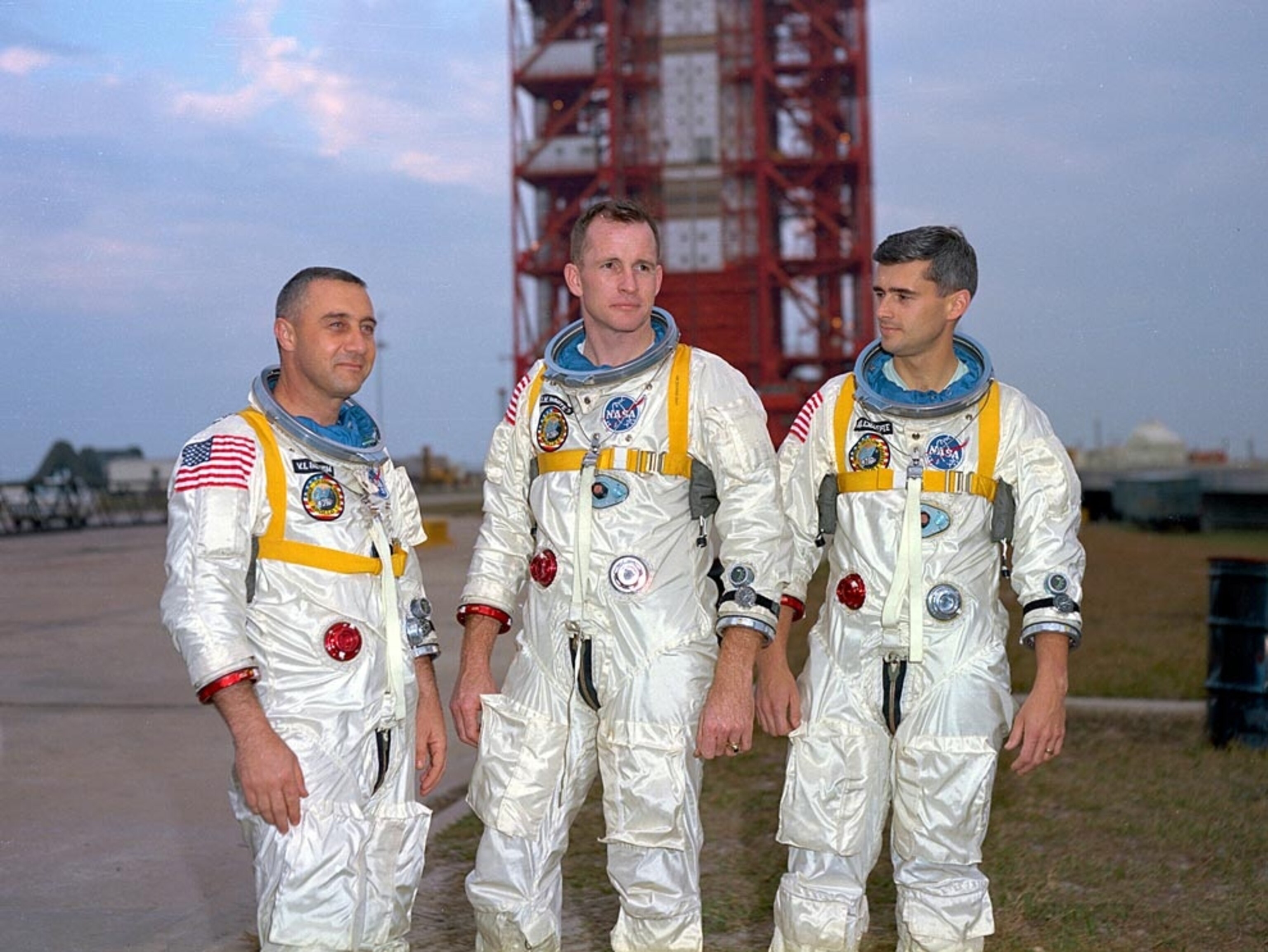
Looking to the moon
Moon missions are essential to the exploration of more distant worlds. After a long hiatus from the lunar neighborhood, NASA is again setting its sights on Earth’s nearest celestial neighbor with an ambitious plan to place a space station in lunar orbit sometime in the next decade. Sooner, though, the agency’s Artemis program , a sister to the Apollo missions of the 1960s and 1970s, is aiming to put the first woman (and the next man) on the lunar surface by 2024.
For Hungry Minds
Extended lunar stays build the experience and expertise needed for the long-term space missions required to visit other planets. As well, the moon may also be used as a forward base of operations from which humans learn how to replenish essential supplies, such as rocket fuel and oxygen, by creating them from local material.
You May Also Like

In a first, NASA Mars lander feels shockwaves from meteor impacts

SpaceX takes 4 passengers to orbit—a glimpse at private spaceflight’s future

Why go back to the moon? NASA’s Artemis program has even bigger ambitions
Such skills are crucial for the future expansion of human presence into deeper space, which demands more independence from Earth-based resources. And although humans have visited the moon before, the cratered sphere still harbors its own scientific mysteries to be explored—including the presence and extent of water ice near the moon's south pole, which is one of the top target destinations for space exploration .
NASA is also enlisting the private sector to help it reach the moon. It has awarded three contracts to private companies working on developing human-rated lunar landers—including both Blue Origin and SpaceX. But the backbone of the Artemis program relies on a brand new, state-of-the-art spacecraft called Orion .
Archival Photos of Spaceflight
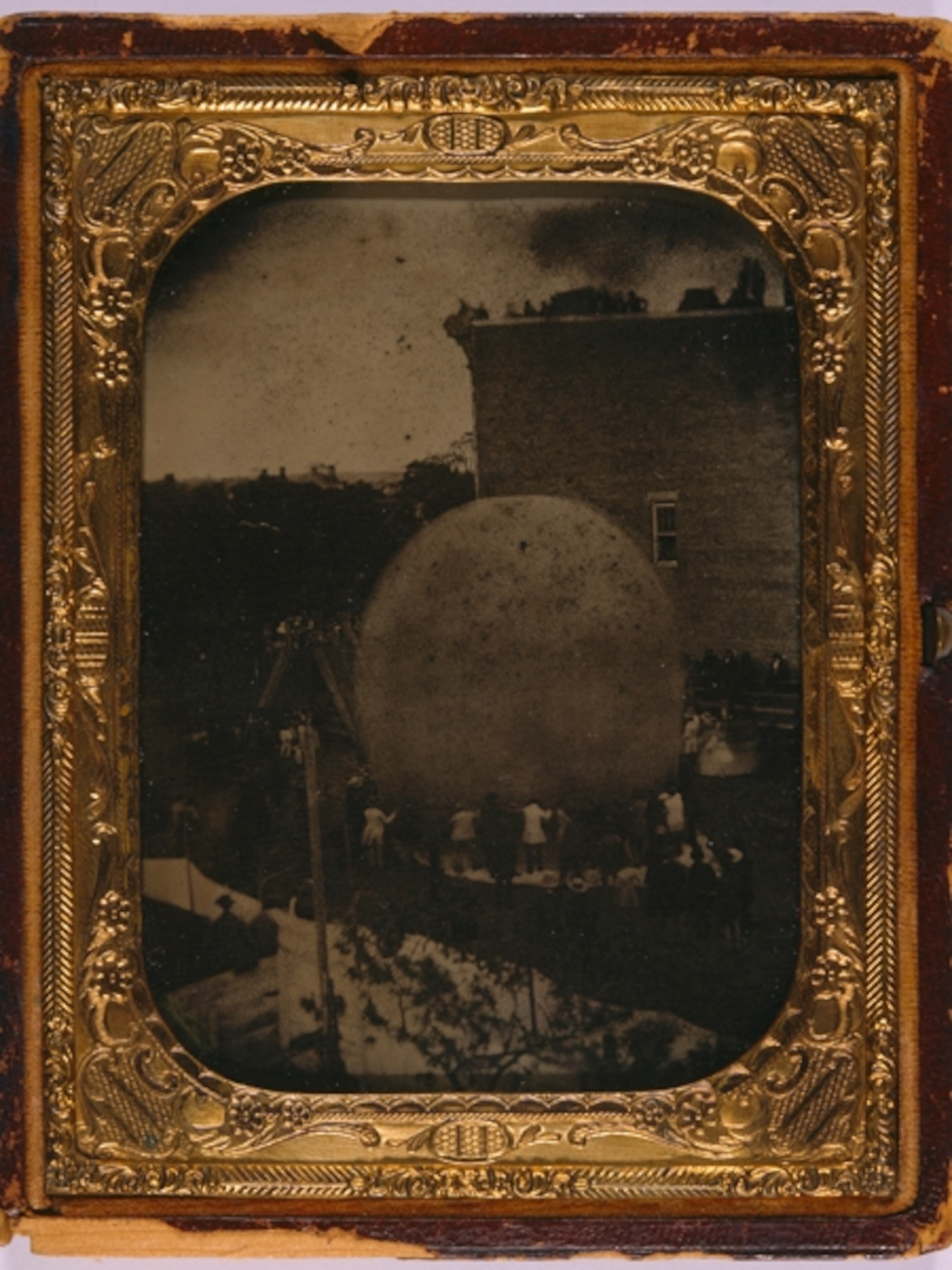
Currently being built and tested, Orion—like Crew Dragon and Starliner—is a space capsule similar to the spacecraft of the Mercury, Gemini, and Apollo programs, as well as Russia’s Soyuz spacecraft. But the Orion capsule is larger and can accommodate a four-person crew. And even though it has a somewhat retro design, the capsule concept is considered to be safer and more reliable than NASA’s space shuttle—a revolutionary vehicle for its time, but one that couldn’t fly beyond Earth’s orbit and suffered catastrophic failures.
Capsules, on the other hand, offer launch-abort capabilities that can protect astronauts in case of a rocket malfunction. And, their weight and design mean they can also travel beyond Earth’s immediate neighborhood, potentially ferrying humans to the moon, Mars, and beyond.
A new era in spaceflight
By moving into orbit with its Commercial Crew Program and partnering with private companies to reach the lunar surface, NASA hopes to change the economics of spaceflight by increasing competition and driving down costs. If space travel truly does become cheaper and more accessible, it’s possible that private citizens will routinely visit space and gaze upon our blue, watery home world—either from space capsules, space stations, or even space hotels like the inflatable habitats Bigelow Aerospace intends to build .
The United States isn’t the only country with its eyes on the sky. Russia regularly launches humans to the International Space Station aboard its Soyuz spacecraft. China is planning a large, multi-module space station capable of housing three taikonauts, and has already launched two orbiting test vehicles—Tiangong-1 and Tiangong-2, both of which safely burned up in the Earth’s atmosphere after several years in space.
Now, more than a dozen countries have the ability to launch rockets into Earth orbit. A half-dozen space agencies have designed spacecraft that shed the shackles of Earth’s gravity and traveled to the moon or Mars. And if all goes well, the United Arab Emirates will join that list in the summer of 2020 when its Hope spacecraft heads to the red planet . While there are no plans yet to send humans to Mars, these missions—and the discoveries that will come out of them—may help pave the way.
Related Topics
- SPACE EXPLORATION
- SCIENCE AND TECHNOLOGY

Second SpaceX megarocket launch ends with another explosion. What happens next?

Why did India land near the moon’s south pole?

U.S. returns to the moon as NASA's Odysseus successfully touches down

In the Arizona desert, NASA prepares for walking on the moon

The moon’s darkest corners are a mystery. This image offers a stunning new glimpse.
- Environment
- Perpetual Planet
History & Culture
- History & Culture
- History Magazine
- Gory Details
- Mind, Body, Wonder
- Paid Content
- Terms of Use
- Privacy Policy
- Your US State Privacy Rights
- Children's Online Privacy Policy
- Interest-Based Ads
- About Nielsen Measurement
- Do Not Sell or Share My Personal Information
- Nat Geo Home
- Attend a Live Event
- Book a Trip
- Inspire Your Kids
- Shop Nat Geo
- Visit the D.C. Museum
- Learn About Our Impact
- Support Our Mission
- Advertise With Us
- Customer Service
- Renew Subscription
- Manage Your Subscription
- Work at Nat Geo
- Sign Up for Our Newsletters
- Contribute to Protect the Planet
Copyright © 1996-2015 National Geographic Society Copyright © 2015-2024 National Geographic Partners, LLC. All rights reserved
- Share full article
Advertisement
Supported by
The Future of Space Tourism Is Now. Well, Not Quite.
From zero-pressure balloon trips to astronaut boot camps, reservations for getting off the planet — or pretending to — are skyrocketing. The prices, however, are still out of this world.

By Debra Kamin
Ilida Alvarez has dreamed of traveling to space since she was a child. But Ms. Alvarez, a legal-mediation firm owner, is afraid of flying, and she isn’t a billionaire — two facts that she was sure, until just a few weeks ago, would keep her fantasy as out of reach as the stars. She was wrong.
Ms. Alvarez, 46, and her husband, Rafael Landestoy, recently booked a flight on a 10-person pressurized capsule that — attached to a massive helium-filled balloon — will gently float to 100,000 feet while passengers sip champagne and recline in ergonomic chairs. The reservation required a $500 deposit; the flight itself will cost $50,000 and last six to 12 hours.
“I feel like it was tailor-made for the chickens like me who don’t want to get on a rocket,” said Ms. Alvarez, whose flight, organized by a company called World View , is scheduled to depart from the Grand Canyon in 2024.
Less than a year after Jeff Bezos and Richard Branson kicked off a commercial space race by blasting into the upper atmosphere within weeks of each other last summer, the global space tourism market is skyrocketing, with dozens of companies now offering reservations for everything from zero-pressure balloon trips to astronaut boot camps and simulated zero-gravity flights. But don’t don your spacesuit just yet. While the financial services company UBS estimates the space travel market will be worth $3 billion by 2030, the Federal Aviation Administration has yet to approve most out-of-this-world trips, and construction has not started on the first space hotel. And while access and options — not to mention launchpads — are burgeoning, space tourism remains astronomically expensive for most.
First, what counts as space travel?
Sixty miles (about 100 kilometers) above our heads lies the Kármán line, the widely accepted aeronautical boundary of the earth’s atmosphere. It’s the boundary used by the Féderátion Aéronautique Internationale, which certifies and controls global astronautical records. But many organizations in the United States, including the F.A.A. and NASA, define everything above 50 miles to be space.
Much of the attention has been focused on a trio of billionaire-led rocket companies: Mr. Bezos’ Blue Origin , whose passengers have included William Shatner; Mr. Branson’s Virgin Galactic , where tickets for a suborbital spaceflight start at $450,000; and Elon Musk’s SpaceX , which in September launched an all-civilian spaceflight, with no trained astronauts on board. Mr. Branson’s inaugural Virgin Galactic flight in 2021 reached about 53 miles, while Blue Origin flies above the 62-mile mark. Both are eclipsed by SpaceX, whose rockets charge far deeper in to the cosmos, reaching more than 120 miles above Earth.
Balloons, like those operated by World View, don’t go nearly as high. But even at their maximum altitude of 18 or 19 miles, operators say they float high enough to show travelers the curvature of the planet, and give them a chance to experience the overview effect — an intense perspective shift that many astronauts say kicks in when you view Earth from above.
Now, how to get there …
Blue Origin and Virgin Galactic, which are both licensed for passenger space travel by the F.A.A., are open for ticket sales. (Blue Origin remains mum on pricing.) Both companies currently have hundreds or even thousands of earthlings on their wait lists for a whirl to the edge of space. SpaceX charges tens of millions of dollars for its further-reaching flights and is building a new facility in Texas that is currently under F.A.A. review.
Craig Curran is a major space enthusiast — he’s held a reserved seat on a Virgin Galactic flight since 2011 — and the owner of Deprez Travel in Rochester, N.Y. The travel agency has a special space travel arm, Galactic Experiences by Deprez , through which Mr. Curran sells everything from rocket launch tickets to astronaut training.
Sales in the space tourism space, Mr. Curran acknowledges, “are reasonably difficult to make,” and mostly come from peer-to-peer networking. “You can imagine that people who spend $450,000 to go to space probably operate in circles that are not the same as yours and mine,” he said.
Some of Mr. Curran’s most popular offerings include flights where you can experience the same stomach-dropping feeling of zero gravity that astronauts feel in space, which he arranges for clients via chartered, specialized Boeing 727s that are flown in parabolic arcs to mimic being in space. Operators including Zero G also offer the service; the cost is around $8,200.
You can almost count the number of completed space tourist launches on one hand — Blue Origin has had four; SpaceX, two. Virgin Galactic, meanwhile, on Thursday announced the launch of its commercial passenger service, previously scheduled for late 2022, was delayed until early 2023. Many of those on waiting lists are biding their time before blastoff by signing up for training. Axiom Space, which contracts with SpaceX, currently offers NASA-partnered training at Houston’s Johnson Space Center. Virgin Galactic, which already offers a “customized Future Astronaut Readiness program” at its Spaceport America facility in New Mexico, is also partnering with NASA to build a training program for private astronauts.
Would-be space tourists should not expect the rigor that NASA astronauts face. Training for Virgin Galactic’s three-hour trips is included in the cost of a ticket and lasts a handful of days; it includes pilot briefings and being “fitted for your bespoke Under Armour spacesuit and boots,” according to its website.
Not ready for a rocket? Balloon rides offer a less hair-raising celestial experience.
“We go to space at 12 miles an hour, which means that it’s very smooth and very gentle. You’re not rocketing away from earth,” said Jane Poynter, a co-founder and co-chief executive of Space Perspective , which is readying its own touristic balloon spaceship, Spaceship Neptune. If all goes according to plan, voyages are scheduled to begin departing from Florida in 2024, at a cost of $125,000 per person. That’s a fraction of the price tag for Blue Origin and Virgin Galactic, but still more than double the average annual salary of an American worker.
Neither Space Perspective nor World View has the required approval yet from the F.A.A. to operate flights.
Unique implications
Whether a capsule or a rocket is your transport, the travel insurance company battleface launched a civilian space insurance plan in late 2021, a direct response, said chief executive Sasha Gainullin, to an increase in space tourism interest and infrastructure. Benefits include accidental death and permanent disablement in space and are valid for spaceflights on operators like SpaceX, Blue Origin and Virgin Galactic, as well as on stratospheric balloon rides. They’ve had many inquiries, Mr. Gainullin said, but no purchases just yet.
“Right now it’s such high-net-worth individuals who are traveling to space, so they probably don’t need insurance,” he said. “But for quote-unquote regular travelers, I think we’ll see some takeups soon.”
And as the industry grows, so perhaps will space travel’s impact on the environment. Not only do rocket launches have immense carbon footprints, even some stratospheric balloon flights have potentially significant implications: World View’s balloons are powered by thousands of cubic meters of helium, which is a limited resource . But Ted Parson, a professor of environmental law at the University of California, Los Angeles, said that space travel’s environmental impact is still dwarfed by civil aviation. And because space travel is ultra-niche, he believes it’s likely to stay that way.
“Despite extensive projections, space tourism is likely to remain a tiny fraction of commercial space exploration,” he said. “It reminds me of tourism on Mt. Everest. It’s the indulgence of very rich people seeking a transcendent, once-in-a-lifetime experience, and the local environmental burden is intense.”
Stay a while?
In the future, space enthusiasts insist, travelers won’t be traveling to space just for the ride. They’ll want to stay a while. Orbital Assembly Corporation, a manufacturing company whose goal is to colonize space, is currently building the world’s first space hotels — two ring-shaped properties that will orbit Earth, called Pioneer Station and Voyager Station. The company, quite optimistically, projects an opening date of 2025 for Pioneer Station, with a capacity of 28 guests. The design for the larger Voyager Station , which they say will open in 2027, promises villas and suites, as well as a gym, restaurant and bar. Both provide the ultimate luxury: simulated gravity. Axiom Space , a space infrastructure company, is currently building the world’s first private space station; plans include Philippe Starck-designed accommodations for travelers to spend the night.
Joshua Bush, chief executive of travel agency Avenue Two Travel , has sold a handful of seats on upcoming Virgin Galactic flights to customers. The market for space travel (and the sky-high prices that come with it), he believes, will evolve much like civilian air travel did.
“In the beginning of the 20th century, only very affluent people could afford to fly,” he said. “Just as we have Spirit and Southwest Airlines today, there will be some sort of equivalent of that in space travel, too. Hopefully within my lifetime.”

52 Places for a Changed World
The 2022 list highlights places around the globe where travelers can be part of the solution.
Follow New York Times Travel on Instagram , Twitter and Facebook . And sign up for our weekly Travel Dispatch newsletter to receive expert tips on traveling smarter and inspiration for your next vacation. Dreaming up a future getaway or just armchair traveling? Check out our 52 Places for a Changed World for 2022.
What’s Up in Space and Astronomy
Keep track of things going on in our solar system and all around the universe..
Never miss an eclipse, a meteor shower, a rocket launch or any other 2024 event that’s out of this world with our space and astronomy calendar .
A dramatic blast from the sun set off the highest-level geomagnetic storm in Earth’s atmosphere, making the northern lights visible around the world .
With the help of Google Cloud, scientists who hunt killer asteroids churned through hundreds of thousands of images of the night sky to reveal 27,500 overlooked space rocks in the solar system .
A celestial image, an Impressionistic swirl of color in the center of the Milky Way, represents a first step toward understanding the role of magnetic fields in the cycle of stellar death and rebirth.
Scientists may have discovered a major flaw in their understanding of dark energy, a mysterious cosmic force . That could be good news for the fate of the universe.
Is Pluto a planet? And what is a planet, anyway? Test your knowledge here .
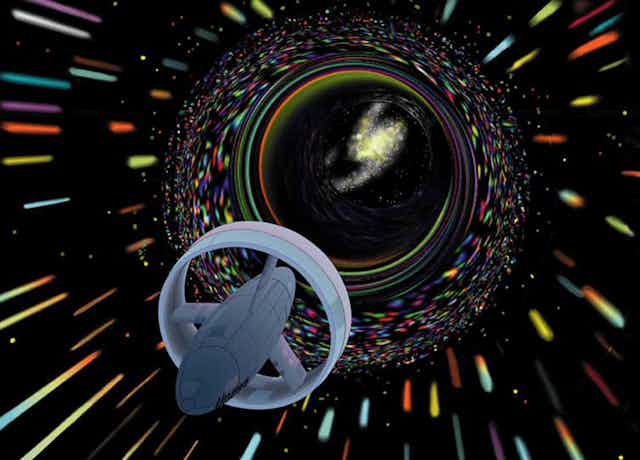
Warp drives: Physicists give chances of faster-than -light space travel a boost
Associate Professor of Physics, Oklahoma State University
Disclosure statement
Mario Borunda does not work for, consult, own shares in or receive funding from any company or organisation that would benefit from this article, and has disclosed no relevant affiliations beyond their academic appointment.
Oklahoma State University provides funding as a member of The Conversation US.
View all partners
The closest star to Earth is Proxima Centauri. It is about 4.25 light-years away, or about 25 trillion miles (40 trillion km). The fastest ever spacecraft, the now- in-space Parker Solar Probe will reach a top speed of 450,000 mph. It would take just 20 seconds to go from Los Angeles to New York City at that speed, but it would take the solar probe about 6,633 years to reach Earth’s nearest neighboring solar system.
If humanity ever wants to travel easily between stars, people will need to go faster than light. But so far, faster-than-light travel is possible only in science fiction.
In Issac Asimov’s Foundation series , humanity can travel from planet to planet, star to star or across the universe using jump drives. As a kid, I read as many of those stories as I could get my hands on. I am now a theoretical physicist and study nanotechnology, but I am still fascinated by the ways humanity could one day travel in space.
Some characters – like the astronauts in the movies “Interstellar” and “Thor” – use wormholes to travel between solar systems in seconds. Another approach – familiar to “Star Trek” fans – is warp drive technology. Warp drives are theoretically possible if still far-fetched technology. Two recent papers made headlines in March when researchers claimed to have overcome one of the many challenges that stand between the theory of warp drives and reality.
But how do these theoretical warp drives really work? And will humans be making the jump to warp speed anytime soon?
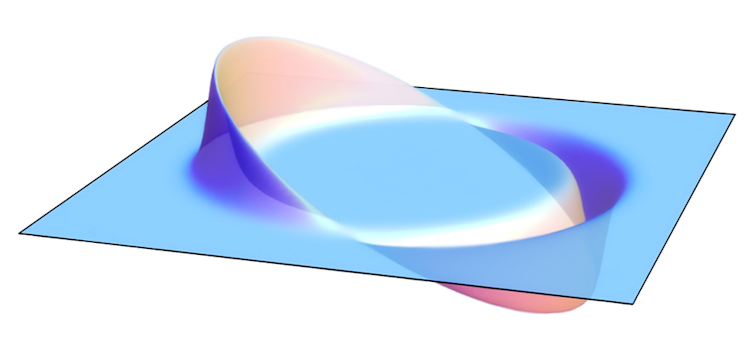
Compression and expansion
Physicists’ current understanding of spacetime comes from Albert Einstein’s theory of General Relativity . General Relativity states that space and time are fused and that nothing can travel faster than the speed of light. General relativity also describes how mass and energy warp spacetime – hefty objects like stars and black holes curve spacetime around them. This curvature is what you feel as gravity and why many spacefaring heroes worry about “getting stuck in” or “falling into” a gravity well. Early science fiction writers John Campbell and Asimov saw this warping as a way to skirt the speed limit.
What if a starship could compress space in front of it while expanding spacetime behind it? “Star Trek” took this idea and named it the warp drive.
In 1994, Miguel Alcubierre, a Mexican theoretical physicist, showed that compressing spacetime in front of the spaceship while expanding it behind was mathematically possible within the laws of General Relativity . So, what does that mean? Imagine the distance between two points is 10 meters (33 feet). If you are standing at point A and can travel one meter per second, it would take 10 seconds to get to point B. However, let’s say you could somehow compress the space between you and point B so that the interval is now just one meter. Then, moving through spacetime at your maximum speed of one meter per second, you would be able to reach point B in about one second. In theory, this approach does not contradict the laws of relativity since you are not moving faster than light in the space around you. Alcubierre showed that the warp drive from “Star Trek” was in fact theoretically possible.
Proxima Centauri here we come, right? Unfortunately, Alcubierre’s method of compressing spacetime had one problem: it requires negative energy or negative mass.

A negative energy problem
Alcubierre’s warp drive would work by creating a bubble of flat spacetime around the spaceship and curving spacetime around that bubble to reduce distances. The warp drive would require either negative mass – a theorized type of matter – or a ring of negative energy density to work. Physicists have never observed negative mass, so that leaves negative energy as the only option.
To create negative energy, a warp drive would use a huge amount of mass to create an imbalance between particles and antiparticles. For example, if an electron and an antielectron appear near the warp drive, one of the particles would get trapped by the mass and this results in an imbalance. This imbalance results in negative energy density. Alcubierre’s warp drive would use this negative energy to create the spacetime bubble.
But for a warp drive to generate enough negative energy, you would need a lot of matter. Alcubierre estimated that a warp drive with a 100-meter bubble would require the mass of the entire visible universe .
In 1999, physicist Chris Van Den Broeck showed that expanding the volume inside the bubble but keeping the surface area constant would reduce the energy requirements significantly , to just about the mass of the sun. A significant improvement, but still far beyond all practical possibilities.
A sci-fi future?
Two recent papers – one by Alexey Bobrick and Gianni Martire and another by Erik Lentz – provide solutions that seem to bring warp drives closer to reality.
Bobrick and Martire realized that by modifying spacetime within the bubble in a certain way, they could remove the need to use negative energy. This solution, though, does not produce a warp drive that can go faster than light.
[ Over 100,000 readers rely on The Conversation’s newsletter to understand the world. Sign up today .]
Independently, Lentz also proposed a solution that does not require negative energy. He used a different geometric approach to solve the equations of General Relativity, and by doing so, he found that a warp drive wouldn’t need to use negative energy. Lentz’s solution would allow the bubble to travel faster than the speed of light.
It is essential to point out that these exciting developments are mathematical models. As a physicist, I won’t fully trust models until we have experimental proof. Yet, the science of warp drives is coming into view. As a science fiction fan, I welcome all this innovative thinking. In the words of Captain Picard , things are only impossible until they are not.
- General Relativity
- Theoretical physics
- Interstellar
- Speed of light
- Albert Einstein

Lecturer / Senior Lecturer - Marketing

Communications and Engagement Officer, Corporate Finance Property and Sustainability

Assistant Editor - 1 year cadetship

Executive Dean, Faculty of Health

Lecturer/Senior Lecturer, Earth System Science (School of Science)
We have completed maintenance on Astronomy.com and action may be required on your account. Learn More

- Login/Register
- Solar System
- Exotic Objects
- Upcoming Events
- Deep-Sky Objects
- Observing Basics
- Telescopes and Equipment
- Astrophotography
- Space Exploration
- Human Spaceflight
- Robotic Spaceflight
- The Magazine
Warp drives: Physicists investigate faster-than-light space travel
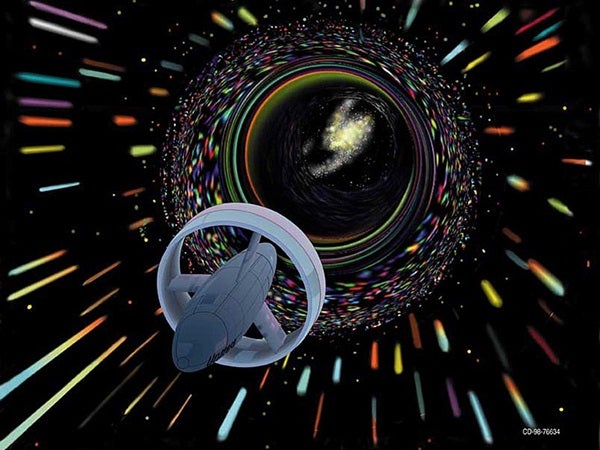
The closest star to Earth is Proxima Centauri. It is about 4.25 light-years away, or about 25 trillion miles (40 trillion kilometers). The fastest ever spacecraft, the now- in-space Parker Solar Probe will reach a top speed of 450,000 mph. It would take just 20 seconds to go from Los Angeles to New York City at that speed, but it would take the solar probe about 6,633 years to reach Earth’s nearest neighboring solar system.
If humanity ever wants to travel easily between stars, people will need to go faster than light. But so far, faster-than-light travel is possible only in science fiction.
In Issac Asimov’s Foundation series , humanity can travel from planet to planet, star to star or across the universe using jump drives. As a kid, I read as many of those stories as I could get my hands on. I am now a theoretical physicist and study nanotechnology, but I am still fascinated by the ways humanity could one day travel in space.
Some characters – like the astronauts in the movies “Interstellar” and “Thor” – use wormholes to travel between solar systems in seconds. Another approach – familiar to “Star Trek” fans – is warp drive technology. Warp drives are theoretically possible if still far-fetched technology. Two recent papers made headlines in March when researchers claimed to have overcome one of the many challenges that stand between the theory of warp drives and reality.
But how do these theoretical warp drives really work? And will humans be making the jump to warp speed anytime soon?
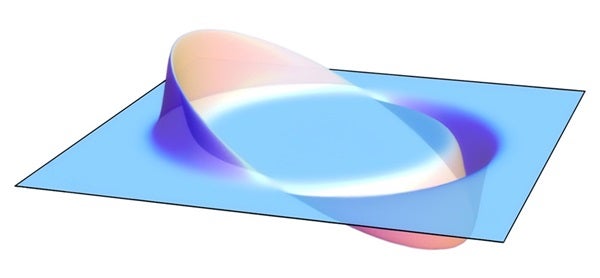
Compression and expansion
Physicists’ current understanding of spacetime comes from Albert Einstein’s theory of general relativity . General relativity states that space and time are fused and that nothing can travel faster than the speed of light. General relativity also describes how mass and energy warp spacetime – hefty objects like stars and black holes curve spacetime around them. This curvature is what you feel as gravity and why many spacefaring heroes worry about “getting stuck in” or “falling into” a gravity well. Early science fiction writers John Campbell and Asimov saw this warping as a way to skirt the speed limit.
What if a starship could compress space in front of it while expanding spacetime behind it? “Star Trek” took this idea and named it the warp drive.
In 1994, Miguel Alcubierre, a Mexican theoretical physicist, showed that compressing spacetime in front of the spaceship while expanding it behind was mathematically possible within the laws of General Relativity . So, what does that mean? Imagine the distance between two points is 33 feet (10 meters). If you are standing at point A and can travel one meter per second, it would take 10 seconds to get to point B. However, let’s say you could somehow compress the space between you and point B so that the interval is now just one meter. Then, moving through spacetime at your maximum speed of one meter per second, you would be able to reach point B in about one second. In theory, this approach does not contradict the laws of relativity since you are not moving faster than light in the space around you. Alcubierre showed that the warp drive from “Star Trek” was in fact theoretically possible.
Proxima Centauri here we come, right? Unfortunately, Alcubierre’s method of compressing spacetime had one problem: it requires negative energy or negative mass.
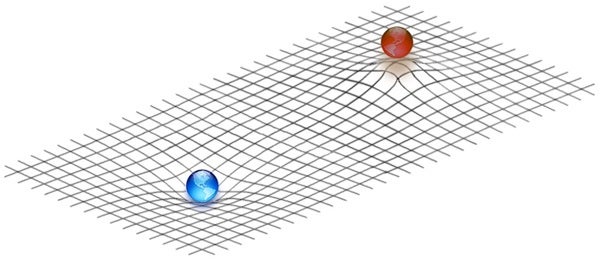
A negative energy problem
Alcubierre’s warp drive would work by creating a bubble of flat spacetime around the spaceship and curving spacetime around that bubble to reduce distances. The warp drive would require either negative mass – a theorized type of matter – or a ring of negative energy density to work. Physicists have never observed negative mass, so that leaves negative energy as the only option.
To create negative energy, a warp drive would use a huge amount of mass to create an imbalance between particles and antiparticles. For example, if an electron and an antielectron appear near the warp drive, one of the particles would get trapped by the mass and this results in an imbalance. This imbalance results in negative energy density. Alcubierre’s warp drive would use this negative energy to create the spacetime bubble.
But for a warp drive to generate enough negative energy, you would need a lot of matter. Alcubierre estimated that a warp drive with a 100-meter bubble would require the mass of the entire visible universe .
In 1999, physicist Chris Van Den Broeck showed that expanding the volume inside the bubble but keeping the surface area constant would reduce the energy requirements significantly , to just about the mass of the Sun. A significant improvement, but still far beyond all practical possibilities.
A sci-fi future?
Two recent papers – one by Alexey Bobrick and Gianni Martire and another by Erik Lentz – provide solutions that seem to bring warp drives closer to reality.
Bobrick and Martire realized that by modifying spacetime within the bubble in a certain way, they could remove the need to use negative energy. This solution, though, does not produce a warp drive that can go faster than light.
Independently, Lentz also proposed a solution that does not require negative energy. He used a different geometric approach to solve the equations of general relativity, and by doing so, he found that a warp drive wouldn’t need to use negative energy. Lentz’s solution would allow the bubble to travel faster than the speed of light.
It is essential to point out that these exciting developments are mathematical models. As a physicist, I won’t fully trust models until we have experimental proof. Yet, the science of warp drives is coming into view. As a science fiction fan, I welcome all this innovative thinking. In the words of Captain Picard , things are only impossible until they are not.
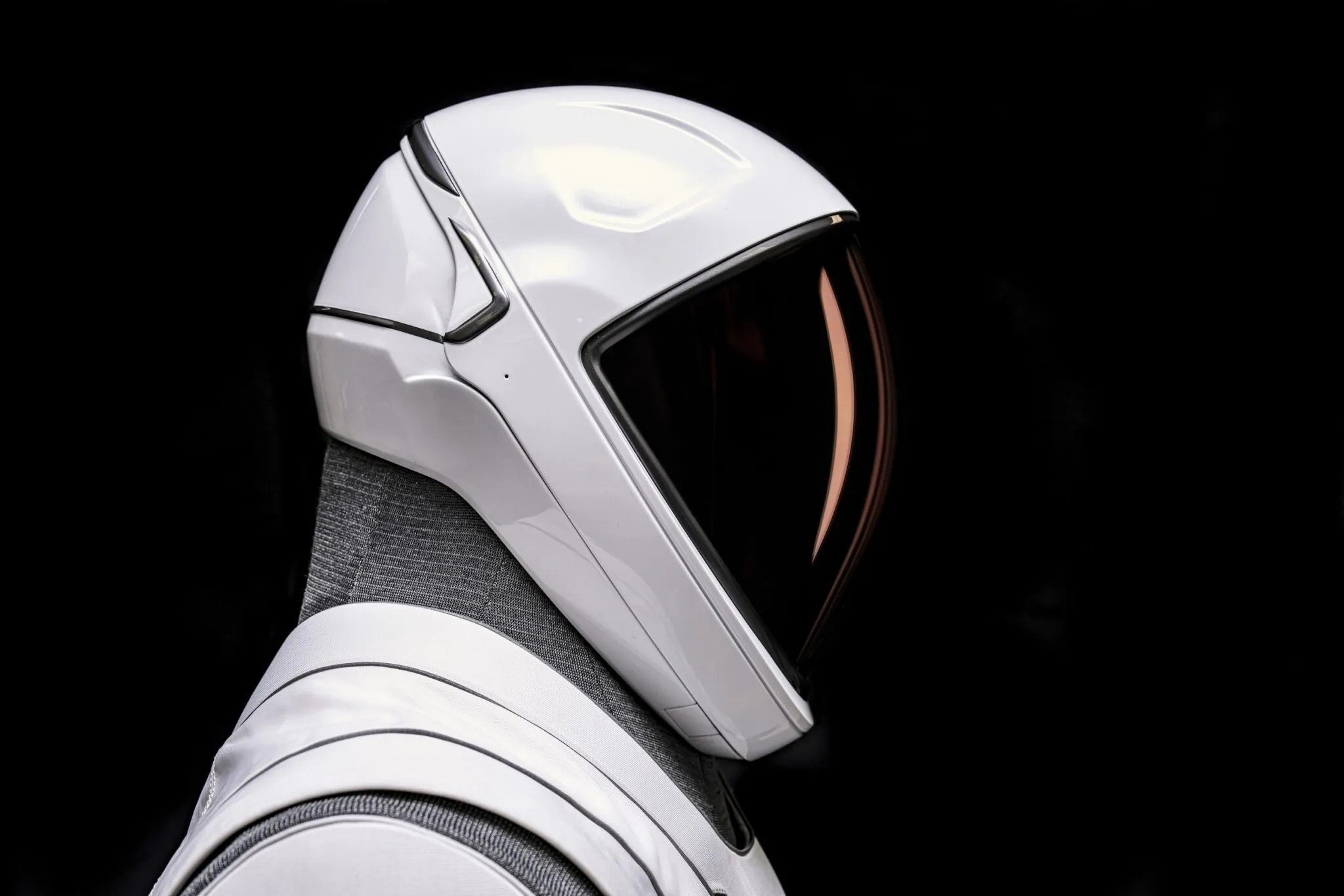
What Is Polaris Dawn? The upcoming SpaceX mission, explained
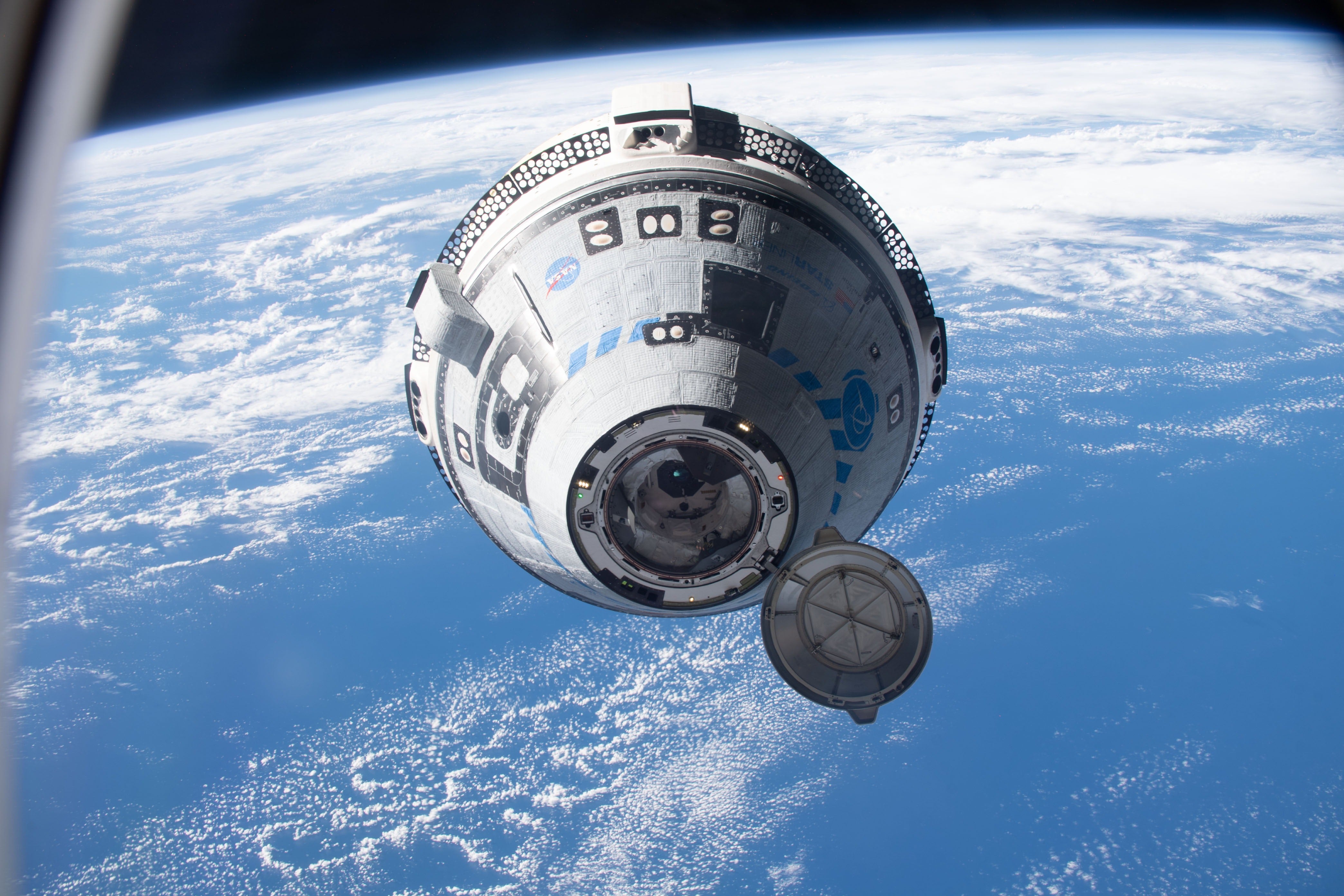
Boeing’s Starliner launch – delayed again – will be an important milestone for commercial spaceflight
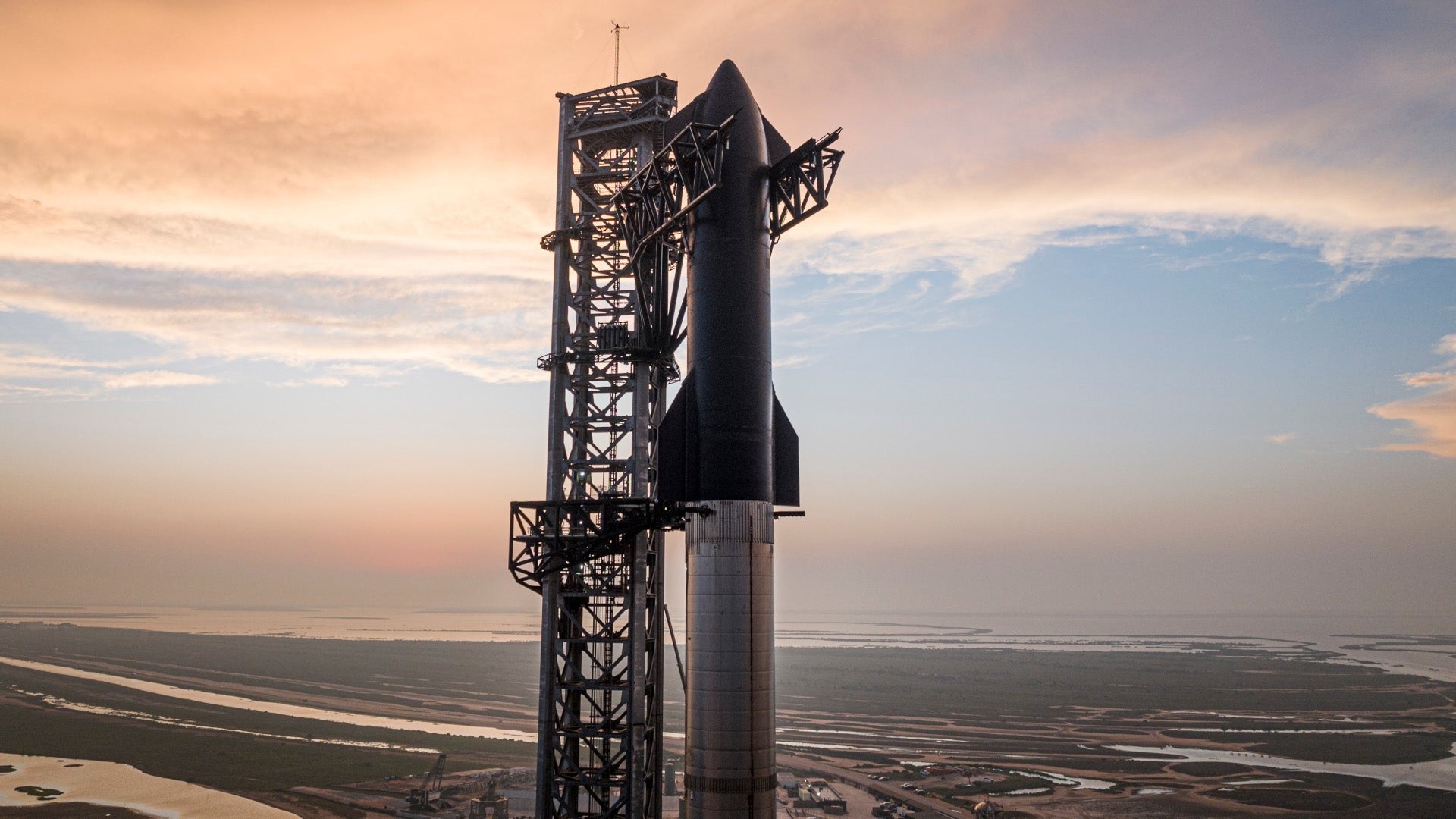
SpaceX adds tourism offering to website
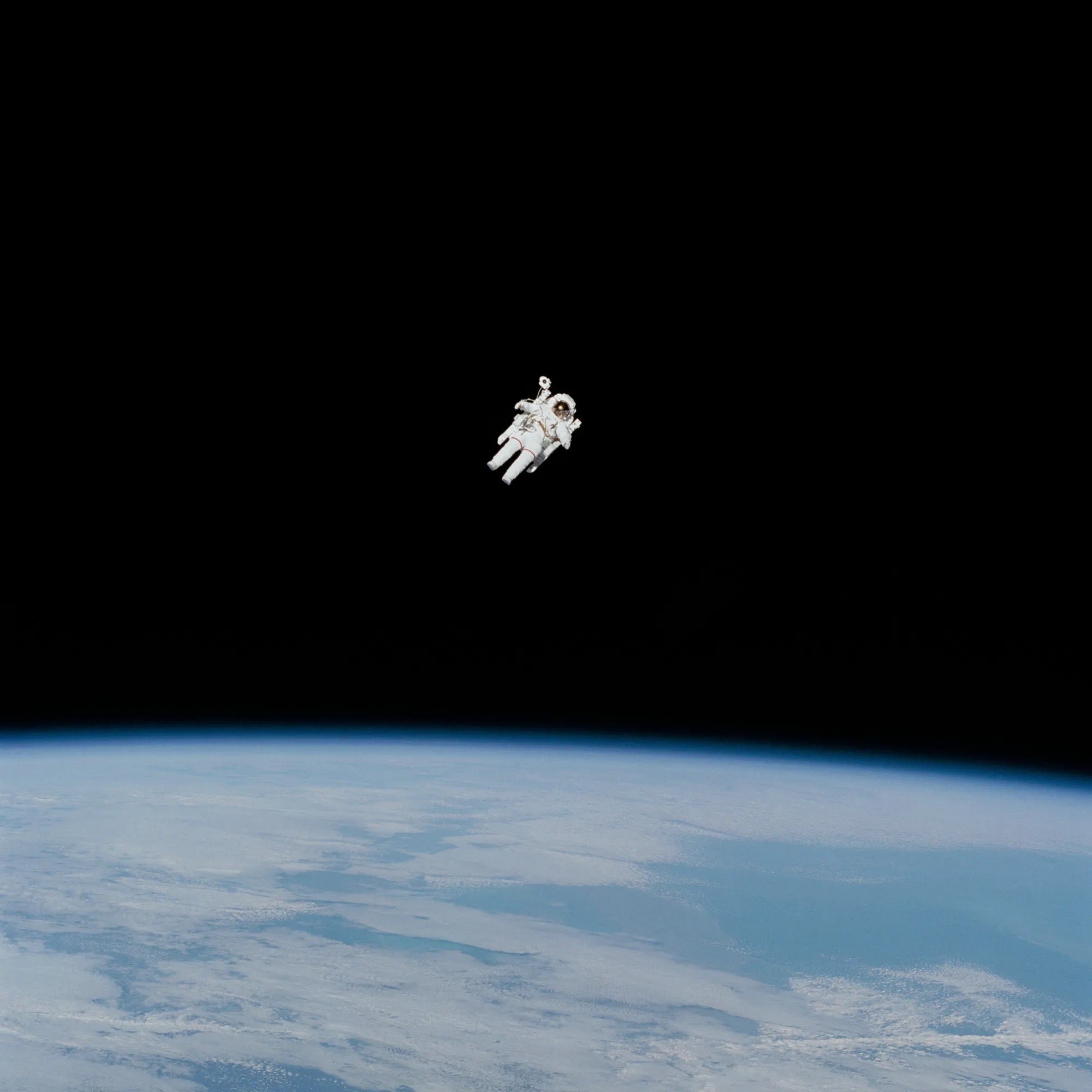
Astronauts have a surprising ability to gauge distances in space
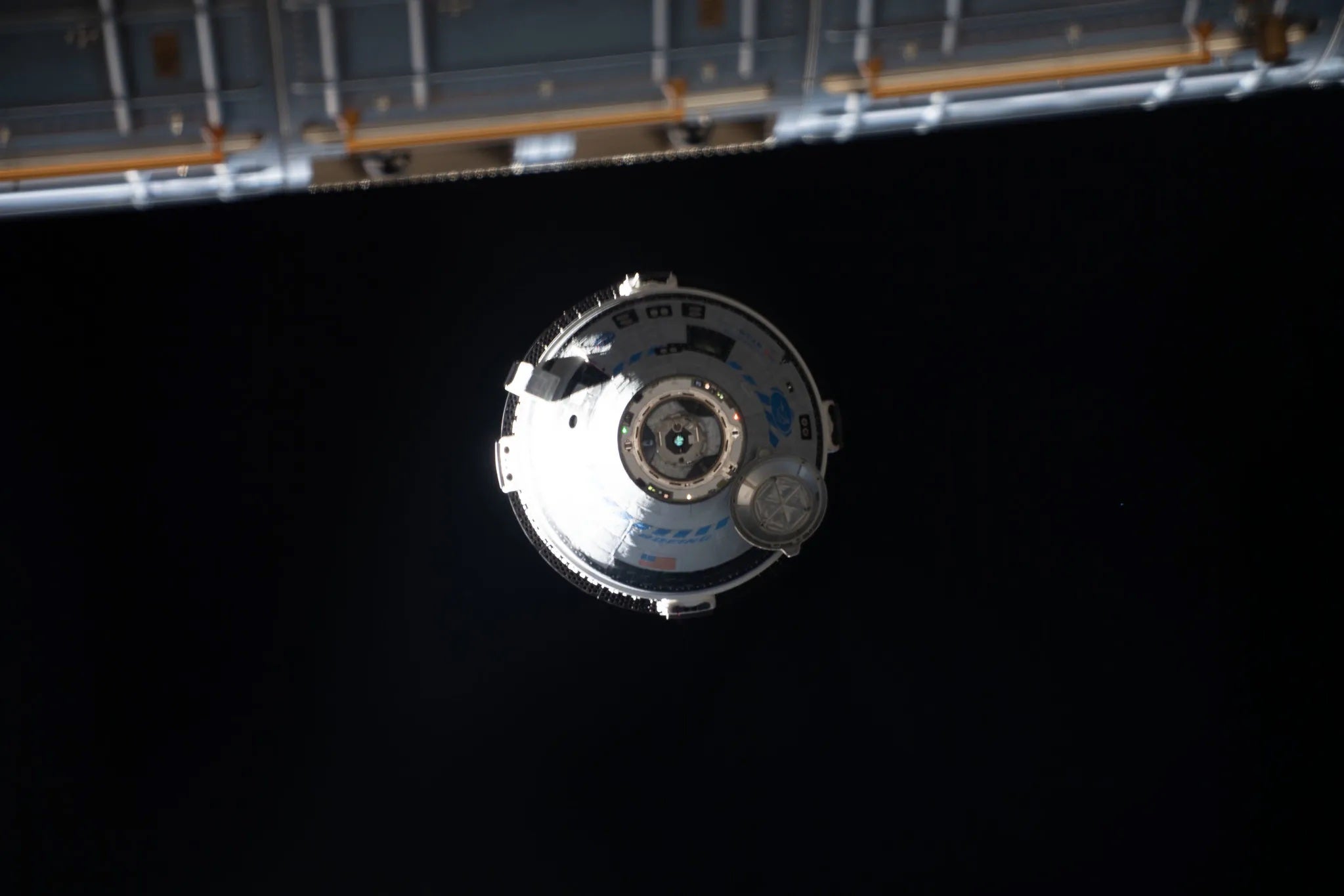
The NASA/Boeing Starliner launches soon. Here’s what to know.
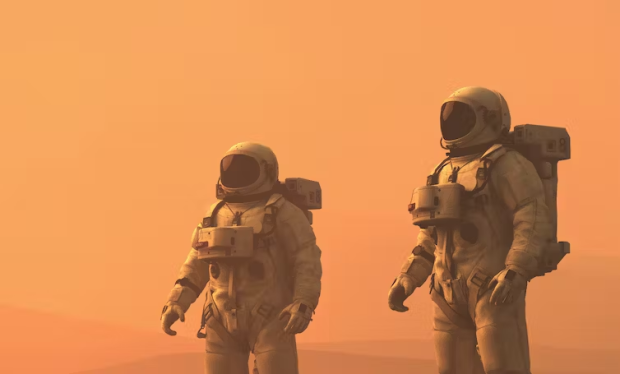
What happens if someone dies in space?

Meet Katya Echazarreta, the first Mexican-born woman to travel to space

A metal chunk that burst through a Florida home came from the ISS

An updated list of space missions: Current and upcoming voyages
Featured Topics
Featured series.
A series of random questions answered by Harvard experts.
Explore the Gazette
Read the latest.

Epic science inside a cubic millimeter of brain
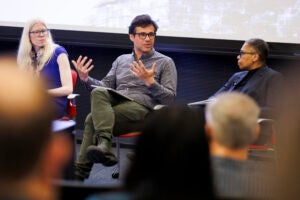
What is ‘original scholarship’ in the age of AI?

Complex questions, innovative approaches
How to prepare for a trip to space.
Illustration by Oliver Burston/Ikon Images
Astronauts spend years training for missions. How do commercial travelers get ready?
Part of the wondering series.
The Medical School’s Aleksandra Stankovic is an aerospace psychologist and spaceflight biomedical researcher who studies how to optimize human performance and behavioral health in extreme operational environments. We asked her how a person gets ready to travel to space.
The spaceflight environment presents many challenges — technical, physical, and psychological. With more people having access to space travel today than ever before, successful and safe spaceflights require varying levels of preparation before launch day.
For government astronauts, candidates undergo a rigorous two-year initial training period before qualifying for flight assignment. This training includes learning about Space Station and flight vehicle systems, studying orbital mechanics, becoming proficient in emergency procedures (like how to handle scenarios such as fire, cabin depressurization, or medical issues), conducting flight training in T-38 jets (to build quick decision-making skills in high-performance aircraft), and developing Russian language skills (since international space missions involve collaboration among astronauts from various countries).
To prepare for the microgravity environment of space, astronauts also participate in simulations of weightlessness, including parabolic flights and training in the Neutral Buoyancy Lab, a large swimming pool where astronauts practice conducting spacewalks and learn to perform tasks in their pressurized spacesuits. Astronauts complete survival training and learn to cope with extreme conditions — a crucial skill in case of an emergency landing back on Earth in the water or in very cold locations like Siberia. They are trained to operate the robotic arm that is used for tasks such as capturing cargo spacecraft.
Once they receive a flight assignment, astronauts complete an additional 18 months of mission-specific training. They simulate various mission scenarios — including launch, rendezvous, and docking — and emergency procedures. Additionally, they undergo extensive training on the scientific experiments they’ll be conducting, like how to work with equipment, collect samples, and handle data.
Anyone who spends prolonged periods in space will need to spend a lot of their day working out to keep their bodies in strong shape to be healthy when they return home.
Since maintaining physical fitness is vital for astronauts to counteract the muscle and bone loss experienced in microgravity, they spend a lot of time preflight working out. At the same time, long-duration space missions can be mentally challenging, given the prolonged isolation, confinement, and separation from family and friends. Astronauts learn strategies to manage stress, maintain psychological well-being, and work effectively in close environments with their fellow crewmembers.
Commercial astronaut training is significantly less intensive than the training government-sponsored astronauts receive, since their missions are often of shorter duration and focus more on providing safe and enjoyable flying experiences. While commercial crews may stay in space for shorter intervals ranging from a few minutes for suborbital flight to several days or even weeks on the Space Station, government astronauts typically spend six months or more on the station. (Astronaut Frank Rubio recently set the record for longest American space mission with 371 consecutive days in space; cosmonaut Valeri Polyakov, who logged 437 continuous days in orbit on Russia’s Mir space station between 1994 and 1995, still holds the world record.)
Commercial astronauts often receive more generalized training that covers the basics of space travel and safety/emergency procedures. Anyone who spends prolonged periods in space will need to spend a lot of their day working out to keep their bodies in strong shape to be healthy when they return home. Everyday activities can be challenging without gravity, and sleeping can be difficult without the normal light cues from the sun that our bodies rely upon on Earth to regulate our circadian rhythms. A combination of technology and training help space travelers adapt.
As more people travel to space, on an expanding range of flight vehicles and for varying types of missions, spaceflight preparation too will undoubtedly continue to evolve. It’s an exciting time to be studying how to keep humans safe and healthy in space, and researchers like me are thrilled to be a part of enabling this next great wave of human space exploration!
— As told to Anna Lamb/Harvard Staff Writer
Share this article
Also in this series:.

How old is too old to run?
No such thing, specialist says — but when your body is trying to tell you something, listen
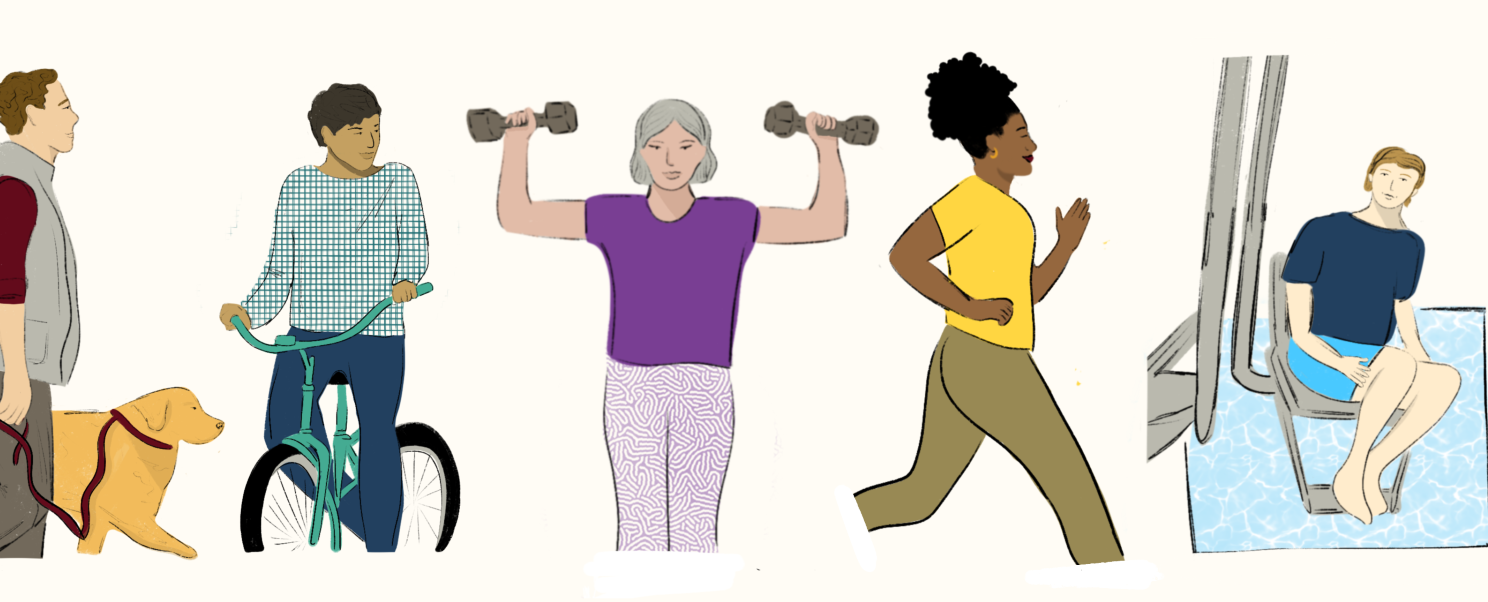
The 20-minute workout
Pressed for time? You still have plenty of options.

How to deliver very bad news
It’s hard to be a doctor. This is when it’s really hard.

Is organic better?
Not if you follow the evidence, researcher says

Next spat with your partner, try silence
If you’re doing all the talking, then you’re probably doing it wrong, says negotiation expert.

How to judge a painting
Do: Ask questions and keep an open mind. Don’t: Say your child could’ve made that.

Can you be close without sex?
Healthy intimate relationships vary but share one key feature, says psychologist

How to write funny
For Cora Frazier, it usually starts with deep sadness
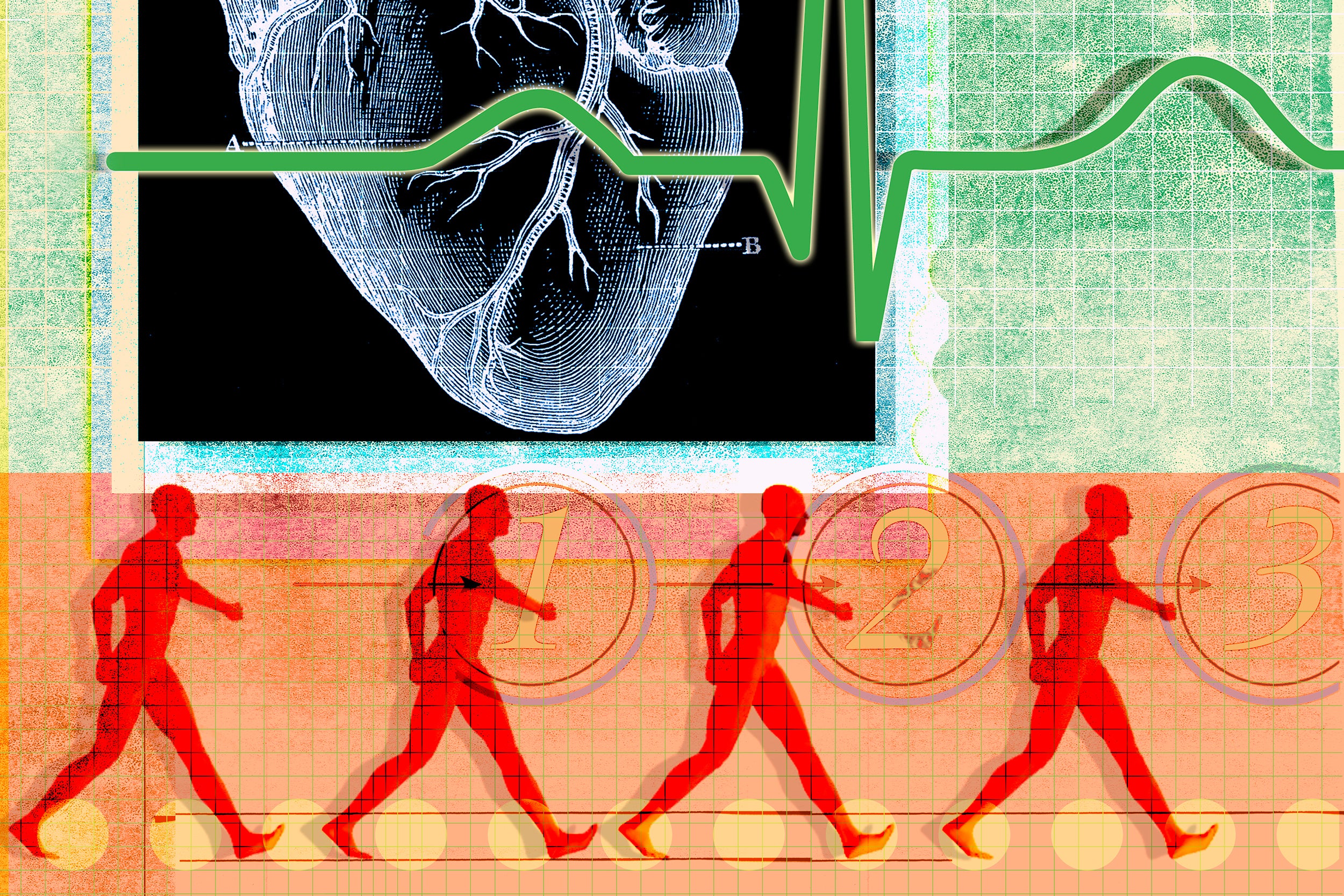
Faster, fitter?
Not really, says Spaulding Rehab expert. When you go for a walk, focus on this instead.
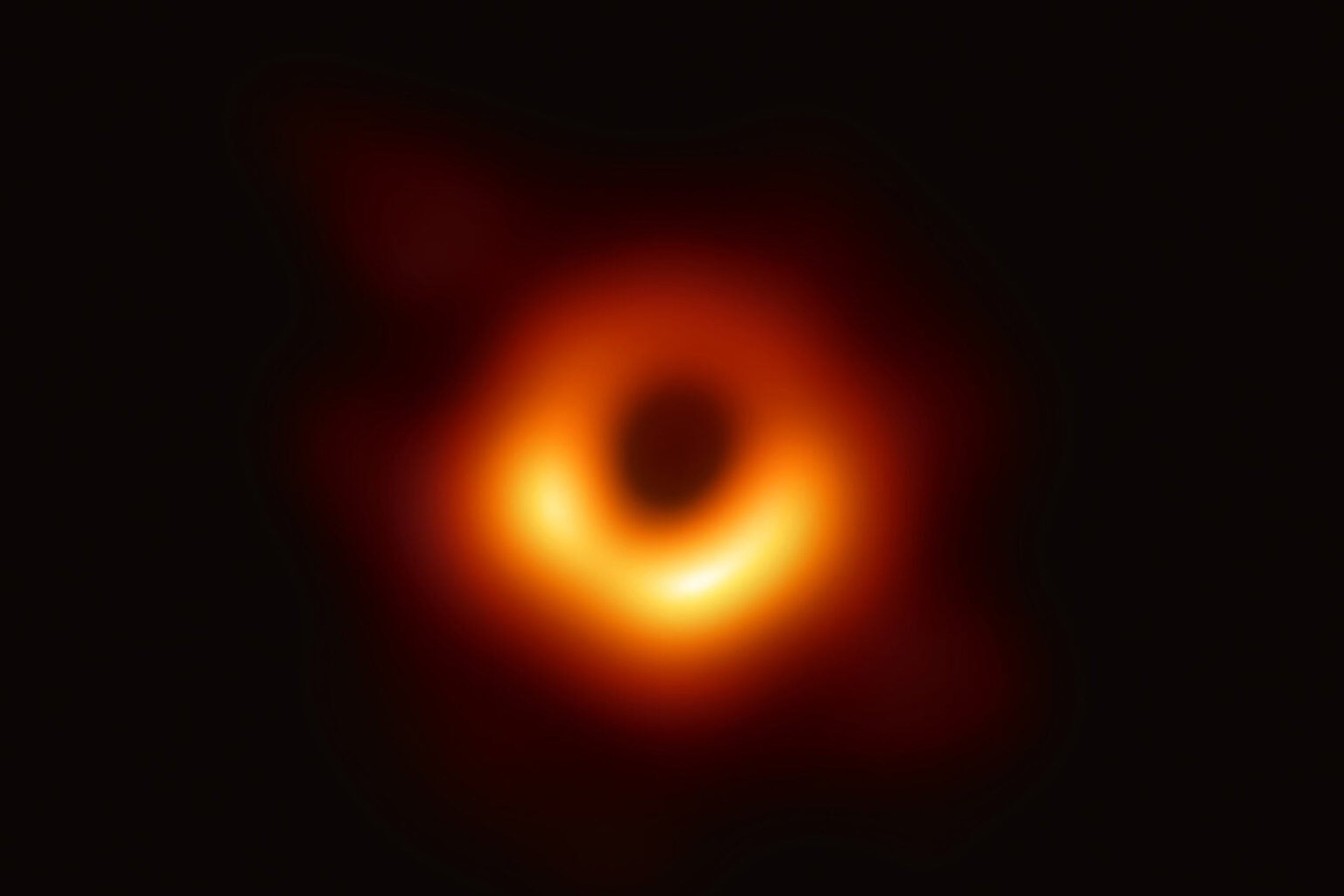
Nothing that is not there and the nothing that is
You’ll never experience a black hole, but Avi Loeb can help you imagine one
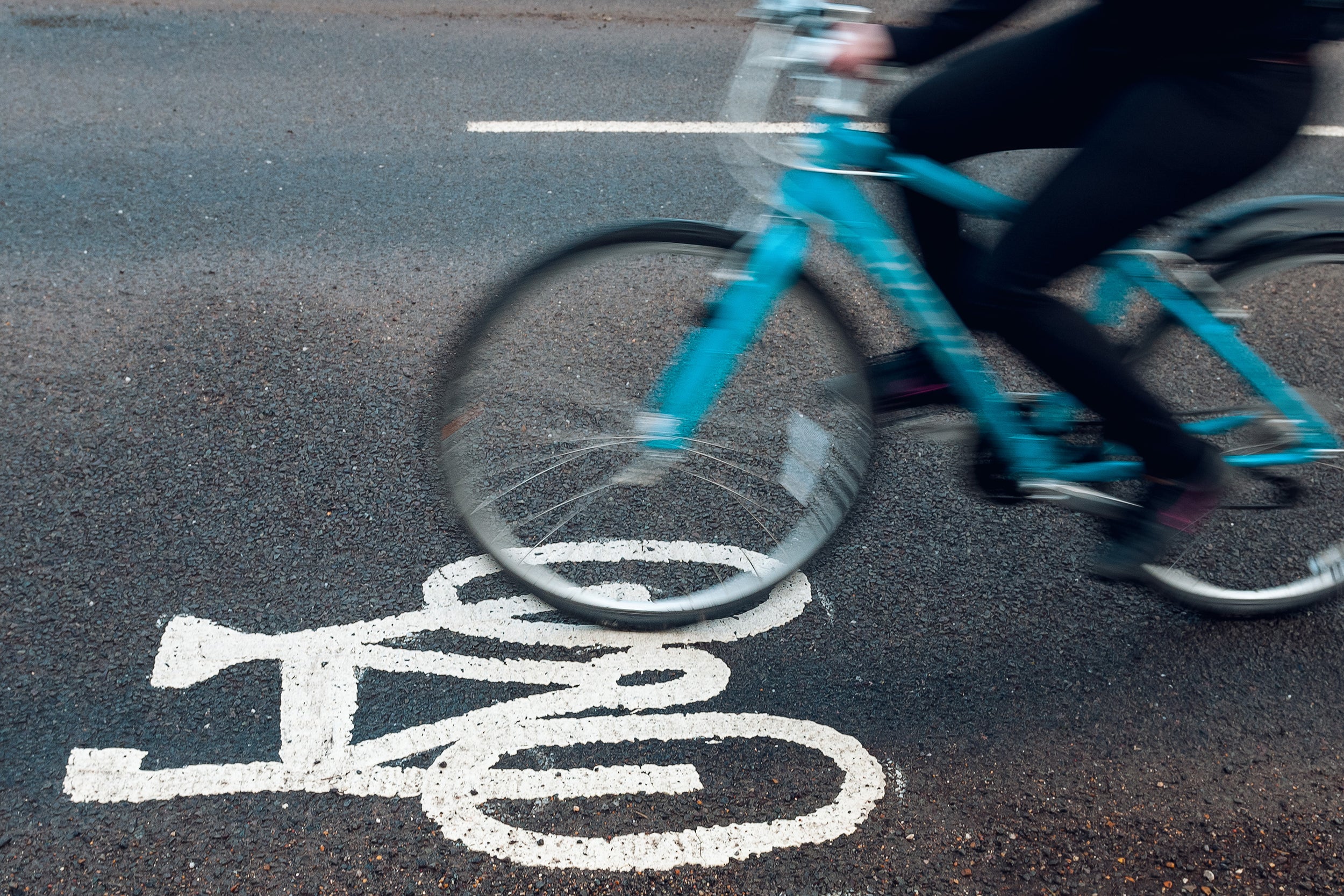
Is cycling safe?
We shouldn’t take no for an answer, researcher says

The language of dreams
Proficiency, place, emotion, or something else? These late-night conversations defy easy explanation.
You might like
Researchers publish largest-ever dataset of neural connections
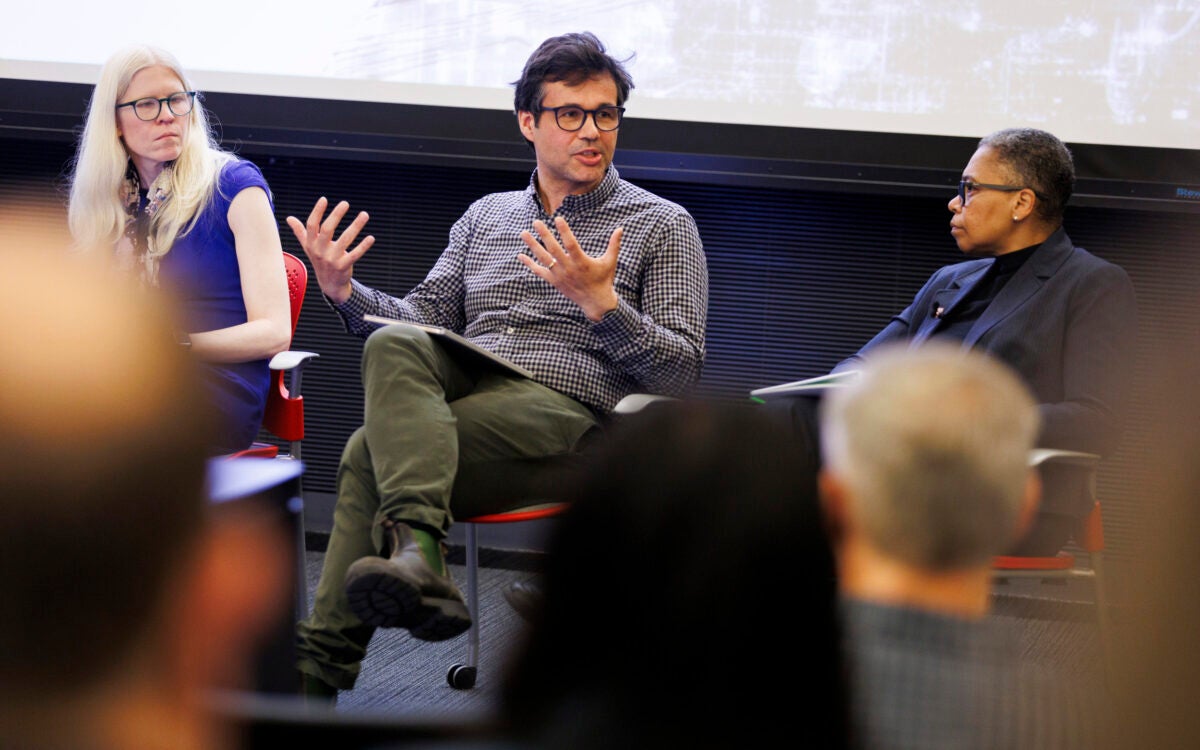
Symposium considers how technology is changing academia

Seven projects awarded Star-Friedman Challenge grants
How far has COVID set back students?
An economist, a policy expert, and a teacher explain why learning losses are worse than many parents realize

Excited about new diet drug? This procedure seems better choice.
Study finds minimally invasive treatment more cost-effective over time, brings greater weight loss
clock This article was published more than 1 year ago
How to travel to space, Earth’s hottest new destination
Go boldly, but pack lightly
The space just above our planet is booming . Off-world trips are rapidly increasing: 42 of the 51 commercial astronauts recognized by the Federal Aviation Administration left Earth within the past two years.
The FAA predicts their ranks will balloon in the next decade — which may also bring new destinations, such as a rotating space hotel whose construction, planners claim, will begin in 2026 — and some experts have expressed optimism that relatively affordable space travel could be possible by the middle of this century.
For now, though, costs remain enormous. A $450,000 ticket reserves a spot on Virgin Galactic’s space plane, which flies 50 miles above Earth — six times a passenger plane’s cruising altitude. Expect to pay even more to go higher. Blue Origin’s 11-minute journey by rocket, which reportedly cost more than $1 million, shoots above the 62-miles-high Kármán line, the generally agreed-upon boundary between Earth and space. Others spend days in space. In September 2021, four civilian Americans orbited for three days aboard a SpaceX Dragon capsule. No word on how much it cost them.
For $55 million , Axiom Space will send astronauts via a SpaceX rocket to the International Space Station, a laboratory that circles Earth once every 90 minutes. For two weeks last April, the ISS’s first Axiom crew members worked in the lab while forgoing proper showers.
The New Space Age
Space “ought to be on everybody’s bucket list,” said former NASA astronaut Michael López-Alegría , the Axiom Space vice president who commanded the April mission. “We’d be the first to admit that it’s not quite democratic yet, because it’s still pretty expensive, but we’ll get there.” The Houston-based company has already begun to build a segment of what will be a private space station.
Here’s how to pack and prep for Earth’s hottest new destination.
Getting ready
Training takes days to months. Axiom Space crew members spent at least 700 hours learning new tasks: how to run experiments, dock a transport vehicle to the ISS and respond to fires.
They also practiced on a centrifuge, the rapidly spinning machine that simulates the extreme acceleration of space travel. You don’t need to be in tiptop shape — floating in microgravity is effortless, López-Alegría said — but you will have to endure intense G-force as you exit and reenter the atmosphere.
You should be mentally prepared for a unique psychological experience called the overview effect , which occurs when people witness their home planet from above. “When we came back to Earth, I could not stop crying,” said aerospace PhD student Sara Sabry, founder of the Deep Space Initiative , who traveled to space last August via Blue Origin (whose founder, Jeff Bezos, owns The Washington Post).
Aboard SpaceX, you’ll wear spacesuits: sleek, pressurized white outfits with black-visored helmets. On Virgin Galactic and Blue Origin flights, the fit is closer to a jet pilot’s, with gear that’s not designed for loss of pressure. Sabry said her suit was comfy and custom-tailored. Under Armour makes the clothes — underwear, jumpsuit and zip-up boots — for Virgin Galactic, which founder Richard Branson wore in his July 2021 journey to space’s edge.
Going boldly, packing lightly
Space may be the one place you can fly without packing an ID or passport . “When we walk onto the vehicle, we’re wearing our spacesuits and pretty much nothing else,” López-Alegría said.
Expect to leave the rest of your worldly possessions on Earth, with a few exceptions. Sabry packed three pounds of mementos in a bag, including photographs and a single dirty sock belonging to her niece. On Inspiration4, the Earth-orbiting SpaceX mission, one astronaut brought his ukulele to serenade his teammates in the capsule.
Snapping selfies
Don’t plan on filling your Instagram feed with your space travels to make your friends jealous. You won’t have your phone.
On Sabry’s Blue Origin flight, a few people had a GoPro strapped to their wrists to capture video — especially of the three minutes of weightlessness.
The ISS provides cameras to use. Astronauts can browse the internet on the space station, but posting requires help. Pictures snapped in space are beamed to Earth, López-Alegría said, where someone on the ground uploads them to social media.
Eating and drinking
There wasn’t any snacking on the Blue Origin craft, Sabry said, and the up-and-down trips don’t leave time for in-flight meals. Hot food isn’t always an option with other carriers, either. The first course served on the orbiting Dragon capsule was cold pizza, though SpaceX founder Elon Musk apologized for the unheated pie and promised future astronauts would have a food warmer.
Why NASA and other space agencies want to return to the moon
That’s how the crew heats dinner on the ISS, which boasts a varied menu: about 200 options , mostly freeze-dried or thermostabilized. Tortillas replace bread to avoid crumbs; what’s just a tabletop mess on Earth becomes a hazard when bits can float into electronics or eyeballs. There’s no soda or beer because, according to NASA, carbonation bubbles would be unpleasantly routed through the digestive system without gravity to help an astronaut burp.
Staying clean-ish
Space is like backcountry camping. Both lack laundry machines and require some hygienic compromises. When astronauts must bathe, they squeeze packets of soap and water on their skin and apply rinseless shampoo to their hair. Toilets on the ISS and Dragon Capsule collect waste via suction hoses and fans. On the space station, urine is recycled into drinkable water . Toothbrushes and paste are the same, but without sinks, there’s no spitting.
Falling asleep
You’ll roll out sleeping bags in the SpaceX spacecraft or as an Axiom crew member on the ISS. Vehicles are temperature-regulated because the outside of the ISS can swing from minus-250 in the shadows to 250 degrees in the sun. Still, some modules, or sections, of the ISS can be chillier than others: López-Alegría said he donned long underwear to be cozier when drifting off in space.
Illustrations by Elizabeth von Oehsen. Editing by Amanda Finnegan.

Finding the Universe
Travel tales, photography and a dash of humor
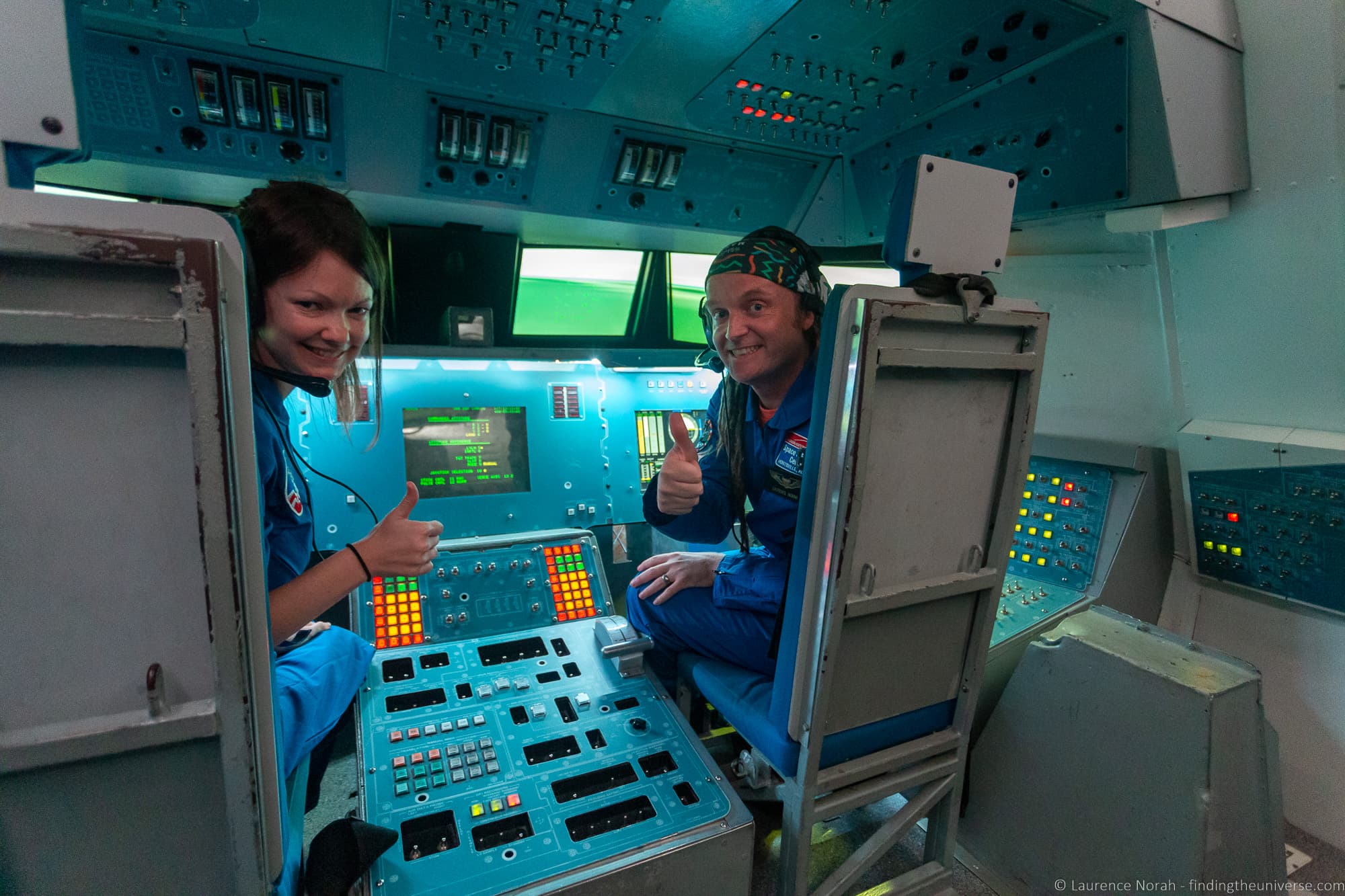
Space Tourism: How to Visit Space as a Tourist
Last updated: August 28, 2023 . Written by Laurence Norah - 4 Comments
Despite the name of this blog, I have been distressingly earth bound for all of my years thus far. Given recent developments in space exploration technology though, hope is not yet lost for the dream of going into space as a tourist – without having to shell out the millions of dollars that past tourists have paid!
In today’s post, I’m going to talk about a few things. I’m going to cover where space travel & exploration is today.
I’m going to talk about what options we have now, and may have in the future, for getting into space as a tourist. And I’m also going to cover a few ways those of us stuck on Earth without access to a giant pile of cash can still get our space fix around the world!
The State of Space Travel as a Tourist in 2023
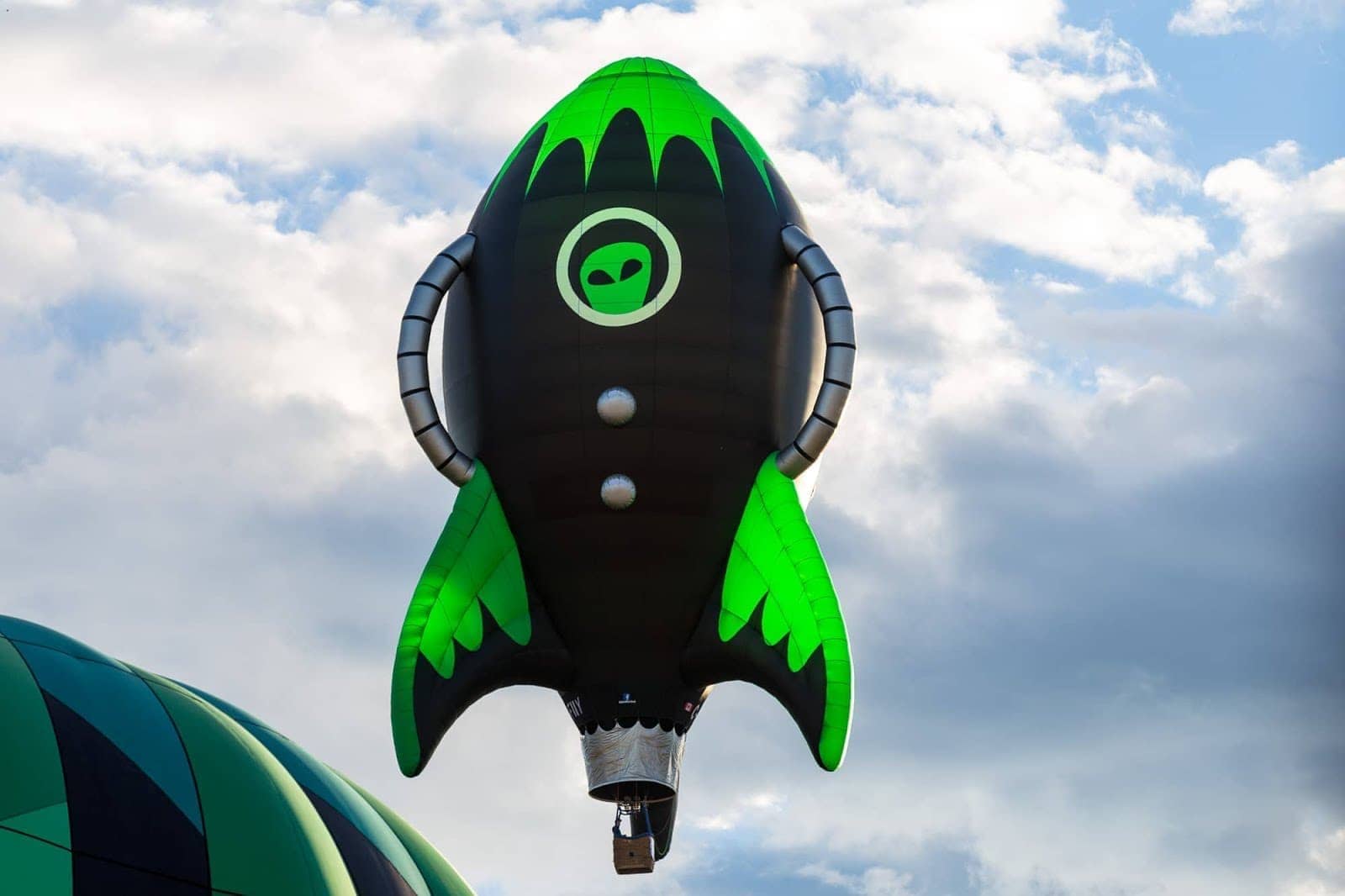
Huge strides are happening right now in space exploration, particularly with private companies looking at opening up space to your average person. Admittedly, right now, space tourism isn’t exactly accessible.
Up to 2009, only 7 people made it into space as tourists, all travelling with the Russian Space Agency, and all paying in excess of USD $20 million.
These weren’t exactly hop-on hop-off trips either, with the participants undergoing months of training, and many of them actively running their own experiments in space. So to call them space tourists is perhaps a bit of a misnomer.
However, things have now changed, and trips into space are becoming more affordable. Admittedly, they aren’t exactly “budget”, but they are less than $20 million a go.
So what’s changed?
Well, put simply, private investment. Whilst massive government organisations like NASA , the Russian Space Agency and the European Space Agency are always researching and expanding their space exploration efforts, their focus isn’t exactly on getting folks like you and me into space – at least not in the near term. Their focus is on long term scientifically focused exploration missions, with perhaps the most exciting being NASA’s Journey to Mars .
Other organisations though, see the potential for space based tourism as a way to generate funds and publicity for their projects. There are three main players in the space tourism business right now – Virgin Galactic , SpaceX and Blue Origin .
Let’s take a look at the main players with whom you have a real chance of getting into space within the next few years.
How to Go To Space As A Tourist
Other than flagging down a passing UFO Ford Prefect style, or signing up to be an astronaut with a government agency, getting into space is a bit tricky. But that’s all changing, and these are the companies with whom you are most likely to be able to travel into space.
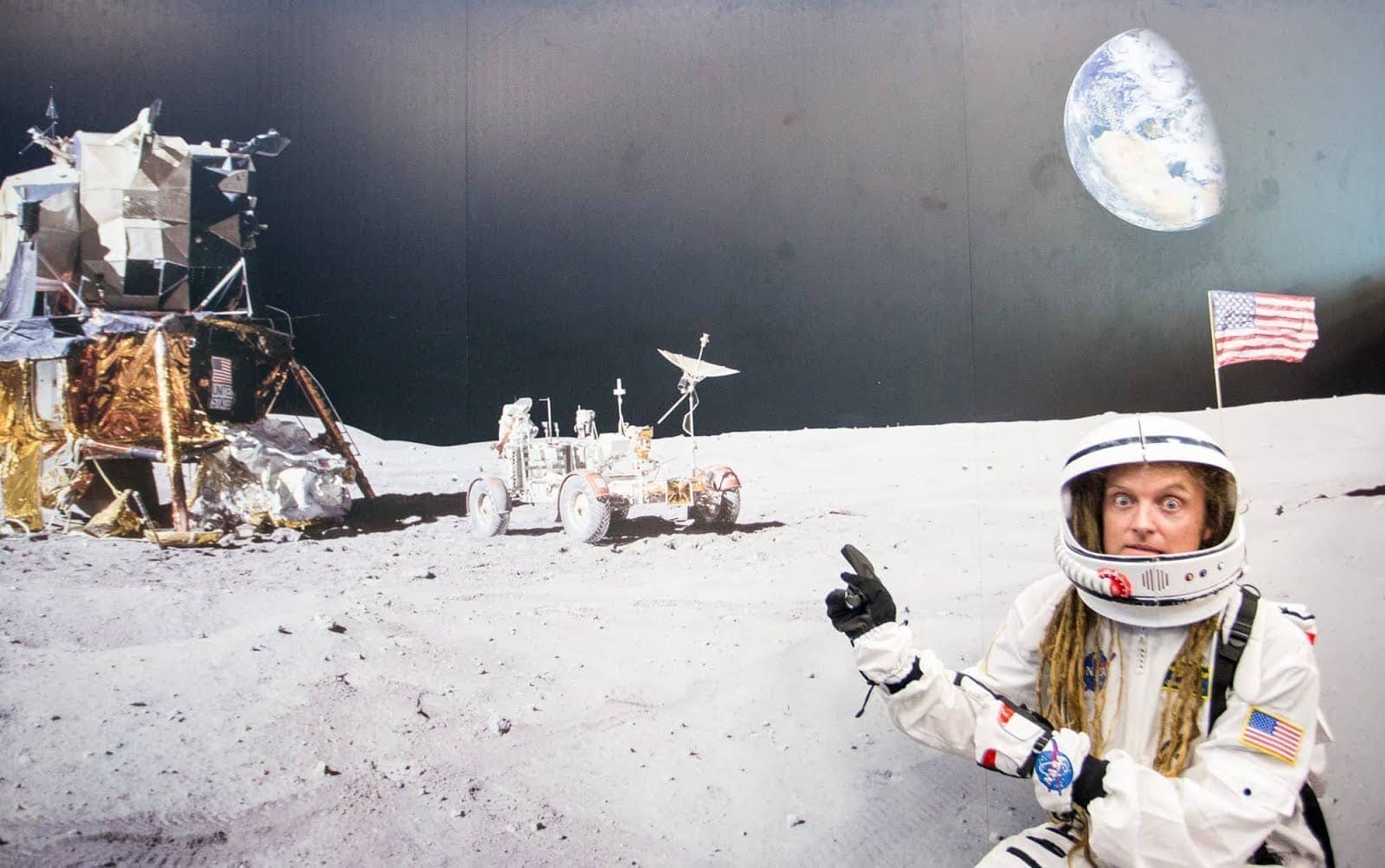
1. Virgin Galactic
Part of the Virgin Group headed up by Sir Richard Branson, Virgin Galactic currently offers sub-orbital flights to paying passengers aboard their SpaceShipTwo and SpaceShipThree craft.
Sub-orbital means that you’re not high enough to actually orbit the earth, but as the goal you do pass the 100km line that marks the edge of space, you will technically be in space, and also experience weightlessness. Hurrah!
The good news is that as of June 2023, commercial space flights have actually commenced. Trips are scheduled to go monthly, and you can now buy tickets for a voyage into space with Virgin Galactic. They are currently on sale for $450,000.
Admittedly, $450,000 USD isn’t exactly small change, but it’s a lot less expensive than the $20 million that previous space travellers have paid. For your money, you get three days of training at Spaceport America in New Mexico, a flight into space, a somewhat incredible view and a period of weightlessness. Not too bad.
2. Blue Origin
Owned by Amazon billionaire Jeff Bezos, Blue Origin is a private company which initially appeared to be focusing on sub-orbital flight, much like Virgin Galactic.
Unlike Virgin Galactic though, which uses a combination of a normal plane and a rocket plane to achieve the necessary space altitude, Blue Origin are using more conventional rocket technology, with a focus on re-usable components that cut the cost of launches.
Other than the spacecraft, the experience is largely the same – a sub-orbital flight that comprises a few days of training in Texas, a journey lasting around 11 minutes to up beyond the 100km line, weightlessness and some incredible views.
The technology to do this will look familiar to any fans of existing space flight technologies, including the capsule that returns to Earth by parachute, meaning that there are fewer technical hurdles to overcome.
As of 2021, flights have commenced on the New Shepherd, with Jeff Bezos being the first into space. The ticket for the first commercially available seat in the July 2021 launch was auctioned off for a cool $28 million.
Since that launch, there have been a number of flights with paying customers.
Regular pricing isn’t set, although it’s currently rumored to be around $1 million per seat. A timeframe for general availability of commercial flights isn’t yet known. You can sign up to be kept informed and updated however.
Perhaps even more excitingly than the New Shepherd program is its successor – the New Glenn program. This should offer longer duration, possibly even orbital flights, although details are currently sparse on the ground, with operations aimed to launch in late 2024. We do know however that priority on these trips will be given to New Shepherd customers.
Last in our trio of serious contenders for firms that will take your money and send you into space in the next few years is SpaceX .
SpaceX is owned by Elon Musk, who is particularly famous for being the CEO and co-founder of Tesla Inc, the electric car and battery manufacturer, amongst other things.
SpaceX largely focuses on commercial launch capabilities, with a particular focus on reusable rocket technologies that bring down the cost of putting payloads into orbit.
They’ve been hugely successful in this field, with multiple achievements, including being the first privately funded company to successfully launch, orbit and recover a spacecraft.
They were also the first private company to send a spacecraft to the International Space Station, and have since flown many missions to the ISS.
Whilst the majority of their work is on commercial and government contracts for putting things like satellites into orbit, some recent developments have put SpaceX firmly on the space tourism map.
First, in 2017 they announced that they had been contracted by two private individuals who want to go on a trip around the moon. This was originally due to launch in 2018, but has been postponed until at least 2024. It will be by far the most ambitious space tourism endeavor to date by any company, and you can read more about the project here .
SpaceX are also starting to sell tickets on their Crew Dragon capsule, which is the launch system NASA is using to shuttle astronauts to the ISS. These are not generally available, but a 3-day mission consisting entirely of tourists took place in 2021, with further missions expected. These are still priced in the tens of millions of dollars though, so don’t bank on these becoming affordable for a while to come.
Next, SpaceX is actively working on technology to colonise Mars, with a lofty goal of setting up a permanent colony on the red planet, home to over a million people, within the next 100 years.
Whilst the current estimate of cost for such a ride is in the region of $10 billion USD per person, SpaceX is aiming to bring that down to $100,000 through the development of their Interplanetary Transport System . This won’t happen in the near-term, but by the end of the century tourism to Mars might be a real possibility, with lunar and earth-orbital flights the norm by then.
4. Other Contenders
So those are the main players who, in my opinion, have the most realistic chances of taking you to space in the coming decade. But they aren’t the only players in the space tourism arena! Here are a few others to be aware of who might give you a chance of getting off Planet Earth.
Bigelow Aerospace: Bigelow Aerospace are actually a pretty major name when it comes to space technology, and if you ever happen to find yourself in a hotel on the moon or floating around the Earth, it’s likely going to be inside one of their inflatable habitats.
This isn’t theoretical either, they’ve got an inflatable capsule attached to the International Space Station already undergoing feasibility testing. Owner Robert Bigelow made his fortune in hotels, and he sees no reason why we can’t have them in space too.
Space Perspective: Space Perspective are taking a slightly different approach to everyone else, in that their route to space is to fly passengers 100,000ft above the ground in capsule carried aloft by a gigantic hydrogen filled balloon.
Ok, so 100,000ft isn’t exactly space, but it is high enough to see the curvature of the earth. It’s likely to be a more sedate and relaxed experience as well, compared to firing yourself into space on some sort of rocket at least. And whilst experiencing zero-gee isn’t going to be on the cards, you should be able to enjoy the views from the wraparound windows whilst enjoying a tipple from the on-board bar!
Tickets for 2024 flights have already sold out, but you can book for 2025 at a cost of $125,000 per person.
Boeing: Boeing are currently under contract with NASA to build a crew transport vehicle that would be compatible with a number of rocket systems, primarily for the purpose of shuttling astronauts to the ISS. It was originally due to start those flights in late 2018. However, testing did not start until late 2019, and the current timetable for crewed flights is now 2023.
As part of their contract, this CST-100 Starliner was specified to include one seat specifically for the purposes of space tourism , allowing one passenger to just tag along for the ride as it were. For a price, naturally. That price is currently unknown, although the original goal was to have it price competitive with the Russian Space Agency, so don’t expect it to come under the tens of millions mark!
Mars One: Mars One was an organisation with a goal of establishing a permanent human colony on Mars by the year 2035. Announced in 2012, it encouraged members of the public to sign up for the one-way mission, which resulted in over 200,000 applicants. That was whittled down to 100, and then a final 24 candidates.
Unfortunately, the project was dogged by criticism, particularly around the technical and financial feasibility of the plan. Finally, Mars One entered administration in 2019.
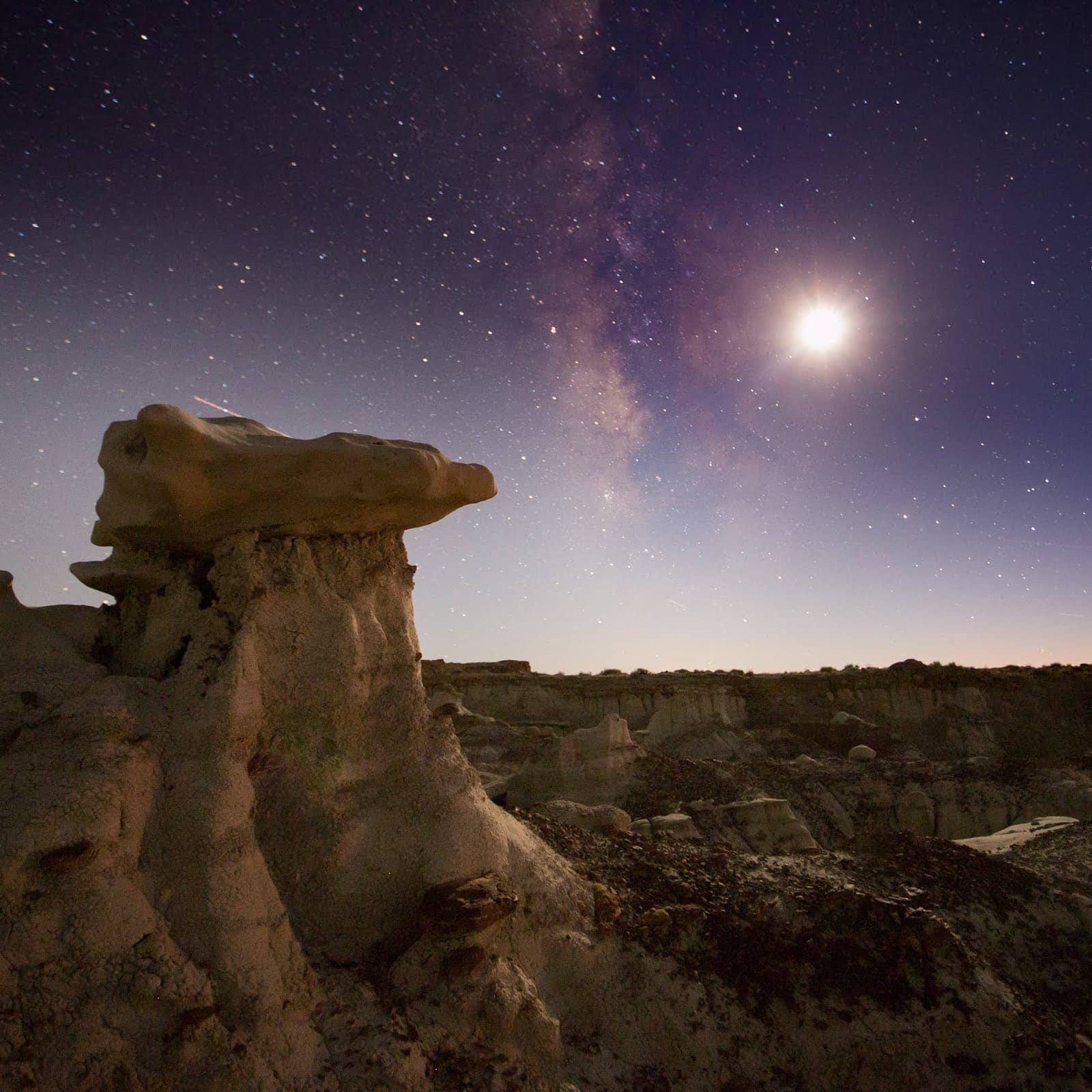
The Best Space Sights and Activities on Earth
Ok, so based on all the above, you’re probably realising that space is still a pretty tough place to get to right now, and even over the next few years it’s still going to be pretty darn expensive for a fairly brief jaunt.
Don’t fret though. Planet Earth is a pretty cool place, and there are a lot of space-related activities you can take part in without re-mortgaging your house and strapping yourself to a rocket.
Here are a few places you can learn about space and space travel in the meantime! Let’s look at these.
1. Active Spaceports
Whilst you might not get into space right now, you can still visit a spaceport and dream of the future! I’ve picked three spaceports for you to think about visiting.
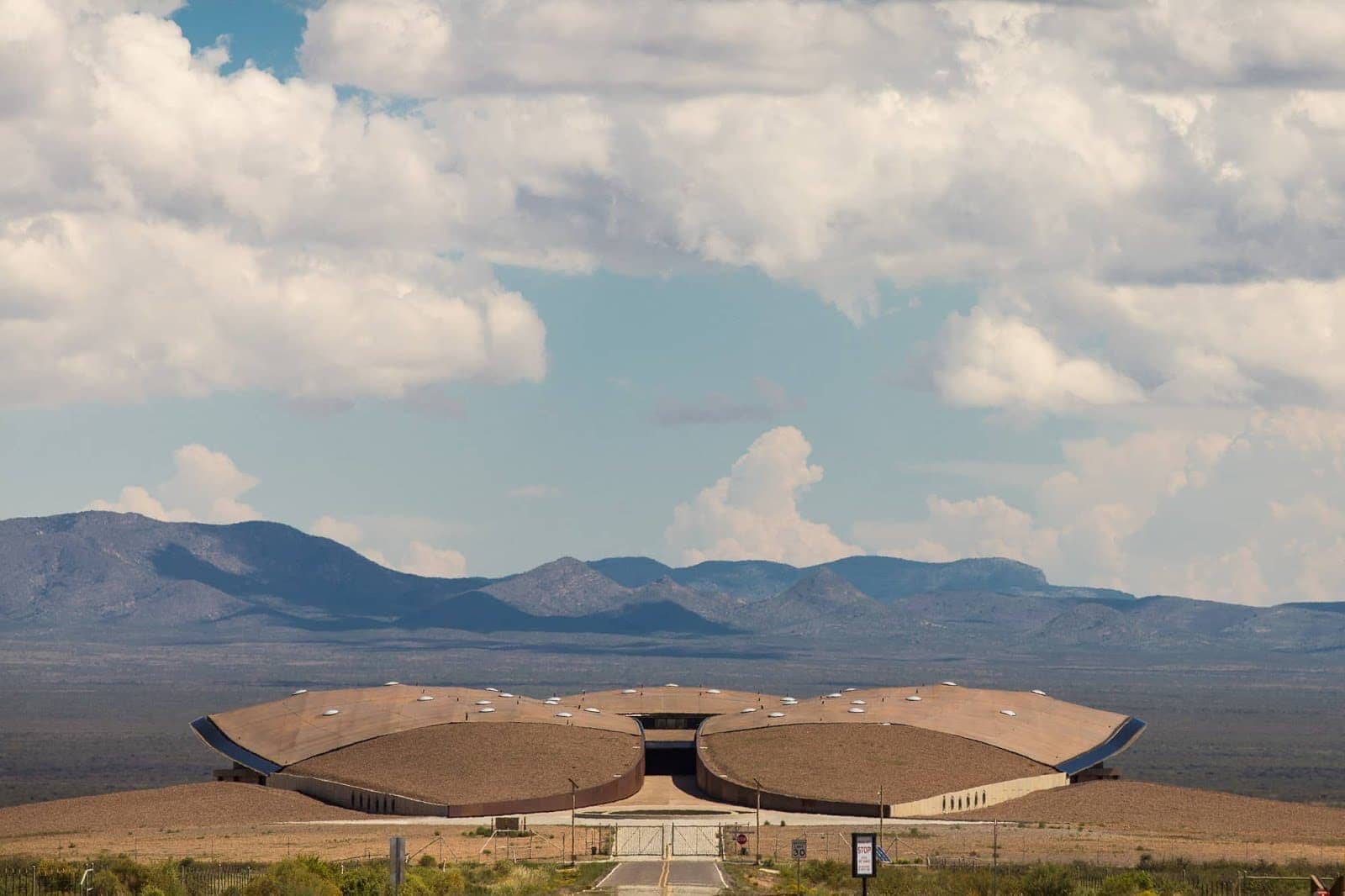
Spaceport America, USA. Set in the high New Mexican desert, Spaceport America is the world’s first purpose-built commercial spaceport, meaning it’s designed for commercial users. Yes, people like you and me. It’s the home base of Virgin Galactic, and is where that company will be operating from when they finally launch their space tourism flights. SpaceX also conduct some of their testing here. Unfortunately, you still can’t board a space trip here, but it’s a worthwhile place to visit, if only to get a tantalising glimpse of a possible future.
Kennedy Space Center, USA. Found in Florida, Kennedy Space Center is the main launch pad for NASA’s operations, and is where Apollo and Space shuttle launches took place. It’s a massive facility, spanning 144,000 acres. There’s a visitor centre on site, where you can learn all about NASA and it’s space operations, see an actual space shuttle and even experience a simulated space shuttle launch. Kennedy Space Center is still very much an active launch site, and you can also come here to watch rockets blast off into space – see their website for the launch schedule .
Baikonur Cosmodrome, Kazakhstan. One of the world’s most famous spaceports, and certainly the oldest and largest, Baikonur Cosmodrome is where the majority of Russia’s space program has operated from, including the first man into space, Yuri Gagarin. It’s still very active, and you can in theory visit, however prices are steep for a one day tour ($700+), and can only be arranged via a specialist tour operator in a complex process that needs to be booked weeks in advance.
2. Space Museums
As well as active space ports, there are a lot of museums around the world dedicated to sharing man’s activities in space. Here are a few of the best.
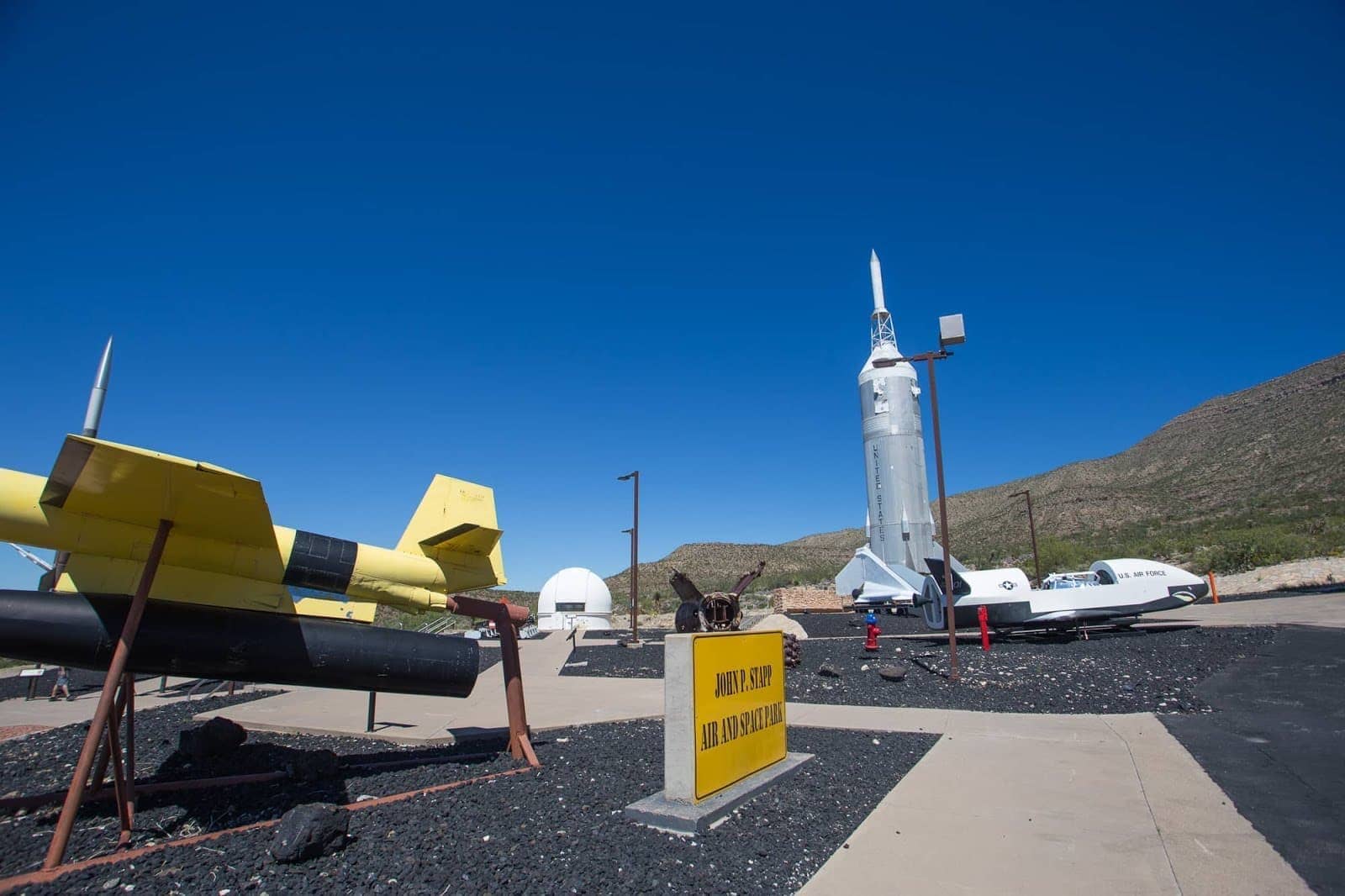
Space Center Houston, USA. The official visitor centre for NASA’s center for human spaceflight activities, Space Center Houston is an excellent place to come and learn all about NASA’s efforts around getting people into space. It has a number of artifacts from our explorations to date, including a lunar module replica and various actual capsules that have been into space. Tip – if you’re visiting a few sights in Houston, you can save money by investing in a CityPASS card which will get you into the Space Center as well as a number of other attractions in the city.
New Mexico Museum of Space History, USA. Found in Alamogordo in southern New Mexico, the five storey New Mexico Museum of Space History is full of information about man’s efforts to get into space, with everything from information on early rocket technology through to more modern day exhibits including a space shuttle landing simulator. It’s also home to the International Hall of Space Fame, a planetarium, and offers fantastic views across the White Sands National Monument.
Smithsonian National Air and Space Museum , USA . Found in Washington, D.C., this enormous museum is home to the world’s largest collection of historic aircraft and spacecraft in the world, including the Apollo 11 module and clothing worn by astronauts. With over 60,000 objects on display, you won’t run out of things to look at!
The National Space Centre, UK. Both a museum and an educational resource, the National Space Center in Leicester, UK, is home to six interactive galleries and the UK’s largest planetarium. A highlight though is the 42 metre high Rocket Tower , which houses a number of upright rockets, really giving you a feel for the enormity of these machines.
The U.S. Space and Rocket Center. Found in Huntsville, Alabama, right next door to NASA Marshall. The U.S. Space and Rocket Center has loads of information on the history of space flight, including two full size Saturn V rockets! This is also where you can attend Space Camp , a hands-on multi day training program for all ages, which will take you through a range of training similar to that which real astronauts do!
3. Space Themed Sights
We may be currently fairly stuck on the planet, but that doesn’t mean we’re not still hurtling through space, a small rock in a vast galaxy. Here are a few ways to help remind ourselves that there’s more out there than our horizon.

Meteor Craters. On our journey through space we regularly bump into errant lumps of space debris – around 100 tons a day in fact. Most often these lumps are so small (dust-specks really) that they just burn up in our atmosphere, creating beautiful shooting stars. However, anything larger than a marble has a chance of making to earth, although there are a lot of factors at work.
According to NASA , it’s the lumps that are around the size of a football field and up that make the most impact, and one of these hits us every couple of thousand of years. They can cause significant damage and leave a lasting impact. Two worth mentioning that you can visit are the aptly named “ Meteor Crater ” in Arizona, USA, and the Wolfe Creek Meteorite Crater in Western Australia. Both of these are around a kilometre in diameter, meaning you can see the whole structure with the naked eye and really get a feel for the force required to create such a hole. Of course you can also find smaller ones all over the world.
Star Gazing. You might not be able to get to the stars, but that doesn’t mean you can’t appreciate them. I always find that just lying back and staring into the vastness of space from a really dark location is a very powerful experience. You need to be somewhere far away from light pollution to get the best views of the night sky – there are dark sky preserves (and even festivals !) where you can get a great view, otherwise, head as far away from the lights as you can and just look up.
4. Giant Telescopes
How about if you can’t get into space, you try just looking at it through a really big magnifying glass and pretend you’re there? It might be as close as you can currently get to space for free, whilst also being wowed by humanities technological accomplishments. Below are four locations around the world where you can learn all about the art of looking into space. Of course, there are many more sites around the world and you can find a list of some of the major telescopes here although not all can be visited by the public.
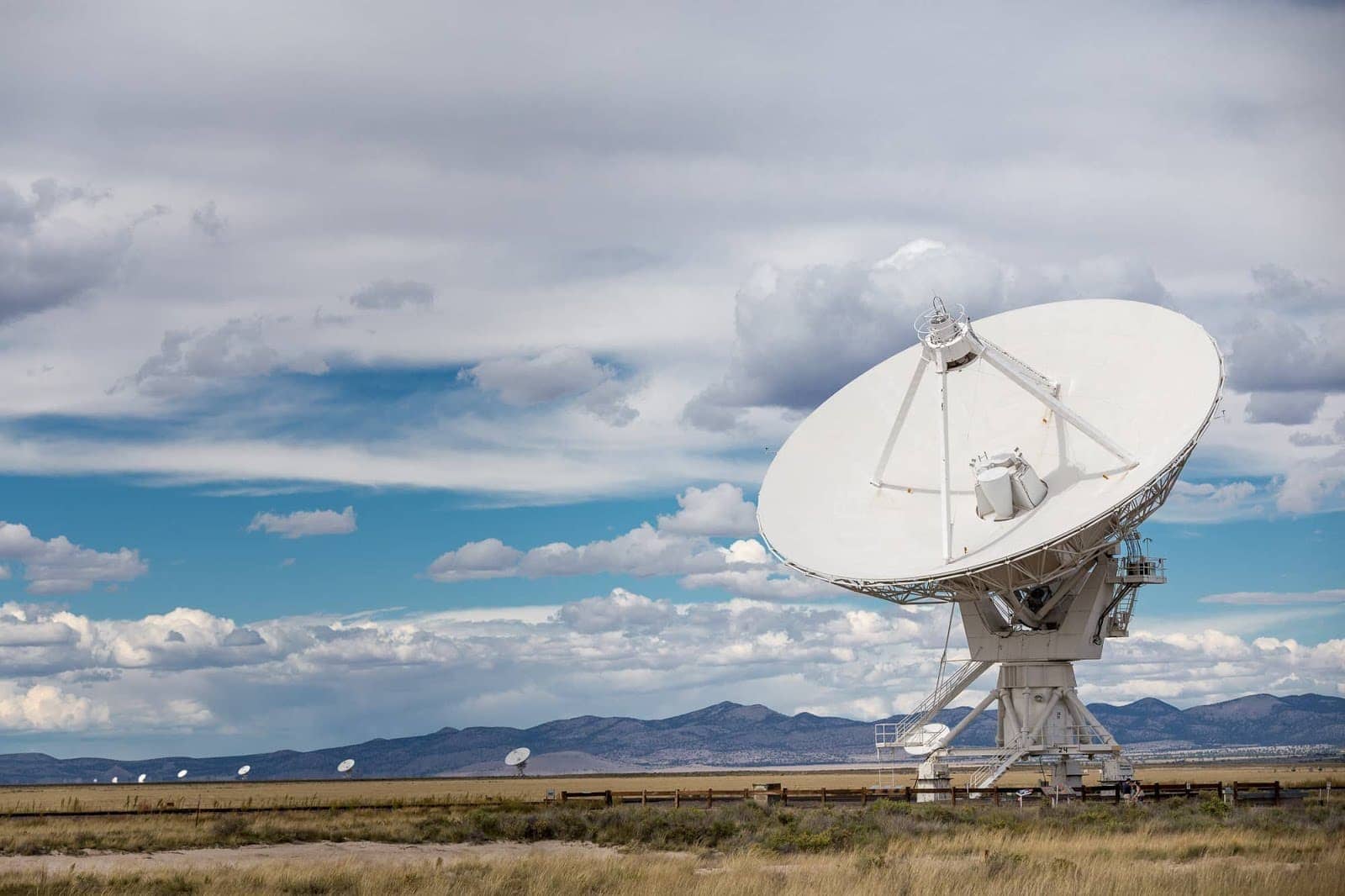
The Very Large Array, USA. Far out in the New Mexico wilderness, the Very Large Array is one of the world’s largest and most impressive radio telescopes. Unlike an optical telescope, which look at visible light waves, a radio telescope looks at radio waves, and from that we can learn all sorts of things from how black holes are formed through to the creation of the universe itself. These radio waves require a very large telescope, which is why the VLA is actually made up of 27 dishes, which work together to capture radio waves. There’s a small visitor centre and self-guided walking trail, and there are guided tours on the first Saturday of the month. See the official website for more details.
Jodrell Bank, UK. If you’re in the UK , then a trip to Jodrell Bank is a good option for viewing impressively large radio telescopes. In fact, Jodrell Bank is home to the world’s third largest steerable radio telescope, as well as a number of other active telescopes. There’s a visitor centre where you can learn all about the telescopes, and all sorts of other space-related things.
The Very Large Telescope, Chile. Way up high in the mountains of Chile is the world’s most advanced visible-light astronomical observatory – the aptly named “ Very Large Telescope ”. Operated by the European Southern Observatory, this is the most impressive optical instrument in the world to date, consisting of four main mirrors that are over eight meters in diameter, as well as four 1.8m diameter mirrors. These work together to create a final image, and the telescope is powerful enough that it would be able to make out a cars headlights on the moon. It’s fairly remote, what with it being on a mountain top in Chile, but you can visit – check here for more information on tours.
Green Bank Observatory, USA – At time of writing, Green Bank Observatory is home to the worlds largest steerable radio telescope, the Green Bank Telescope. Constructed in 2001, it’s one of the newest US telescopes, and with a total collecting area of 2.3 acres, is certainly impressive to behold. You can take a tour of the observatory, and there are also weekly and monthly events at the site.
5. Extra-terrestrial spots
If you’re really desperate to get off planet, you might want to frequent a location which has a history of extra-terrestrial activity such as UFO sightings. Whilst E.T. is yet to make formal contact, who knows, you might get lucky and have the chance to hop on a passing spaceship!
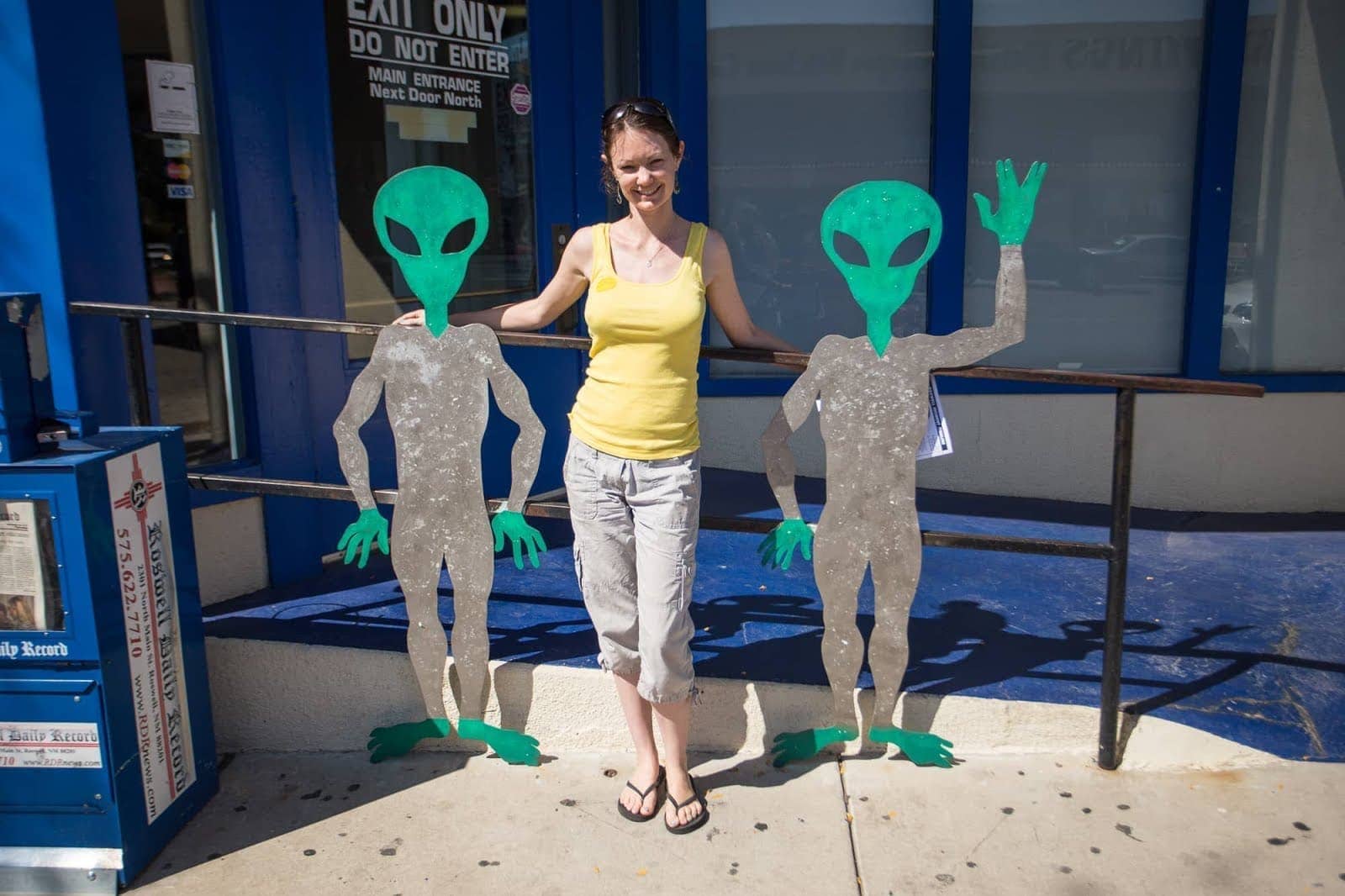
Roswell, USA. If you want to learn about aliens, then the town of Roswell in New Mexico has definitely got to be on your list. It became famous as the alleged site of a huge government cover-up of a supposed alien spaceship crash at a nearby ranch property, and the town has since embraced it’s position as the world’s most famous UFO hotspot. There are a number of alien themed attractions here – we’d recommend visiting the Roswell UFO museum as a good starting point.
El Enladrillado, Chile. Central Chile is well known as a UFO spotting hotzone. So much so in fact, that the country’s national tourism board established a UFO trail, a 30km long designated trail in the Andes mountains that centres around the town of San Clemente. This is definitely a good place to come to spot UFO’s, although the national tourism authority is keen to stress that a sighting isn’t guaranteed.
Nullabor Plain, Australia. When I was travelling in Australia, I had a memorable evening out in the outback on the vast Nullabor Plain with a chap who was convinced he was regularly visited by aliens. He might have been on to something of course, with this region of Australia being particularly famous for UFO sightings. And if you don’t see a UFO, fear not, the star gazing here is pretty epic too!
HR Giger Museum, Switzerland. If you prefer your aliens of the fantastical science fiction type, then a visit to the HR Giger museum in Gruyères, Switzerland, should definitely be on your list. It’s home a large collection of works by Swiss artists HR Giger, who famously created the monsters from the sci-fi classic horror movie Alien (and its sequels). Definitely one for the sci-fi fans.
Further Reading for your Space Trip
Well, that was a lot about space. Hopefully you’ve learnt a bit about your options for getting into space as a tourist, as well as some slightly more cost-effective ways to get your space fix on! Here are a few resources that you might find useful.
- Our favourite sights along the New Mexico Space Trail , USA. Plus a guide to attending the Albuquerque International Balloon Fiesta if you’re in New Mexico.
- Our guide to visiting Jasper National Park for their annual Dark Sky Festival
- A guide to attending Space Camp USA , as well as visiting the U.S Space and Rocket Center
- Official websites for Virgin Galactic , Blue Origin and SpaceX , for when you’ve saved up enough for that ticket to space
- The NASA Instagram feed , for mind blowing space images
- John Glenn’s memoir, to give you an insight into what it was like to be the first American to orbit the earth.
- Chris Hadfield’s book “ An Astronaut’s Guide to Life on Earth ”, helping you understand how to make the impossible a reality, which seems like a good place to end this post!
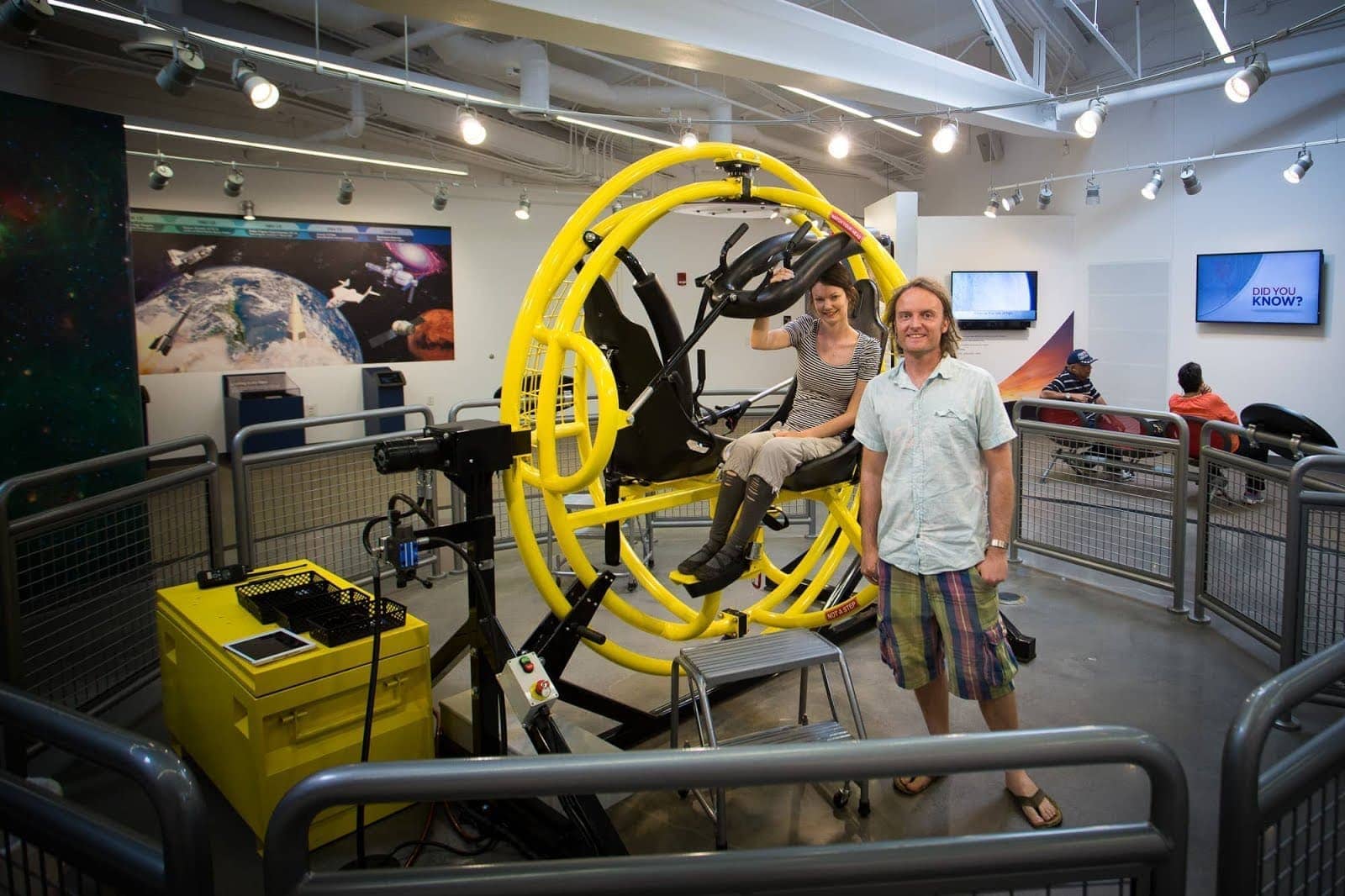
Well, that was a lot to write about space travel and space tourism! We’re not quite there yet, but with the pace of developments I see no reason why, in the coming years and decades, that I won’t finally be able to realise my dream of heading up into space for real. Let me know in the comments if heading into space is a dream of yours!
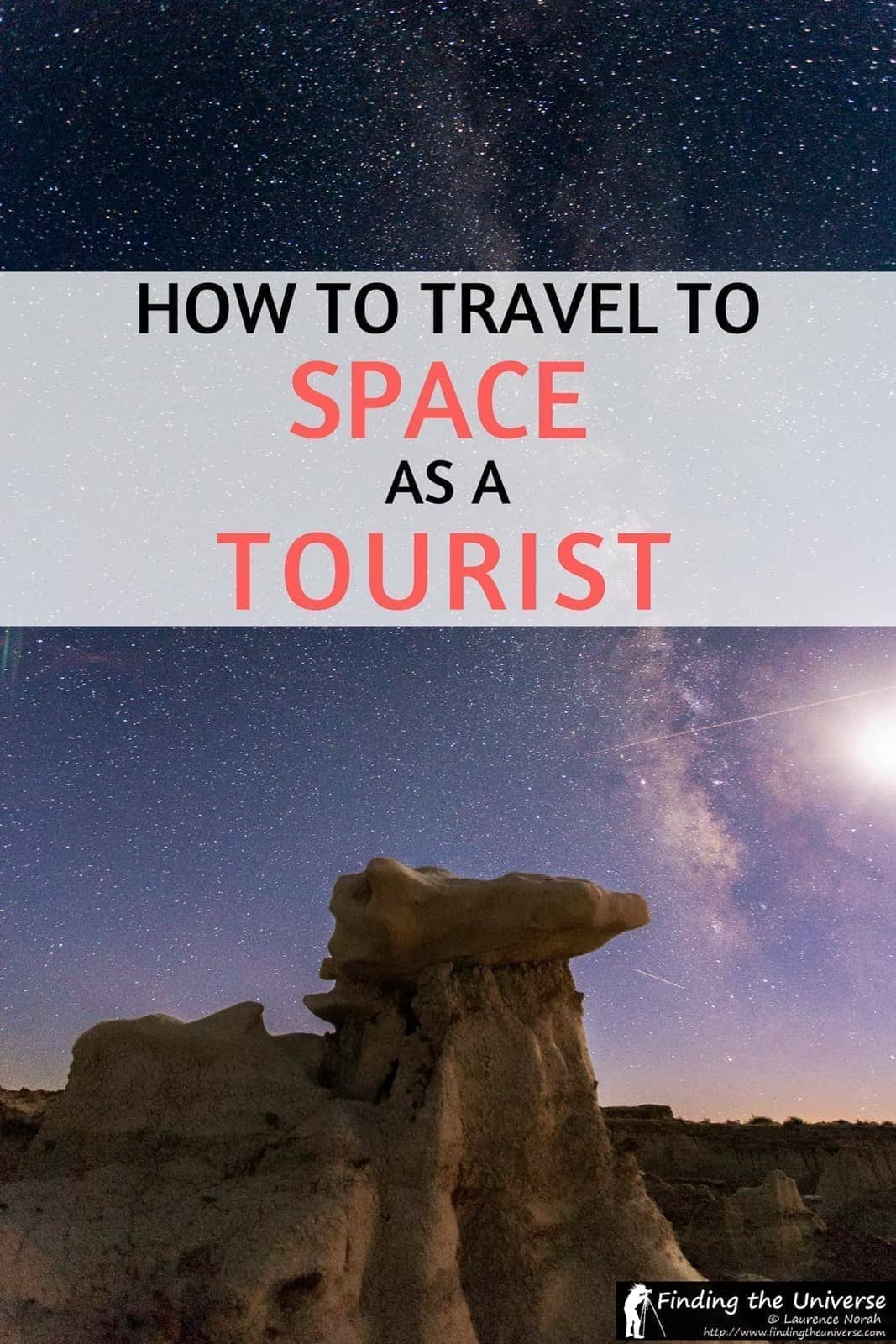
Enjoyed this post? Why not share it!
There are 4 comments on this post
Please scroll to the end to leave a comment
Lynn Magnuson says
17th February 2024 at 8:16 am
Traveling into space is something I’ve wanted to do ever since I was a child. I remember sitting in class and I think it was the third grade and watching Alan Shepard blast off. I knew at that point that someday I wanted to do the same thing. It hasn’t happened yet, but as time goes by the chance to do so, becomes more and more a possibility. I hope someday I do get the chance.
I love your article. Very well written and very informative. Keep up the great writing. That’s another thing I share a passion for. Writing
Laurence Norah says
20th February 2024 at 1:45 am
I’m right there with you! I really hope you get the chance to get into space some day soon. It’s definitely getting closer as a possibility 🙂
Safe travels, be they earthbound or not!
roshmand says
2nd July 2023 at 6:57 pm
amazing poat. thanks
4th July 2023 at 9:39 am
thank you very much 🙂
Leave a Reply Cancel reply
Your email address will not be published. Required fields are marked *
Let me know when there's a reply to my comment (just replies to your comment, no other e-mails, we promise!)
Subscribe to our monthly Newsletter where we share our latest travel news and tips. This also makes you eligible to enter our monthly giveaways!
We only ask for your e-mail so we can verify you are human and if requested notify you of a reply. To do this, we store your data as outlined in our privacy policy . Your e-mail will not be published or used for any other reason other than those outlined above.
- Search Please fill out this field.
- Manage Your Subscription
- Give a Gift Subscription
- Newsletters
- Sweepstakes
- Space Travel + Astronomy
Space Tourism Is Here: Booking a Trip to the Final Frontier
The next era of space exploration and innovation is here — and we're all invited. A billionaire space race is underway as Blue Origin, Virgin Galactic, SpaceX, and others are testing the technology to take us to places previously visited only by highly trained astronauts. Space tourism is officially taking flight, and it might just save the Earth.
:max_bytes(150000):strip_icc():format(webp)/Jamie-Carter-618d9aa6e45f4ecf9b9dcaabbec68029.jpg)
In July 2021, we watched as Richard Branson and Jeff Bezos took to the skies in a giant leap for the space tourism industry, but their launches to the edge of space weren't timed particularly well. Against the backdrop of a global pandemic and climate emergency, two billionaires taking joy rides to space may not have been good optics, but don't underestimate what just happened — and how important it could be for the future of humanity.
With the first crewed launches of Virgin Galactic's supersonic space plane and Blue Origin's reusable rocket, a world of commercial space travel is taking its first step. Both companies plan to begin regular, scheduled trips for paying space tourists in the near future, but their visions stretch back many years to the beginning of human spaceflight.
The Space Race: Then and Now
Bezos's Blue Origin chose an auspicious day to send its first crew to space. July 20, 2021 was exactly 52 years after Apollo 11 astronauts Neil Armstrong and Buzz Aldrin became the first humans to walk on the moon. But that wasn't the only major space travel anniversary celebrated in 2021.
April 12 was the 60th anniversary of Russian cosmonaut Yuri Gagarin becoming the first human to not only reach space, but also go into orbit around Earth. Meanwhile, May 5 saw the 60th anniversary of NASA's Freedom 7 mission, which launched Alan Shepard on a suborbital flight that lasted 15 minutes. He reached an altitude of 101 miles to become the first American in space before his capsule parachuted to splashdown in the ocean.
The name of Blue Origin's New Shepard launch system is no coincidence. Its mission profile is almost identical to America's inaugural 1961 spaceflight, save for billionaire-grade comfy seats and large windows. From Launch Site One near Van Horn in the West Texas desert, that rocket fires a capsule containing up to six people (but no pilot) into space, which then parachutes down 15 minutes later.
The Virgin Galactic experience is different. Its supersonic rocket-powered spaceplane SpaceShipTwo VSS Unity seats six passengers and two highly trained pilots. It takes off on a runway from Spaceport America near Truth or Consequences, New Mexico, while strapped to a mothership. At 52,000 feet, it detaches and burns its rocket engine for one minute to reach Mach 3 speeds and touch the edge of space. After a few minutes of weightlessness (and a chance for passengers to see the curvature of Earth against the blackness of space), it glides back to land on a runway.
The Price for a Ticket to Space
These short trips are anticipated to cost between $250,000 and $500,000, but in January 2022, expect to see a truly out-of-this-world private trip to space with an even more astronomical price tag. It will come from the other, arguably much more important billionaire in the space tourism bubble: Elon Musk. Axiom Mission 1 will see his company, SpaceX, launch four private astronauts on behalf of Houston-based space tourism company Axiom Space. An American real estate investor, a Canadian investor, a former Israeli Air Force pilot, and an ex-Space Shuttle pilot will launch on an incredible orbital mission in its Crew Dragon spacecraft.
At $55 million per ticket, this is ultra-aspirational space tourism of the highest order. "The experience is drastically different because they will be launching on a SpaceX rocket and going to the International Space Station (ISS) for 10 days," says Christina Korp, cofounder of Space for a Better World . "They will be doing what real astronauts do, and I don't think it's an accident that Virgin Galactic and Blue Origin did their flights before Axiom's mission." Axiom Space intends to launch a private space station — the first "space hotel" — as early as 2024 to give space tourists somewhere to visit.
The Future of Space Tourism — and of Our Planet
Musk talks of Mars colonies and humanity spreading out into the cosmos, but since 2012, SpaceX has made a lot of money from NASA contracts to launch supplies to the ISS. In the summer of 2020, it began ferrying NASA astronauts there, too. SpaceX's Starship — currently being tested — will land two NASA astronauts, the first woman and the next man, on the moon in 2024.
You see, space tourism is just a sideshow to a bigger and more worthy goal of saving the planet. Next year, Blue Origin plans to test its reusable New Glenn rocket — named after John Glenn, the first American to orbit the Earth in 1962 — which will be able to take cargo and astronauts into orbit. Bezos has said he thinks we need to go to space to save Earth, specifically by protecting the planet from pollution by moving heavy industry into space. That can only happen when space travel is safe, scheduled, and affordable. Space tourism will help create a competitive space economy, just as mass tourism has lowered the cost of flying.
Similarly, Branson's aim is to increase access to space. "We are at the vanguard of a new space age…Our mission is to make space more accessible to all," he said after his inaugural flight. A microgravity experiment was on board that first flight on July 11, with similar plans for all subsequent trips. Meanwhile, sister company Virgin Orbit's LauncherOne sends small satellites and science payloads into orbit via a small rocket launch from underneath the wing of a Boeing 747.
The scientific spin-offs for all of us down on Earth are currently unknown, but the space community has an incredible track record when it comes to innovation. "Clean energy as solar power is from the space program," says Korp. "Solar panels were invented to power satellites and refined to power spacecraft." Cue GPS, weather forecasting, telecommunications, and even internet access. There are also fleets of satellites large and small that observe how our planet is behaving and changing. "It's the space industry that's monitoring climate change, tracking hurricanes, and learning how to survive in the extreme environment of space — including experiments to grow food with almost no water, for example," says Korp. Every single space mission, including suborbital and even zero-gravity flights, have environmental experiments on board as default.
"This is not about escaping Earth," said Bezos after the flight. "The whole point is, this is the only good planet in the solar system and we have to take care of it." Bezos wants to scale up into affordable space travel. That will enable long-term, commercial projects that ultimately may help prevent further climate change, or at least help us cope with its consequences.
However, Blue Origin, Virgin Galactic, and SpaceX won't be the only way to reach space. Russian space agency Roscosmos is expected to take "citizen space explorers" to the ISS soon, but the most affordable way to get "black sky time" may be with Space Perspective , which will launch a pressurized capsule propelled by a high-performance space balloon.
The six-hour flight will cost around $125,000 per person and launch from Space Coast Spaceport in Florida in 2024. "Unlike short-lived, adrenaline-fueled moments of weightlessness, Space Perspective flights bring you space calm," says Jane Poynter, founder, co-CEO, and CXO of Space Perspective. The flights on Spaceship Neptune involve a gentle ascent at just 12 miles per hour for a six-hour tour of Earth's biosphere, culminating in a view of our beautiful planet from space.
Space tourism is here at last. Instagram had better get ready for "Earth selfies."
Program Credits
Editorial Lead: Elizabeth Rhodes Contributors: Jamie Carter and Stefanie Waldek Visuals Editor: Mariah Tyler Art Director: Jenna Brillhart Designer: Sarah Maiden
Related Articles
- Virtual Events
- BBC Astronomy
- How we review
- Telescope mounts
- Finderscopes
- Astronomy accessories
- Top astro kit
- Astronomy for beginners
- Astronomy DIY
- Buyers' guides
- Online Planetarium
- Astronomy news
- Astrophoto guides
- Send us your images
Want to go to space? Here's how you can
Have you ever wanted to travel into space? It's theoretically possible. Here are the various options, and how much it will cost you.
Ezzy Pearson
Have you ever wanted to go to space? Is it your dream to leave Earth behind and travel the cosmos? These days getting to space is becoming more of a reality for non-astronauts, even if the cost of doing so remains astronomical.
Go back 60 years and the idea of anyone going into space was little more than a dream. Today, more than 550 people have achieved this ambition, journeying beyond our planet and into low Earth orbit.
For decades it’s been governments footing the bill for training and flying astronauts, but that could all be about to change as space tourism becomes more of a reality over the coming years.
Private spaceflight is on the verge of being able to regularly carry private passengers into space, allowing anyone who wants to travel to the stars to do so – provided they have the money, that is.
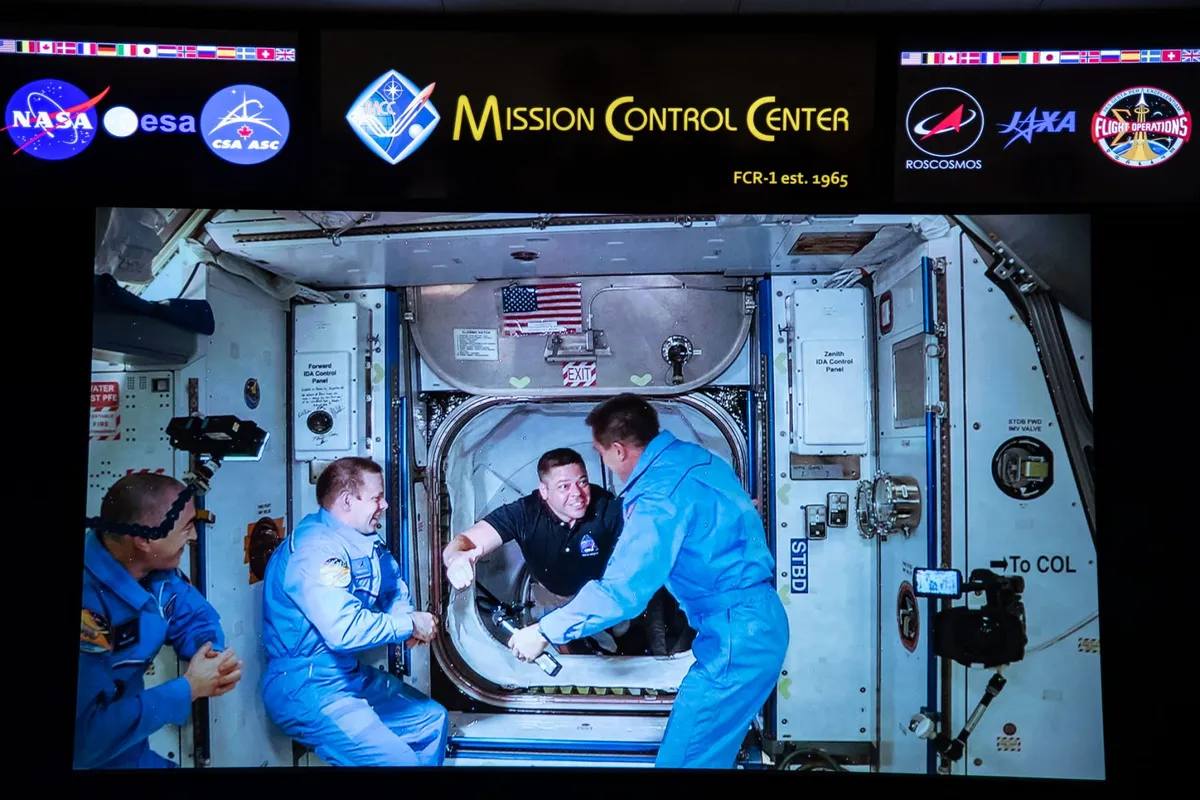
What companies are sending tourists to space?
The private company closest to sending people into space is SpaceX. In fact, it has already done so, having completed the first successful crewed flight of the Crew Dragon modules in August.
Rival Boeing isn’t far behind and hopes to have its own Starliner spacecraft certified for human spaceflight by the end of 2021.
Both companies are remaining tight-lipped about their fees, but a 2015 NASA estimate put the cost of a round trip ticket to the International Space Station (ISS) on a Crew Dragon or Starliner module at around $58 million.
Though both companies built the spacecraft to ferry astronauts to and from the ISS, they also plan on selling flights to whoever can afford it, be they academic institutions hoping to conduct research in orbit or deep-pocketed individuals wanting to take the ultimate trip.
Getting into space: your options
Visit the international space station.

NASA is already anticipating the coming boom of private passengers, announcing back in March that the American space manufacturer Axiom would be building an ISS module to accommodate them.
Axiom is also helping to facilitate flights to the station. Their first, which will take 3 private astronauts to the International Space Station , is planned for mid 2021. There’s still a seat going spare but you’ll have to pay the $55 million price tag on the ticket.
If your budget can stretch to the billions rather than the millions, however, you can always approach private space exploration companies direct for something a little more bespoke than an off-the-shelf flight.
Take a trip around the Moon
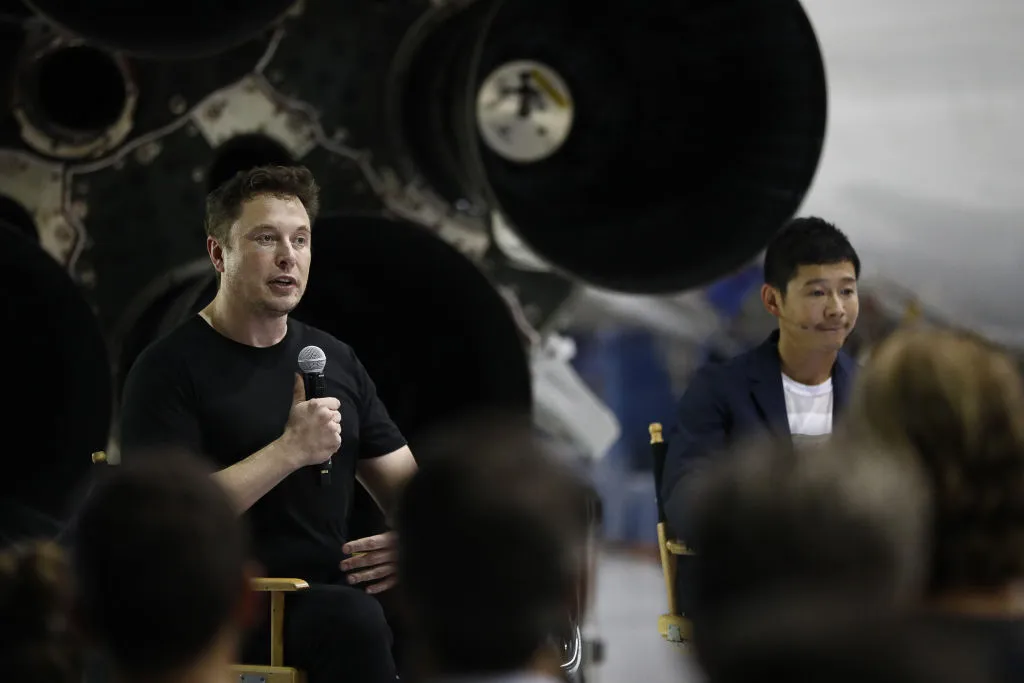
Space X is currently working with Japanese billionaire Yusaku Maezawa on such a mission, called #dearmoon , which will send 6 to 8 passengers on a flight around the Moon.
Maezawa is even giving away his seats, but you’ll have to be a world-class artist to stand a chance of getting one; his plan is for all the passengers to create works of art attempting to convey the experience of being in space to the world.
Reach 'outer space' with Virgin Galactic
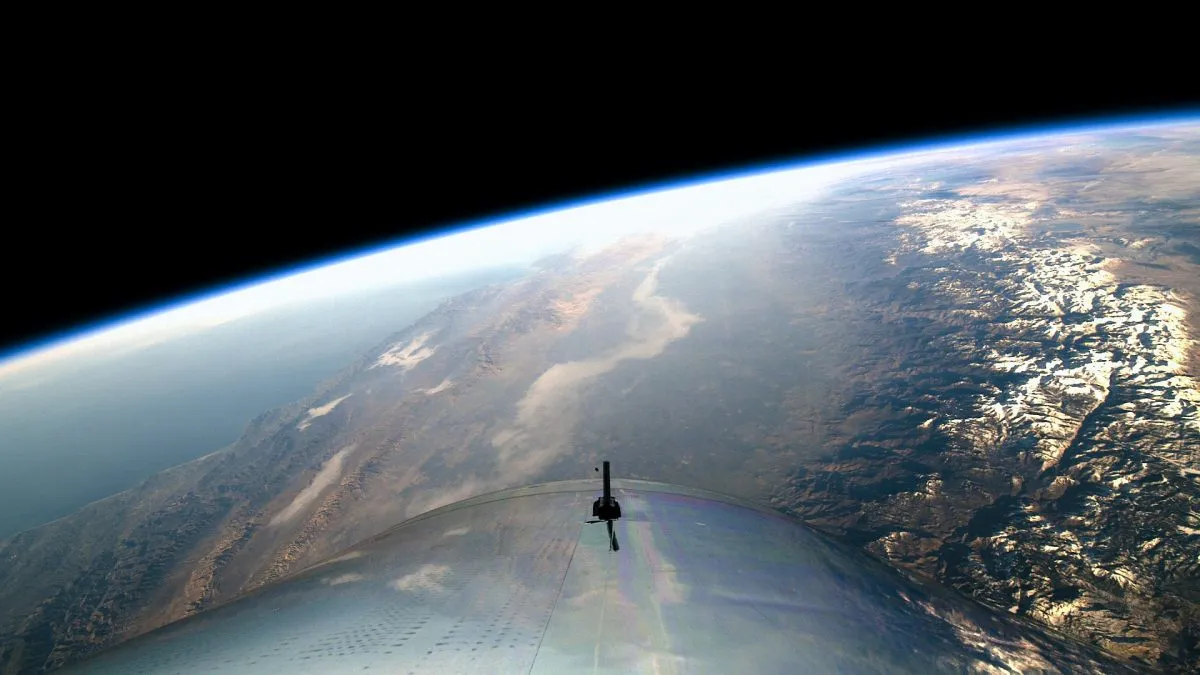
At the other end of the fee scale, relatively speaking, is the option of taking a sub-orbital flight with Virgin Galactic .
The company promises passengers three things: to cross the boundary into outer space 100km above Earth’s surface; to let them see the curvature of Earth; and at least 5 minutes of free-floating weightlessness.
After years of postponements, founder Richard Branson has announced that he hopes to take his own first flight in early 2021, before working down the list of 600 people who have purchased a ticket at the early-bird price of $250,000.
Become an astronaut
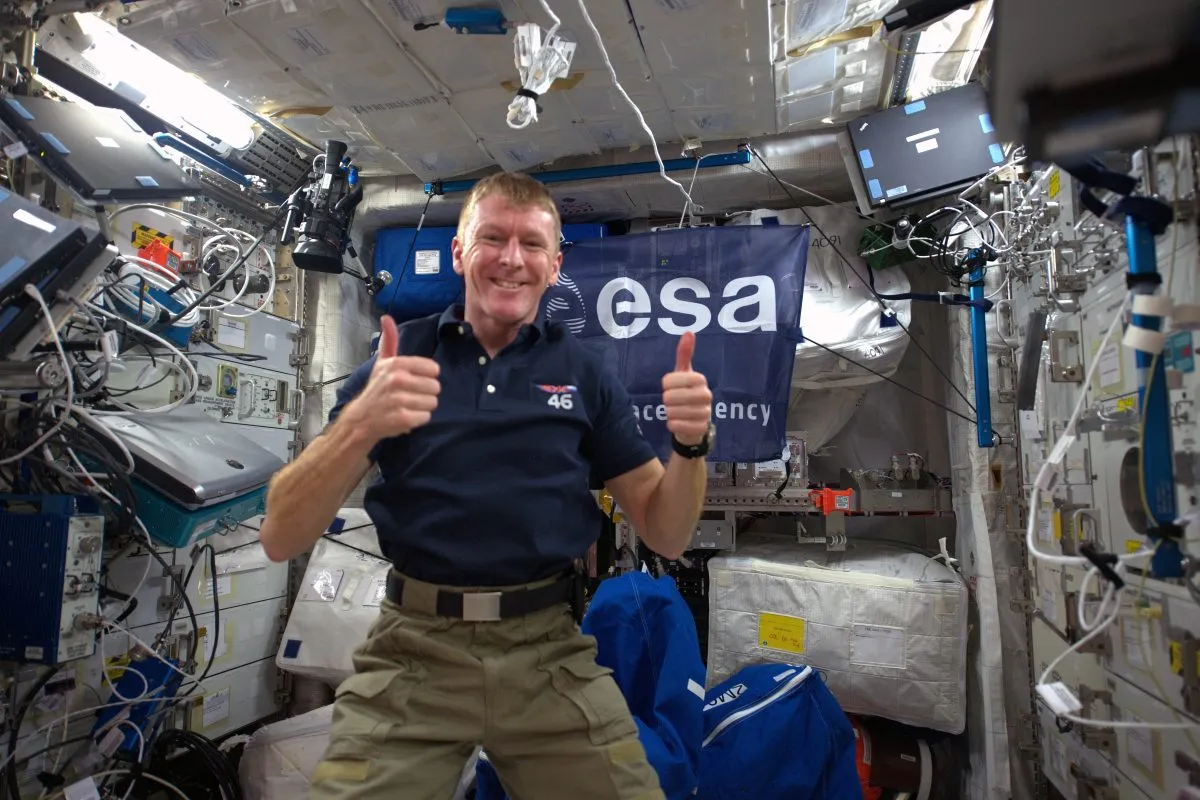
While it’s nice to daydream, the reality is that most of us could never afford even the 6-figure option. There is one more possibility, however: become a professional astronaut.
All you need is excellent physical health; a masters in a physical science, engineering or medicine; several years of work experience; a decorated military history; or over 1,000 hours of flight experience. Easy, eh?
If you’re applying to NASA, who select around a dozen candidates every few years, then you’ll need to have US citizenship. For more on this, read the guide to becoming a NASA astronaut .
For Europeans there might be a bit more of a fight, as the European Space Agency (ESA) hasn’t selected a new class of astronauts since 2008, when 8,414 people applied for just 6 places.
Rumour has it that the agency will be sending out a call for new astronauts in 2021, so it might be time to start working on the CV.For more on this, read the ESA guide to becoming an astronaut .
Which non-astronauts have been to space?
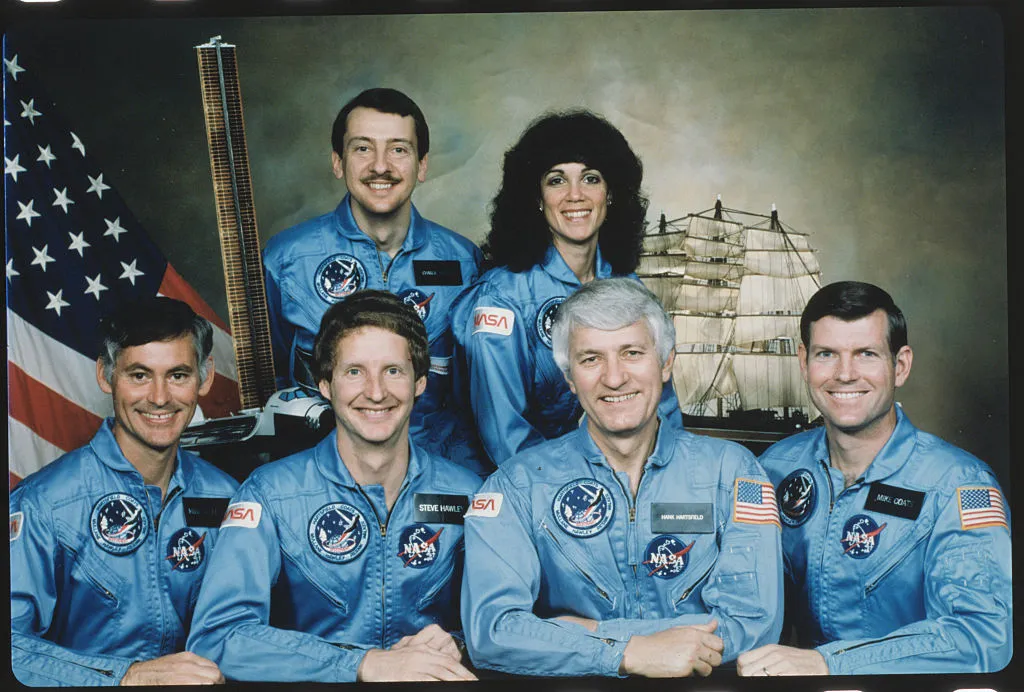
In 1984, American citizen Charles D Walker became the first non-government sponsored person to reach space.His employer, aerospace company McDonnell Douglas, paid for him to fly on three Shuttle missions.
NASA charged just $40,000 per flight, though the company spent around $20 million of its own money training him.
Most private spaceflights, however, were not flown on NASA's Space Shuttle but on the Russian Soyuz .
In the 1990s, the Soviet Union’s wider financial problems left its space agency with a shortfall in its ledger, making it more than willing to accommodate paying customers.
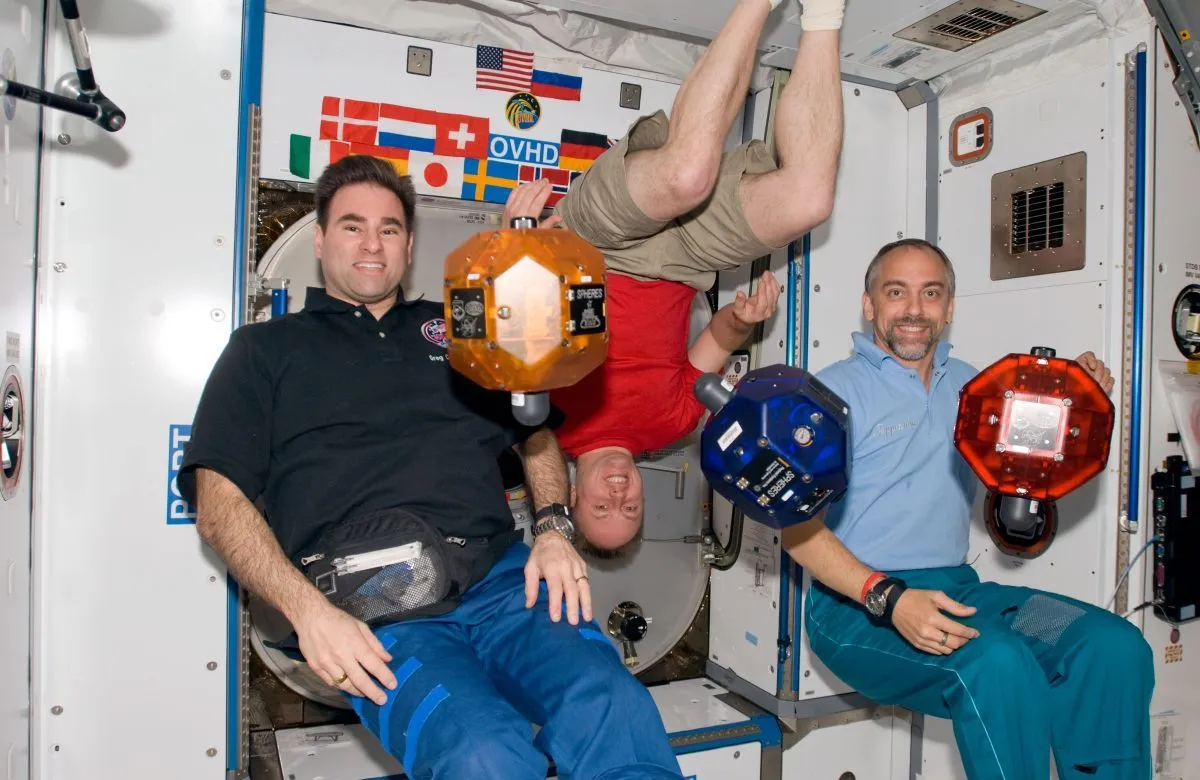
In 1990, a Japanese broadcasting company paid for reporter Toyohiro Akiyama to fly to the Mir space station, and a few years later Helen Sharman had her flight paid for by various sponsors, becoming the UK’s first astronaut.
In 1998, Space Adventures began working with the Russian space agency to broker future flights to the International Space Station (ISS).
Since then, the company has trained and flown seven individuals, including the second person to wear the British flag in space, gaming entrepreneur Richard Garriott.
In all these flights, the individuals did more than just float around, looking at the view.Instead, they helped to conduct research and experiments, or put on outreach events to educate those back on Earth.
Ezzy Pearson is BBC Sky at Night Magazine's News Editor. This guide originally appeared in the November 2020 issue of BBC Sky at Night Magazine .
Share this article

Science journalist

- Terms and conditions
- Manage preferences
We have emailed you a PDF version of the article you requested.
Can't find the email?
Please check your spam or junk folder
You can also add [email protected] to your safe senders list to ensure you never miss a message from us.
How Far From Earth Can Humans Travel Into Space?
Complete the form below and we will email you a PDF version
Cancel and go back
IFLScience needs the contact information you provide to us to contact you about our products and services. You may unsubscribe from these communications at any time.
For information on how to unsubscribe, as well as our privacy practices and commitment to protecting your privacy, check out our Privacy Policy
Complete the form below to listen to the audio version of this article
Advertisement
Sign up today to get weekly science coverage direct to your inbox
© 2024 IFLScience. All Rights Reserved
Newsletters in your inbox!
Subscribe today for our Weekly Newsletter in your inbox!
Dr. Alfredo Carpineti
Senior Staff Writer & Space Correspondent
Alfredo (he/him) has a PhD in Astrophysics on galaxy evolution and a Master's in Quantum Fields and Fundamental Forces.
Book View full profile
Book Read IFLScience Editorial Policy
DOWNLOAD PDF VERSION

Space travel as far we currently understand it is complicated. Fer Gregory/Shutterstock.com
As of 2021, Americans James Lovell, Fred Haise, John Swigert are the three people who have traveled furthest from Earth, during the Apollo 13 mission. When they flew behind the Moon, they were 400,171 kilometers (248,655 miles) from the surface of the Earth. Light takes 1.335 seconds to cover that distance.
Many of us have certainly fantasized about going into the stars, or at least exploring the solar system. The feasibility of doing that safely is still slightly out of reach, but we are certainly striding towards further and further forays away from the comfort and safety of our own planet.
Could we reach other planets? Very likely. How about other stars? Maybe one day. What about the end of the universe? There is actually a way that doesn’t require any science fiction solutions (or at least nothing beyond the physics we know.)
Let’s look at the technologies we need to go further deep into space.
The Moon, Mars, and Beyond
If our goal is to explore the solar system, we have a lot of the technology already. There are powerful rockets already in use, and crewed vehicles are being designed to carry humans back to the Moon and beyond – but there are many concerns.
The further we are away from Earth, the higher dose of cosmic radiation we receive. Our planet’s strong magnetic field shields from a good chunk of that. What’s protecting you when you’re going into deep space? Researchers have actually tested a solution. Fungi discovered in Chernobyl survives on radiation, and this could one day be used as a living shielding system on spacecraft and human habitats.
Journeys also would take many months – if not years – and there is a lot of talks of one-way trips. In general, everywhere else in the solar system is an extremely dangerous environment that can easily kill us. While we might reach it, this doesn’t mean we can thrive there. And remember that most medical interventions in space might be extremely difficult to perform.
There’s also the possibility that alien life exists somewhere nearby, so we need to discuss how our presence there might endanger the potential organisms living beyond Earth.
Ad Astra – To The Stars
If you think that all the challenges of “local” space travel can be solved (let’s believe they can for now), maybe you want to turn your attention towards the stars. Could humanity travel to another star system?
Humanity, maybe. A single human, not really. Let’s take Proxima Centauri, the closest star to the Sun. At the speed of light, it takes just over four years to get there. If we were to achieve the speed of the fastest spacecraft ever ( NASA's Parker Solar Probe in its closest approach to the Sun ) it would take almost 8,400 years to get there. And that’s without slowing down to stop it.
There are proposals to send robotic explorations there. Miniature crafts might get there in just a few decades, and larger nuclear-powered ones could do the journey in a few hundred years. Those are very exciting, but they are not suitable for humans. And even if they were, that’s still beyond the human lifespan.
A solution to this might be a generational ship. The first generation would leave our planet and their descendants would reach the star. Obviously, we should wonder why anyone would start this journey. But It’s equally important to discuss the ethical and psychological state that the in-between generations, these interstellar middle children, might be in. Would they be interested in keep going towards something they would never see?
Getting Close To The Speed Of Light
Can we make it faster? And could we reach nearby galaxies and beyond too? Well, at least in principle yes. What you would need is a relativistic rocket . This would allow a handful of humans to travel incredible distances, and it doesn’t require anything beyond our current understanding of physics.
You need a rocket that is accelerated by about 9.81 meters per second squared. That’s the average Earth-normal pull, so people in the spacecraft would feel like they are simply standing on the surface of our planet. Such an acceleration would quickly bring the spacecraft to relativistic speed and there a very useful phenomenon takes place: time dilation.
Getting close to the speed of light, the passage of time on the spacecraft will slow down. This quirk of physics was popularized in the twin paradox, and in this relativistic rocket, you are the twin that flies away and doesn’t age.
The clock outside would still be ticking. So, you could reach Proxima Centauri in 4.3 years, but on-board it would feel like 3.6 years. If you instead wanted to go Vega (27 light-years away), on board, it would feel like 6.6. The further you go the closer you’d be to the speed of light, and the slower time will pass.
Journey to the edge of the universe
So you could get to the center of the Milky Way in 20 years or to the Andromeda Galaxy – located over two million light-years away – in a merely 28. Obviously, two million years would have passed on Earth.
But there is a limit to how far we could go? Yes. The universe is expanding and this expansion is accelerated. The space between galaxies (unless they are very close) gets wider and wider with every passing second. And the further two things are in the universe the faster they appear to recede from each other.
There are galaxies that we see in the sky that we can no longer reach because the only way to do so would be to move faster than the speed of light to make up for the accelerated expansion of the universe. This border is called the cosmological horizon, and its exact size depends on the correct cosmological formula to describe the universe… which is currently a work in progress .
Still, it could be possible to reach this boundary in a few decades. An empty, cold, and unmarked border in the universe. So why don’t we have such a rocket? Well, fuel is the reason. To sustain such a constant acceleration requires a huge amount of fuel. Even imagining an extremely efficient reaction (that we don’t have), you ought to carry a lot of fuel with you. Like, a planet-size worth of fuel.
The moral of the story is that space travel as far we currently understand it is complicated. We have so many challenges to deal with, whether they are technical, physical, physiological, psychological, and ethical. How we approach them could make all the difference.
THIS WEEK IN IFLSCIENCE
Article posted in, more space and physics stories.
link to article

Supercapacitors Become More Super With 19 Times As Much Capacitance

What Dr Vera Rubin Saw In Spiral Galaxies Changed Physics Forever

Why Were Aurorae Seen So Far Away From The Poles This Weekend?

What Are Virgin Births?

What Are Megaliths?

Was Amelia Earhart Eaten By Giant Crabs?
Space Travel Calculator
Table of contents
Ever since the dawn of civilization, the idea of space travel has fascinated humans! Haven't we all looked up into the night sky and dreamed about space?
With the successful return of the first all-civilian crew of SpaceX's Inspiration4 mission after orbiting the Earth for three days, the dream of space travel looks more and more realistic now.
While traveling deep into space is still something out of science fiction movies like Star Trek and Star Wars, the tremendous progress made by private space companies so far seems very promising. Someday, space travel (or even interstellar travel) might be accessible to everyone!
It's never too early to start planning for a trip of a lifetime (or several lifetimes). You can also plan your own space trip and celebrate World Space Week in your own special way!
This space travel calculator is a comprehensive tool that allows you to estimate many essential parameters in theoretical interstellar space travel . Have you ever wondered how fast we can travel in space, how much time it will take to get to the nearest star or galaxy, or how much fuel it requires? In the following article, using a relativistic rocket equation, we'll try to answer questions like "Is interstellar travel possible?" , and "Can humans travel at the speed of light?"
Explore the world of light-speed travel of (hopefully) future spaceships with our relativistic space travel calculator!
If you're interested in astrophysics, check out our other calculators. Find out the speed required to leave the surface of any planet with the escape velocity calculator or estimate the parameters of the orbital motion of planets using the orbital velocity calculator .
One small step for man, one giant leap for humanity
Although human beings have been dreaming about space travel forever, the first landmark in the history of space travel is Russia's launch of Sputnik 2 into space in November 1957. The spacecraft carried the first earthling, the Russian dog Laika , into space.
Four years later, on 12 April 1961, Soviet cosmonaut Yuri A. Gagarin became the first human in space when his spacecraft, the Vostok 1, completed one orbit of Earth.
The first American astronaut to enter space was Alan Shepard (May 1961). During the Apollo 11 mission in July 1969, Neil Armstrong and Buzz Aldrin became the first men to land on the moon. Between 1969 and 1972, a total of 12 astronauts walked the moon, marking one of the most outstanding achievements for NASA.
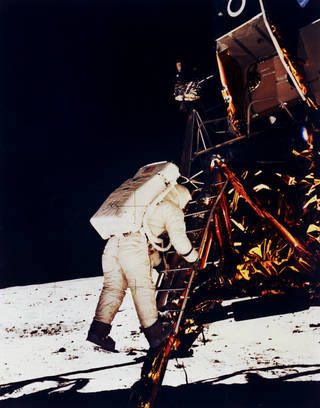
In recent decades, space travel technology has seen some incredible advancements. Especially with the advent of private space companies like SpaceX, Virgin Galactic, and Blue Origin, the dream of space tourism is looking more and more realistic for everyone!
However, when it comes to including women, we are yet to make great strides. So far, 566 people have traveled to space. Only 65 of them were women .
Although the first woman in space, a Soviet astronaut Valentina Tereshkova , who orbited Earth 48 times, went into orbit in June 1963. It was only in October 2019 that the first all-female spacewalk was completed by NASA astronauts Jessica Meir and Christina Koch.
Women's access to space is still far from equal, but there are signs of progress, like NASA planning to land the first woman and first person of color on the moon by 2024 with its Artemis missions. World Space Week is also celebrating the achievements and contributions of women in space this year!
In the following sections, we will explore the feasibility of space travel and its associated challenges.
How fast can we travel in space? Is interstellar travel possible?
Interstellar space is a rather empty place. Its temperature is not much more than the coldest possible temperature, i.e., an absolute zero. It equals about 3 kelvins – minus 270 °C or minus 455 °F. You can't find air there, and therefore there is no drag or friction. On the one hand, humans can't survive in such a hostile place without expensive equipment like a spacesuit or a spaceship, but on the other hand, we can make use of space conditions and its emptiness.
The main advantage of future spaceships is that, since they are moving through a vacuum, they can theoretically accelerate to infinite speeds! However, this is only possible in the classical world of relatively low speeds, where Newtonian physics can be applied. Even if it's true, let's imagine, just for a moment, that we live in a world where any speed is allowed. How long will it take to visit the Andromeda Galaxy, the nearest galaxy to the Milky Way?
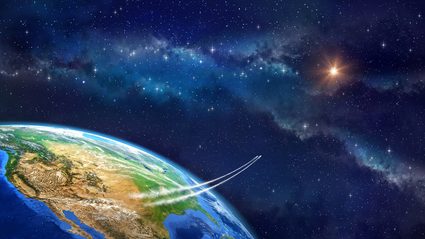
We will begin our intergalactic travel with a constant acceleration of 1 g (9.81 m/s² or 32.17 ft/s²) because it ensures that the crew experiences the same comfortable gravitational field as the one on Earth. By using this space travel calculator in Newton's universe mode, you can find out that you need about 2200 years to arrive at the nearest galaxy! And, if you want to stop there, you need an additional 1000 years . Nobody lives for 3000 years! Is intergalactic travel impossible for us, then? Luckily, we have good news. We live in a world of relativistic effects, where unusual phenomena readily occur.
Can humans travel at the speed of light? – relativistic space travel
In the previous example, where we traveled to Andromeda Galaxy, the maximum velocity was almost 3000 times greater than the speed of light c = 299,792,458 m/s , or about c = 3 × 10 8 m/s using scientific notation.
However, as velocity increases, relativistic effects start to play an essential role. According to special relativity proposed by Albert Einstein, nothing can exceed the speed of light. How can it help us with interstellar space travel? Doesn't it mean we will travel at a much lower speed? Yes, it does, but there are also a few new relativistic phenomena, including time dilation and length contraction, to name a few. The former is crucial in relativistic space travel.
Time dilation is a difference of time measured by two observers, one being in motion and the second at rest (relative to each other). It is something we are not used to on Earth. Clocks in a moving spaceship tick slower than the same clocks on Earth ! Time passing in a moving spaceship T T T and equivalent time observed on Earth t t t are related by the following formula:
where γ \gamma γ is the Lorentz factor that comprises the speed of the spaceship v v v and the speed of light c c c :
where β = v / c \beta = v/c β = v / c .
For example, if γ = 10 \gamma = 10 γ = 10 ( v = 0.995 c v = 0.995c v = 0.995 c ), then every second passing on Earth corresponds to ten seconds passing in the spaceship. Inside the spacecraft, events take place 90 percent slower; the difference can be even greater for higher velocities. Note that both observers can be in motion, too. In that case, to calculate the relative relativistic velocity, you can use our velocity addition calculator .
Let's go back to our example again, but this time we're in Einstein's universe of relativistic effects trying to reach Andromeda. The time needed to get there, measured by the crew of the spaceship, equals only 15 years ! Well, this is still a long time, but it is more achievable in a practical sense. If you would like to stop at the destination, you should start decelerating halfway through. In this situation, the time passed in the spaceship will be extended by about 13 additional years .
Unfortunately, this is only a one-way journey. You can, of course, go back to Earth, but nothing will be the same. During your interstellar space travel to the Andromeda Galaxy, about 2,500,000 years have passed on Earth. It would be a completely different planet, and nobody could foresee the fate of our civilization.
A similar problem was considered in the first Planet of the Apes movie, where astronauts crash-landed back on Earth. While these astronauts had only aged by 18 months, 2000 years had passed on Earth (sorry for the spoilers, but the film is over 50 years old at this point, you should have seen it by now). How about you? Would you be able to leave everything you know and love about our galaxy forever and begin a life of space exploration?
Space travel calculator – relativistic rocket equation
Now that you know whether interstellar travel is possible and how fast we can travel in space, it's time for some formulas. In this section, you can find the "classical" and relativistic rocket equations that are included in the relativistic space travel calculator.
There could be four combinations since we want to estimate how long it takes to arrive at the destination point at full speed as well as arrive at the destination point and stop. Every set contains distance, time passing on Earth and in the spaceship (only relativity approach), expected maximum velocity and corresponding kinetic energy (on the additional parameters section), and the required fuel mass (see Intergalactic travel — fuel problem section for more information). The notation is:
- a a a — Spaceship acceleration (by default 1 g 1\rm\, g 1 g ). We assume it is positive a > 0 a > 0 a > 0 (at least until halfway) and constant.
- m m m — Spaceship mass. It is required to calculate kinetic energy (and fuel).
- d d d — Distance to the destination. Note that you can select it from the list or type in any other distance to the desired object.
- T T T — Time that passed in a spaceship, or, in other words, how much the crew has aged.
- t t t — Time that passed in a resting frame of reference, e.g., on Earth.
- v v v — Maximum velocity reached by the spaceship.
- K E \rm KE KE — Maximum kinetic energy reached by the spaceship.
The relativistic space travel calculator is dedicated to very long journeys, interstellar or even intergalactic, in which we can neglect the influence of the gravitational field, e.g., from Earth. We didn't include our closest celestial bodies, like the Moon or Mars, in the destination list because it would be pointless. For them, we need different equations that also take into consideration gravitational force.
Newton's universe — arrive at the destination at full speed
It's the simplest case because here, T T T equals t t t for any speed. To calculate the distance covered at constant acceleration during a certain time, you can use the following classical formula:
Since acceleration is constant, and we assume that the initial velocity equals zero, you can estimate the maximum velocity using this equation:
and the corresponding kinetic energy:
Newton's universe — arrive at the destination and stop
In this situation, we accelerate to the halfway point, reach maximum velocity, and then decelerate to stop at the destination point. Distance covered during the same time is, as you may expect, smaller than before:
Acceleration remains positive until we're halfway there (then it is negative – deceleration), so the maximum velocity is:
and the kinetic energy equation is the same as the previous one.
Einstein's universe — arrive at the destination at full speed
The relativistic rocket equation has to consider the effects of light-speed travel. These are not only speed limitations and time dilation but also how every length becomes shorter for a moving observer, which is a phenomenon of special relativity called length contraction. If l l l is the proper length observed in the rest frame and L L L is the length observed by a crew in a spaceship, then:
What does it mean? If a spaceship moves with the velocity of v = 0.995 c v = 0.995c v = 0.995 c , then γ = 10 \gamma = 10 γ = 10 , and the length observed by a moving object is ten times smaller than the real length. For example, the distance to the Andromeda Galaxy equals about 2,520,000 light years with Earth as the frame of reference. For a spaceship moving with v = 0.995 c v = 0.995c v = 0.995 c , it will be "only" 252,200 light years away. That's a 90 percent decrease or a 164 percent difference!
Now you probably understand why special relativity allows us to intergalactic travel. Below you can find the relativistic rocket equation for the case in which you want to arrive at the destination point at full speed (without stopping). You can find its derivation in the book by Messrs Misner, Thorne ( Co-Winner of the 2017 Nobel Prize in Physics ) and Wheller titled Gravitation , section §6.2. Hyperbolic motion. More accessible formulas are in the mathematical physicist John Baez's article The Relativistic Rocket :
- Time passed on Earth:
- Time passed in the spaceship:
- Maximum velocity:
- Relativistic kinetic energy remains the same:
The symbols sh \sh sh , ch \ch ch , and th \th th are, respectively, sine, cosine, and tangent hyperbolic functions, which are analogs of the ordinary trigonometric functions. In turn, sh − 1 \sh^{-1} sh − 1 and ch − 1 \ch^{-1} ch − 1 are the inverse hyperbolic functions that can be expressed with natural logarithms and square roots, according to the article Inverse hyperbolic functions on Wikipedia.
Einstein's universe – arrive at destination point and stop
Most websites with relativistic rocket equations consider only arriving at the desired place at full speed. If you want to stop there, you should start decelerating at the halfway point. Below, you can find a set of equations estimating interstellar space travel parameters in the situation when you want to stop at the destination point :
Intergalactic travel – fuel problem
So, after all of these considerations, can humans travel at the speed of light, or at least at a speed close to it? Jet-rocket engines need a lot of fuel per unit of weight of the rocket. You can use our rocket equation calculator to see how much fuel you need to obtain a certain velocity (e.g., with an effective exhaust velocity of 4500 m/s).
Hopefully, future spaceships will be able to produce energy from matter-antimatter annihilation. This process releases energy from two particles that have mass (e.g., electron and positron) into photons. These photons may then be shot out at the back of the spaceship and accelerate the spaceship due to the conservation of momentum. If you want to know how much energy is contained in matter, check out our E = mc² calculator , which is about the famous Albert Einstein equation.
Now that you know the maximum amount of energy you can acquire from matter, it's time to estimate how much of it you need for intergalactic travel. Appropriate formulas are derived from the conservation of momentum and energy principles. For the relativistic case:
where e x e^x e x is an exponential function, and for classical case:
Remember that it assumes 100% efficiency! One of the promising future spaceships' power sources is the fusion of hydrogen into helium, which provides energy of 0.008 mc² . As you can see, in this reaction, efficiency equals only 0.8%.
Let's check whether the fuel mass amount is reasonable for sending a mass of 1 kg to the nearest galaxy. With a space travel calculator, you can find out that, even with 100% efficiency, you would need 5,200 tons of fuel to send only 1 kilogram of your spaceship . That's a lot!
So can humans travel at the speed of light? Right now, it seems impossible, but technology is still developing. For example, a photonic laser thruster is a good candidate since it doesn't require any matter to work, only photons. Infinity and beyond is actually within our reach!
How do I calculate the travel time to other planets?
To calculate the time it takes to travel to a specific star or galaxy using the space travel calculator, follow these steps:
- Choose the acceleration : the default mode is 1 g (gravitational field similar to Earth's).
- Enter the spaceship mass , excluding fuel.
- Select the destination : pick the star, planet, or galaxy you want to travel to from the dropdown menu.
- The distance between the Earth and your chosen stars will automatically appear. You can also input the distance in light-years directly if you select the Custom distance option in the previous dropdown.
- Define the aim : select whether you aim to " Arrive at destination and stop " or “ Arrive at destination at full speed ”.
- Pick the calculation mode : opt for either " Einstein's universe " mode for relativistic effects or " Newton's universe " for simpler calculations.
- Time passed in spaceship : estimated time experienced by the crew during the journey. (" Einstein's universe " mode)
- Time passed on Earth : estimated time elapsed on Earth during the trip. (" Einstein's universe " mode)
- Time passed : depends on the frame of reference, e.g., on Earth. (" Newton's universe " mode)
- Required fuel mass : estimated fuel quantity needed for the journey.
- Maximum velocity : maximum speed achieved by the spaceship.
How long does it take to get to space?
It takes about 8.5 minutes for a space shuttle or spacecraft to reach Earth's orbit, i.e., the limit of space where the Earth's atmosphere ends. This dividing line between the Earth's atmosphere and space is called the Kármán line . It happens so quickly because the shuttle goes from zero to around 17,500 miles per hour in those 8.5 minutes .
How fast does the space station travel?
The International Space Station travels at an average speed of 28,000 km/h or 17,500 mph . In a single day, the ISS can make several complete revolutions as it circumnavigates the globe in just 90 minutes . Placed in orbit at an altitude of 350 km , the station is visible to the naked eye, looking like a dot crossing the sky due to its very bright solar panels.
How do I reach the speed of light?
To reach the speed of light, you would have to overcome several obstacles, including:
Mass limit : traveling at the speed of light would mean traveling at 299,792,458 meters per second. But, thanks to Einstein's theory of relativity, we know that an object with non-zero mass cannot reach this speed.
Energy : accelerating to the speed of light would require infinite energy.
Effects of relativity : from the outside, time would slow down, and you would shrink.
Why can't sound travel in space?
Sound can’t travel in space because it is a mechanical wave that requires a medium to propagate — this medium can be solid, liquid, or gas. In space, there is no matter, or at least not enough for sound to propagate. The density of matter in space is of the order 1 particle per cubic centimeter . While on Earth , it's much denser at around 10 20 particles per cubic centimeter .
Dreaming of traveling into space? 🌌 Plan your interstellar travel (even to a Star Trek destination) using this calculator 👨🚀! Estimate how fast you can reach your destination and how much fuel you would need 🚀
.css-slt4t3.css-slt4t3{color:#2B3148;background-color:transparent;font-family:"Roboto","Helvetica","Arial",sans-serif;font-size:20px;line-height:24px;overflow:visible;padding-top:0px;position:relative;}.css-slt4t3.css-slt4t3:after{content:'';-webkit-transform:scale(0);-moz-transform:scale(0);-ms-transform:scale(0);transform:scale(0);position:absolute;border:2px solid #EA9430;border-radius:2px;inset:-8px;z-index:1;}.css-slt4t3 .js-external-link-button.link-like,.css-slt4t3 .js-external-link-anchor{color:inherit;border-radius:1px;-webkit-text-decoration:underline;text-decoration:underline;}.css-slt4t3 .js-external-link-button.link-like:hover,.css-slt4t3 .js-external-link-anchor:hover,.css-slt4t3 .js-external-link-button.link-like:active,.css-slt4t3 .js-external-link-anchor:active{text-decoration-thickness:2px;text-shadow:1px 0 0;}.css-slt4t3 .js-external-link-button.link-like:focus-visible,.css-slt4t3 .js-external-link-anchor:focus-visible{outline:transparent 2px dotted;box-shadow:0 0 0 2px #6314E6;}.css-slt4t3 p,.css-slt4t3 div{margin:0px;display:block;}.css-slt4t3 pre{margin:0px;display:block;}.css-slt4t3 pre code{display:block;width:-webkit-fit-content;width:-moz-fit-content;width:fit-content;}.css-slt4t3 pre:not(:first-child){padding-top:8px;}.css-slt4t3 ul,.css-slt4t3 ol{display:block margin:0px;padding-left:20px;}.css-slt4t3 ul li,.css-slt4t3 ol li{padding-top:8px;}.css-slt4t3 ul ul,.css-slt4t3 ol ul,.css-slt4t3 ul ol,.css-slt4t3 ol ol{padding-top:0px;}.css-slt4t3 ul:not(:first-child),.css-slt4t3 ol:not(:first-child){padding-top:4px;} .css-4okk7a{margin:auto;background-color:white;overflow:auto;overflow-wrap:break-word;word-break:break-word;}.css-4okk7a code,.css-4okk7a kbd,.css-4okk7a pre,.css-4okk7a samp{font-family:monospace;}.css-4okk7a code{padding:2px 4px;color:#444;background:#ddd;border-radius:4px;}.css-4okk7a figcaption,.css-4okk7a caption{text-align:center;}.css-4okk7a figcaption{font-size:12px;font-style:italic;overflow:hidden;}.css-4okk7a h3{font-size:1.75rem;}.css-4okk7a h4{font-size:1.5rem;}.css-4okk7a .mathBlock{font-size:24px;-webkit-padding-start:4px;padding-inline-start:4px;}.css-4okk7a .mathBlock .katex{font-size:24px;text-align:left;}.css-4okk7a .math-inline{background-color:#f0f0f0;display:inline-block;font-size:inherit;padding:0 3px;}.css-4okk7a .videoBlock,.css-4okk7a .imageBlock{margin-bottom:16px;}.css-4okk7a .imageBlock__image-align--left,.css-4okk7a .videoBlock__video-align--left{float:left;}.css-4okk7a .imageBlock__image-align--right,.css-4okk7a .videoBlock__video-align--right{float:right;}.css-4okk7a .imageBlock__image-align--center,.css-4okk7a .videoBlock__video-align--center{display:block;margin-left:auto;margin-right:auto;clear:both;}.css-4okk7a .imageBlock__image-align--none,.css-4okk7a .videoBlock__video-align--none{clear:both;margin-left:0;margin-right:0;}.css-4okk7a .videoBlock__video--wrapper{position:relative;padding-bottom:56.25%;height:0;}.css-4okk7a .videoBlock__video--wrapper iframe{position:absolute;top:0;left:0;width:100%;height:100%;}.css-4okk7a .videoBlock__caption{text-align:left;}@font-face{font-family:'KaTeX_AMS';src:url(/katex-fonts/KaTeX_AMS-Regular.woff2) format('woff2'),url(/katex-fonts/KaTeX_AMS-Regular.woff) format('woff'),url(/katex-fonts/KaTeX_AMS-Regular.ttf) format('truetype');font-weight:normal;font-style:normal;}@font-face{font-family:'KaTeX_Caligraphic';src:url(/katex-fonts/KaTeX_Caligraphic-Bold.woff2) format('woff2'),url(/katex-fonts/KaTeX_Caligraphic-Bold.woff) format('woff'),url(/katex-fonts/KaTeX_Caligraphic-Bold.ttf) format('truetype');font-weight:bold;font-style:normal;}@font-face{font-family:'KaTeX_Caligraphic';src:url(/katex-fonts/KaTeX_Caligraphic-Regular.woff2) format('woff2'),url(/katex-fonts/KaTeX_Caligraphic-Regular.woff) format('woff'),url(/katex-fonts/KaTeX_Caligraphic-Regular.ttf) format('truetype');font-weight:normal;font-style:normal;}@font-face{font-family:'KaTeX_Fraktur';src:url(/katex-fonts/KaTeX_Fraktur-Bold.woff2) format('woff2'),url(/katex-fonts/KaTeX_Fraktur-Bold.woff) format('woff'),url(/katex-fonts/KaTeX_Fraktur-Bold.ttf) format('truetype');font-weight:bold;font-style:normal;}@font-face{font-family:'KaTeX_Fraktur';src:url(/katex-fonts/KaTeX_Fraktur-Regular.woff2) format('woff2'),url(/katex-fonts/KaTeX_Fraktur-Regular.woff) format('woff'),url(/katex-fonts/KaTeX_Fraktur-Regular.ttf) format('truetype');font-weight:normal;font-style:normal;}@font-face{font-family:'KaTeX_Main';src:url(/katex-fonts/KaTeX_Main-Bold.woff2) format('woff2'),url(/katex-fonts/KaTeX_Main-Bold.woff) format('woff'),url(/katex-fonts/KaTeX_Main-Bold.ttf) format('truetype');font-weight:bold;font-style:normal;}@font-face{font-family:'KaTeX_Main';src:url(/katex-fonts/KaTeX_Main-BoldItalic.woff2) format('woff2'),url(/katex-fonts/KaTeX_Main-BoldItalic.woff) format('woff'),url(/katex-fonts/KaTeX_Main-BoldItalic.ttf) format('truetype');font-weight:bold;font-style:italic;}@font-face{font-family:'KaTeX_Main';src:url(/katex-fonts/KaTeX_Main-Italic.woff2) format('woff2'),url(/katex-fonts/KaTeX_Main-Italic.woff) format('woff'),url(/katex-fonts/KaTeX_Main-Italic.ttf) format('truetype');font-weight:normal;font-style:italic;}@font-face{font-family:'KaTeX_Main';src:url(/katex-fonts/KaTeX_Main-Regular.woff2) format('woff2'),url(/katex-fonts/KaTeX_Main-Regular.woff) format('woff'),url(/katex-fonts/KaTeX_Main-Regular.ttf) format('truetype');font-weight:normal;font-style:normal;}@font-face{font-family:'KaTeX_Math';src:url(/katex-fonts/KaTeX_Math-BoldItalic.woff2) format('woff2'),url(/katex-fonts/KaTeX_Math-BoldItalic.woff) format('woff'),url(/katex-fonts/KaTeX_Math-BoldItalic.ttf) format('truetype');font-weight:bold;font-style:italic;}@font-face{font-family:'KaTeX_Math';src:url(/katex-fonts/KaTeX_Math-Italic.woff2) format('woff2'),url(/katex-fonts/KaTeX_Math-Italic.woff) format('woff'),url(/katex-fonts/KaTeX_Math-Italic.ttf) format('truetype');font-weight:normal;font-style:italic;}@font-face{font-family:'KaTeX_SansSerif';src:url(/katex-fonts/KaTeX_SansSerif-Bold.woff2) format('woff2'),url(/katex-fonts/KaTeX_SansSerif-Bold.woff) format('woff'),url(/katex-fonts/KaTeX_SansSerif-Bold.ttf) format('truetype');font-weight:bold;font-style:normal;}@font-face{font-family:'KaTeX_SansSerif';src:url(/katex-fonts/KaTeX_SansSerif-Italic.woff2) format('woff2'),url(/katex-fonts/KaTeX_SansSerif-Italic.woff) format('woff'),url(/katex-fonts/KaTeX_SansSerif-Italic.ttf) format('truetype');font-weight:normal;font-style:italic;}@font-face{font-family:'KaTeX_SansSerif';src:url(/katex-fonts/KaTeX_SansSerif-Regular.woff2) format('woff2'),url(/katex-fonts/KaTeX_SansSerif-Regular.woff) format('woff'),url(/katex-fonts/KaTeX_SansSerif-Regular.ttf) format('truetype');font-weight:normal;font-style:normal;}@font-face{font-family:'KaTeX_Script';src:url(/katex-fonts/KaTeX_Script-Regular.woff2) format('woff2'),url(/katex-fonts/KaTeX_Script-Regular.woff) format('woff'),url(/katex-fonts/KaTeX_Script-Regular.ttf) format('truetype');font-weight:normal;font-style:normal;}@font-face{font-family:'KaTeX_Size1';src:url(/katex-fonts/KaTeX_Size1-Regular.woff2) format('woff2'),url(/katex-fonts/KaTeX_Size1-Regular.woff) format('woff'),url(/katex-fonts/KaTeX_Size1-Regular.ttf) format('truetype');font-weight:normal;font-style:normal;}@font-face{font-family:'KaTeX_Size2';src:url(/katex-fonts/KaTeX_Size2-Regular.woff2) format('woff2'),url(/katex-fonts/KaTeX_Size2-Regular.woff) format('woff'),url(/katex-fonts/KaTeX_Size2-Regular.ttf) format('truetype');font-weight:normal;font-style:normal;}@font-face{font-family:'KaTeX_Size3';src:url(/katex-fonts/KaTeX_Size3-Regular.woff2) format('woff2'),url(/katex-fonts/KaTeX_Size3-Regular.woff) format('woff'),url(/katex-fonts/KaTeX_Size3-Regular.ttf) format('truetype');font-weight:normal;font-style:normal;}@font-face{font-family:'KaTeX_Size4';src:url(/katex-fonts/KaTeX_Size4-Regular.woff2) format('woff2'),url(/katex-fonts/KaTeX_Size4-Regular.woff) format('woff'),url(/katex-fonts/KaTeX_Size4-Regular.ttf) format('truetype');font-weight:normal;font-style:normal;}@font-face{font-family:'KaTeX_Typewriter';src:url(/katex-fonts/KaTeX_Typewriter-Regular.woff2) format('woff2'),url(/katex-fonts/KaTeX_Typewriter-Regular.woff) format('woff'),url(/katex-fonts/KaTeX_Typewriter-Regular.ttf) format('truetype');font-weight:normal;font-style:normal;}.css-4okk7a .katex{font:normal 1.21em KaTeX_Main,Times New Roman,serif;line-height:1.2;text-indent:0;text-rendering:auto;}.css-4okk7a .katex *{-ms-high-contrast-adjust:none!important;border-color:currentColor;}.css-4okk7a .katex .katex-version::after{content:'0.13.13';}.css-4okk7a .katex .katex-mathml{position:absolute;clip:rect(1px, 1px, 1px, 1px);padding:0;border:0;height:1px;width:1px;overflow:hidden;}.css-4okk7a .katex .katex-html>.newline{display:block;}.css-4okk7a .katex .base{position:relative;display:inline-block;white-space:nowrap;width:-webkit-min-content;width:-moz-min-content;width:-webkit-min-content;width:-moz-min-content;width:min-content;}.css-4okk7a .katex .strut{display:inline-block;}.css-4okk7a .katex .textbf{font-weight:bold;}.css-4okk7a .katex .textit{font-style:italic;}.css-4okk7a .katex .textrm{font-family:KaTeX_Main;}.css-4okk7a .katex .textsf{font-family:KaTeX_SansSerif;}.css-4okk7a .katex .texttt{font-family:KaTeX_Typewriter;}.css-4okk7a .katex .mathnormal{font-family:KaTeX_Math;font-style:italic;}.css-4okk7a .katex .mathit{font-family:KaTeX_Main;font-style:italic;}.css-4okk7a .katex .mathrm{font-style:normal;}.css-4okk7a .katex .mathbf{font-family:KaTeX_Main;font-weight:bold;}.css-4okk7a .katex .boldsymbol{font-family:KaTeX_Math;font-weight:bold;font-style:italic;}.css-4okk7a .katex .amsrm{font-family:KaTeX_AMS;}.css-4okk7a .katex .mathbb,.css-4okk7a .katex .textbb{font-family:KaTeX_AMS;}.css-4okk7a .katex .mathcal{font-family:KaTeX_Caligraphic;}.css-4okk7a .katex .mathfrak,.css-4okk7a .katex .textfrak{font-family:KaTeX_Fraktur;}.css-4okk7a .katex .mathtt{font-family:KaTeX_Typewriter;}.css-4okk7a .katex .mathscr,.css-4okk7a .katex .textscr{font-family:KaTeX_Script;}.css-4okk7a .katex .mathsf,.css-4okk7a .katex .textsf{font-family:KaTeX_SansSerif;}.css-4okk7a .katex .mathboldsf,.css-4okk7a .katex .textboldsf{font-family:KaTeX_SansSerif;font-weight:bold;}.css-4okk7a .katex .mathitsf,.css-4okk7a .katex .textitsf{font-family:KaTeX_SansSerif;font-style:italic;}.css-4okk7a .katex .mainrm{font-family:KaTeX_Main;font-style:normal;}.css-4okk7a .katex .vlist-t{display:inline-table;table-layout:fixed;border-collapse:collapse;}.css-4okk7a .katex .vlist-r{display:table-row;}.css-4okk7a .katex .vlist{display:table-cell;vertical-align:bottom;position:relative;}.css-4okk7a .katex .vlist>span{display:block;height:0;position:relative;}.css-4okk7a .katex .vlist>span>span{display:inline-block;}.css-4okk7a .katex .vlist>span>.pstrut{overflow:hidden;width:0;}.css-4okk7a .katex .vlist-t2{margin-right:-2px;}.css-4okk7a .katex .vlist-s{display:table-cell;vertical-align:bottom;font-size:1px;width:2px;min-width:2px;}.css-4okk7a .katex .vbox{display:-webkit-inline-box;display:-webkit-inline-flex;display:-ms-inline-flexbox;display:inline-flex;-webkit-flex-direction:column;-ms-flex-direction:column;flex-direction:column;-webkit-align-items:baseline;-webkit-box-align:baseline;-ms-flex-align:baseline;align-items:baseline;}.css-4okk7a .katex .hbox{display:-webkit-inline-box;display:-webkit-inline-flex;display:-ms-inline-flexbox;display:inline-flex;-webkit-flex-direction:row;-ms-flex-direction:row;flex-direction:row;width:100%;}.css-4okk7a .katex .thinbox{display:-webkit-inline-box;display:-webkit-inline-flex;display:-ms-inline-flexbox;display:inline-flex;-webkit-flex-direction:row;-ms-flex-direction:row;flex-direction:row;width:0;max-width:0;}.css-4okk7a .katex .msupsub{text-align:left;}.css-4okk7a .katex .mfrac>span>span{text-align:center;}.css-4okk7a .katex .mfrac .frac-line{display:inline-block;width:100%;border-bottom-style:solid;}.css-4okk7a .katex .mfrac .frac-line,.css-4okk7a .katex .overline .overline-line,.css-4okk7a .katex .underline .underline-line,.css-4okk7a .katex .hline,.css-4okk7a .katex .hdashline,.css-4okk7a .katex .rule{min-height:1px;}.css-4okk7a .katex .mspace{display:inline-block;}.css-4okk7a .katex .llap,.css-4okk7a .katex .rlap,.css-4okk7a .katex .clap{width:0;position:relative;}.css-4okk7a .katex .llap>.inner,.css-4okk7a .katex .rlap>.inner,.css-4okk7a .katex .clap>.inner{position:absolute;}.css-4okk7a .katex .llap>.fix,.css-4okk7a .katex .rlap>.fix,.css-4okk7a .katex .clap>.fix{display:inline-block;}.css-4okk7a .katex .llap>.inner{right:0;}.css-4okk7a .katex .rlap>.inner,.css-4okk7a .katex .clap>.inner{left:0;}.css-4okk7a .katex .clap>.inner>span{margin-left:-50%;margin-right:50%;}.css-4okk7a .katex .rule{display:inline-block;border:solid 0;position:relative;}.css-4okk7a .katex .overline .overline-line,.css-4okk7a .katex .underline .underline-line,.css-4okk7a .katex .hline{display:inline-block;width:100%;border-bottom-style:solid;}.css-4okk7a .katex .hdashline{display:inline-block;width:100%;border-bottom-style:dashed;}.css-4okk7a .katex .sqrt>.root{margin-left:0.27777778em;margin-right:-0.55555556em;}.css-4okk7a .katex .sizing.reset-size1.size1,.css-4okk7a .katex .fontsize-ensurer.reset-size1.size1{font-size:1em;}.css-4okk7a .katex .sizing.reset-size1.size2,.css-4okk7a .katex .fontsize-ensurer.reset-size1.size2{font-size:1.2em;}.css-4okk7a .katex .sizing.reset-size1.size3,.css-4okk7a .katex .fontsize-ensurer.reset-size1.size3{font-size:1.4em;}.css-4okk7a .katex .sizing.reset-size1.size4,.css-4okk7a .katex .fontsize-ensurer.reset-size1.size4{font-size:1.6em;}.css-4okk7a .katex .sizing.reset-size1.size5,.css-4okk7a .katex .fontsize-ensurer.reset-size1.size5{font-size:1.8em;}.css-4okk7a .katex .sizing.reset-size1.size6,.css-4okk7a .katex .fontsize-ensurer.reset-size1.size6{font-size:2em;}.css-4okk7a .katex .sizing.reset-size1.size7,.css-4okk7a .katex .fontsize-ensurer.reset-size1.size7{font-size:2.4em;}.css-4okk7a .katex .sizing.reset-size1.size8,.css-4okk7a .katex .fontsize-ensurer.reset-size1.size8{font-size:2.88em;}.css-4okk7a .katex .sizing.reset-size1.size9,.css-4okk7a .katex .fontsize-ensurer.reset-size1.size9{font-size:3.456em;}.css-4okk7a .katex .sizing.reset-size1.size10,.css-4okk7a .katex .fontsize-ensurer.reset-size1.size10{font-size:4.148em;}.css-4okk7a .katex .sizing.reset-size1.size11,.css-4okk7a .katex .fontsize-ensurer.reset-size1.size11{font-size:4.976em;}.css-4okk7a .katex .sizing.reset-size2.size1,.css-4okk7a .katex .fontsize-ensurer.reset-size2.size1{font-size:0.83333333em;}.css-4okk7a .katex .sizing.reset-size2.size2,.css-4okk7a .katex .fontsize-ensurer.reset-size2.size2{font-size:1em;}.css-4okk7a .katex .sizing.reset-size2.size3,.css-4okk7a .katex .fontsize-ensurer.reset-size2.size3{font-size:1.16666667em;}.css-4okk7a .katex .sizing.reset-size2.size4,.css-4okk7a .katex .fontsize-ensurer.reset-size2.size4{font-size:1.33333333em;}.css-4okk7a .katex .sizing.reset-size2.size5,.css-4okk7a .katex .fontsize-ensurer.reset-size2.size5{font-size:1.5em;}.css-4okk7a .katex .sizing.reset-size2.size6,.css-4okk7a .katex .fontsize-ensurer.reset-size2.size6{font-size:1.66666667em;}.css-4okk7a .katex .sizing.reset-size2.size7,.css-4okk7a .katex .fontsize-ensurer.reset-size2.size7{font-size:2em;}.css-4okk7a .katex .sizing.reset-size2.size8,.css-4okk7a .katex .fontsize-ensurer.reset-size2.size8{font-size:2.4em;}.css-4okk7a .katex .sizing.reset-size2.size9,.css-4okk7a .katex .fontsize-ensurer.reset-size2.size9{font-size:2.88em;}.css-4okk7a .katex .sizing.reset-size2.size10,.css-4okk7a .katex .fontsize-ensurer.reset-size2.size10{font-size:3.45666667em;}.css-4okk7a .katex .sizing.reset-size2.size11,.css-4okk7a .katex .fontsize-ensurer.reset-size2.size11{font-size:4.14666667em;}.css-4okk7a .katex .sizing.reset-size3.size1,.css-4okk7a .katex .fontsize-ensurer.reset-size3.size1{font-size:0.71428571em;}.css-4okk7a .katex .sizing.reset-size3.size2,.css-4okk7a .katex .fontsize-ensurer.reset-size3.size2{font-size:0.85714286em;}.css-4okk7a .katex .sizing.reset-size3.size3,.css-4okk7a .katex .fontsize-ensurer.reset-size3.size3{font-size:1em;}.css-4okk7a .katex .sizing.reset-size3.size4,.css-4okk7a .katex .fontsize-ensurer.reset-size3.size4{font-size:1.14285714em;}.css-4okk7a .katex .sizing.reset-size3.size5,.css-4okk7a .katex .fontsize-ensurer.reset-size3.size5{font-size:1.28571429em;}.css-4okk7a .katex .sizing.reset-size3.size6,.css-4okk7a .katex .fontsize-ensurer.reset-size3.size6{font-size:1.42857143em;}.css-4okk7a .katex .sizing.reset-size3.size7,.css-4okk7a .katex .fontsize-ensurer.reset-size3.size7{font-size:1.71428571em;}.css-4okk7a .katex .sizing.reset-size3.size8,.css-4okk7a .katex .fontsize-ensurer.reset-size3.size8{font-size:2.05714286em;}.css-4okk7a .katex .sizing.reset-size3.size9,.css-4okk7a .katex .fontsize-ensurer.reset-size3.size9{font-size:2.46857143em;}.css-4okk7a .katex .sizing.reset-size3.size10,.css-4okk7a .katex .fontsize-ensurer.reset-size3.size10{font-size:2.96285714em;}.css-4okk7a .katex .sizing.reset-size3.size11,.css-4okk7a .katex .fontsize-ensurer.reset-size3.size11{font-size:3.55428571em;}.css-4okk7a .katex .sizing.reset-size4.size1,.css-4okk7a .katex .fontsize-ensurer.reset-size4.size1{font-size:0.625em;}.css-4okk7a .katex .sizing.reset-size4.size2,.css-4okk7a .katex .fontsize-ensurer.reset-size4.size2{font-size:0.75em;}.css-4okk7a .katex .sizing.reset-size4.size3,.css-4okk7a .katex .fontsize-ensurer.reset-size4.size3{font-size:0.875em;}.css-4okk7a .katex .sizing.reset-size4.size4,.css-4okk7a .katex .fontsize-ensurer.reset-size4.size4{font-size:1em;}.css-4okk7a .katex .sizing.reset-size4.size5,.css-4okk7a .katex .fontsize-ensurer.reset-size4.size5{font-size:1.125em;}.css-4okk7a .katex .sizing.reset-size4.size6,.css-4okk7a .katex .fontsize-ensurer.reset-size4.size6{font-size:1.25em;}.css-4okk7a .katex .sizing.reset-size4.size7,.css-4okk7a .katex .fontsize-ensurer.reset-size4.size7{font-size:1.5em;}.css-4okk7a .katex .sizing.reset-size4.size8,.css-4okk7a .katex .fontsize-ensurer.reset-size4.size8{font-size:1.8em;}.css-4okk7a .katex .sizing.reset-size4.size9,.css-4okk7a .katex .fontsize-ensurer.reset-size4.size9{font-size:2.16em;}.css-4okk7a .katex .sizing.reset-size4.size10,.css-4okk7a .katex .fontsize-ensurer.reset-size4.size10{font-size:2.5925em;}.css-4okk7a .katex .sizing.reset-size4.size11,.css-4okk7a .katex .fontsize-ensurer.reset-size4.size11{font-size:3.11em;}.css-4okk7a .katex .sizing.reset-size5.size1,.css-4okk7a .katex .fontsize-ensurer.reset-size5.size1{font-size:0.55555556em;}.css-4okk7a .katex .sizing.reset-size5.size2,.css-4okk7a .katex .fontsize-ensurer.reset-size5.size2{font-size:0.66666667em;}.css-4okk7a .katex .sizing.reset-size5.size3,.css-4okk7a .katex .fontsize-ensurer.reset-size5.size3{font-size:0.77777778em;}.css-4okk7a .katex .sizing.reset-size5.size4,.css-4okk7a .katex .fontsize-ensurer.reset-size5.size4{font-size:0.88888889em;}.css-4okk7a .katex .sizing.reset-size5.size5,.css-4okk7a .katex .fontsize-ensurer.reset-size5.size5{font-size:1em;}.css-4okk7a .katex .sizing.reset-size5.size6,.css-4okk7a .katex .fontsize-ensurer.reset-size5.size6{font-size:1.11111111em;}.css-4okk7a .katex .sizing.reset-size5.size7,.css-4okk7a .katex .fontsize-ensurer.reset-size5.size7{font-size:1.33333333em;}.css-4okk7a .katex .sizing.reset-size5.size8,.css-4okk7a .katex .fontsize-ensurer.reset-size5.size8{font-size:1.6em;}.css-4okk7a .katex .sizing.reset-size5.size9,.css-4okk7a .katex .fontsize-ensurer.reset-size5.size9{font-size:1.92em;}.css-4okk7a .katex .sizing.reset-size5.size10,.css-4okk7a .katex .fontsize-ensurer.reset-size5.size10{font-size:2.30444444em;}.css-4okk7a .katex .sizing.reset-size5.size11,.css-4okk7a .katex .fontsize-ensurer.reset-size5.size11{font-size:2.76444444em;}.css-4okk7a .katex .sizing.reset-size6.size1,.css-4okk7a .katex .fontsize-ensurer.reset-size6.size1{font-size:0.5em;}.css-4okk7a .katex .sizing.reset-size6.size2,.css-4okk7a .katex .fontsize-ensurer.reset-size6.size2{font-size:0.6em;}.css-4okk7a .katex .sizing.reset-size6.size3,.css-4okk7a .katex .fontsize-ensurer.reset-size6.size3{font-size:0.7em;}.css-4okk7a .katex .sizing.reset-size6.size4,.css-4okk7a .katex .fontsize-ensurer.reset-size6.size4{font-size:0.8em;}.css-4okk7a .katex .sizing.reset-size6.size5,.css-4okk7a .katex .fontsize-ensurer.reset-size6.size5{font-size:0.9em;}.css-4okk7a .katex .sizing.reset-size6.size6,.css-4okk7a .katex .fontsize-ensurer.reset-size6.size6{font-size:1em;}.css-4okk7a .katex .sizing.reset-size6.size7,.css-4okk7a .katex .fontsize-ensurer.reset-size6.size7{font-size:1.2em;}.css-4okk7a .katex .sizing.reset-size6.size8,.css-4okk7a .katex .fontsize-ensurer.reset-size6.size8{font-size:1.44em;}.css-4okk7a .katex .sizing.reset-size6.size9,.css-4okk7a .katex .fontsize-ensurer.reset-size6.size9{font-size:1.728em;}.css-4okk7a .katex .sizing.reset-size6.size10,.css-4okk7a .katex .fontsize-ensurer.reset-size6.size10{font-size:2.074em;}.css-4okk7a .katex .sizing.reset-size6.size11,.css-4okk7a .katex .fontsize-ensurer.reset-size6.size11{font-size:2.488em;}.css-4okk7a .katex .sizing.reset-size7.size1,.css-4okk7a .katex .fontsize-ensurer.reset-size7.size1{font-size:0.41666667em;}.css-4okk7a .katex .sizing.reset-size7.size2,.css-4okk7a .katex .fontsize-ensurer.reset-size7.size2{font-size:0.5em;}.css-4okk7a .katex .sizing.reset-size7.size3,.css-4okk7a .katex .fontsize-ensurer.reset-size7.size3{font-size:0.58333333em;}.css-4okk7a .katex .sizing.reset-size7.size4,.css-4okk7a .katex .fontsize-ensurer.reset-size7.size4{font-size:0.66666667em;}.css-4okk7a .katex .sizing.reset-size7.size5,.css-4okk7a .katex .fontsize-ensurer.reset-size7.size5{font-size:0.75em;}.css-4okk7a .katex .sizing.reset-size7.size6,.css-4okk7a .katex .fontsize-ensurer.reset-size7.size6{font-size:0.83333333em;}.css-4okk7a .katex .sizing.reset-size7.size7,.css-4okk7a .katex .fontsize-ensurer.reset-size7.size7{font-size:1em;}.css-4okk7a .katex .sizing.reset-size7.size8,.css-4okk7a .katex .fontsize-ensurer.reset-size7.size8{font-size:1.2em;}.css-4okk7a .katex .sizing.reset-size7.size9,.css-4okk7a .katex .fontsize-ensurer.reset-size7.size9{font-size:1.44em;}.css-4okk7a .katex .sizing.reset-size7.size10,.css-4okk7a .katex .fontsize-ensurer.reset-size7.size10{font-size:1.72833333em;}.css-4okk7a .katex .sizing.reset-size7.size11,.css-4okk7a .katex .fontsize-ensurer.reset-size7.size11{font-size:2.07333333em;}.css-4okk7a .katex .sizing.reset-size8.size1,.css-4okk7a .katex .fontsize-ensurer.reset-size8.size1{font-size:0.34722222em;}.css-4okk7a .katex .sizing.reset-size8.size2,.css-4okk7a .katex .fontsize-ensurer.reset-size8.size2{font-size:0.41666667em;}.css-4okk7a .katex .sizing.reset-size8.size3,.css-4okk7a .katex .fontsize-ensurer.reset-size8.size3{font-size:0.48611111em;}.css-4okk7a .katex .sizing.reset-size8.size4,.css-4okk7a .katex .fontsize-ensurer.reset-size8.size4{font-size:0.55555556em;}.css-4okk7a .katex .sizing.reset-size8.size5,.css-4okk7a .katex .fontsize-ensurer.reset-size8.size5{font-size:0.625em;}.css-4okk7a .katex .sizing.reset-size8.size6,.css-4okk7a .katex .fontsize-ensurer.reset-size8.size6{font-size:0.69444444em;}.css-4okk7a .katex .sizing.reset-size8.size7,.css-4okk7a .katex .fontsize-ensurer.reset-size8.size7{font-size:0.83333333em;}.css-4okk7a .katex .sizing.reset-size8.size8,.css-4okk7a .katex .fontsize-ensurer.reset-size8.size8{font-size:1em;}.css-4okk7a .katex .sizing.reset-size8.size9,.css-4okk7a .katex .fontsize-ensurer.reset-size8.size9{font-size:1.2em;}.css-4okk7a .katex .sizing.reset-size8.size10,.css-4okk7a .katex .fontsize-ensurer.reset-size8.size10{font-size:1.44027778em;}.css-4okk7a .katex .sizing.reset-size8.size11,.css-4okk7a .katex .fontsize-ensurer.reset-size8.size11{font-size:1.72777778em;}.css-4okk7a .katex .sizing.reset-size9.size1,.css-4okk7a .katex .fontsize-ensurer.reset-size9.size1{font-size:0.28935185em;}.css-4okk7a .katex .sizing.reset-size9.size2,.css-4okk7a .katex .fontsize-ensurer.reset-size9.size2{font-size:0.34722222em;}.css-4okk7a .katex .sizing.reset-size9.size3,.css-4okk7a .katex .fontsize-ensurer.reset-size9.size3{font-size:0.40509259em;}.css-4okk7a .katex .sizing.reset-size9.size4,.css-4okk7a .katex .fontsize-ensurer.reset-size9.size4{font-size:0.46296296em;}.css-4okk7a .katex .sizing.reset-size9.size5,.css-4okk7a .katex .fontsize-ensurer.reset-size9.size5{font-size:0.52083333em;}.css-4okk7a .katex .sizing.reset-size9.size6,.css-4okk7a .katex .fontsize-ensurer.reset-size9.size6{font-size:0.5787037em;}.css-4okk7a .katex .sizing.reset-size9.size7,.css-4okk7a .katex .fontsize-ensurer.reset-size9.size7{font-size:0.69444444em;}.css-4okk7a .katex .sizing.reset-size9.size8,.css-4okk7a .katex .fontsize-ensurer.reset-size9.size8{font-size:0.83333333em;}.css-4okk7a .katex .sizing.reset-size9.size9,.css-4okk7a .katex .fontsize-ensurer.reset-size9.size9{font-size:1em;}.css-4okk7a .katex .sizing.reset-size9.size10,.css-4okk7a .katex .fontsize-ensurer.reset-size9.size10{font-size:1.20023148em;}.css-4okk7a .katex .sizing.reset-size9.size11,.css-4okk7a .katex .fontsize-ensurer.reset-size9.size11{font-size:1.43981481em;}.css-4okk7a .katex .sizing.reset-size10.size1,.css-4okk7a .katex .fontsize-ensurer.reset-size10.size1{font-size:0.24108004em;}.css-4okk7a .katex .sizing.reset-size10.size2,.css-4okk7a .katex .fontsize-ensurer.reset-size10.size2{font-size:0.28929605em;}.css-4okk7a .katex .sizing.reset-size10.size3,.css-4okk7a .katex .fontsize-ensurer.reset-size10.size3{font-size:0.33751205em;}.css-4okk7a .katex .sizing.reset-size10.size4,.css-4okk7a .katex .fontsize-ensurer.reset-size10.size4{font-size:0.38572806em;}.css-4okk7a .katex .sizing.reset-size10.size5,.css-4okk7a .katex .fontsize-ensurer.reset-size10.size5{font-size:0.43394407em;}.css-4okk7a .katex .sizing.reset-size10.size6,.css-4okk7a .katex .fontsize-ensurer.reset-size10.size6{font-size:0.48216008em;}.css-4okk7a .katex .sizing.reset-size10.size7,.css-4okk7a .katex .fontsize-ensurer.reset-size10.size7{font-size:0.57859209em;}.css-4okk7a .katex .sizing.reset-size10.size8,.css-4okk7a .katex .fontsize-ensurer.reset-size10.size8{font-size:0.69431051em;}.css-4okk7a .katex .sizing.reset-size10.size9,.css-4okk7a .katex .fontsize-ensurer.reset-size10.size9{font-size:0.83317261em;}.css-4okk7a .katex .sizing.reset-size10.size10,.css-4okk7a .katex .fontsize-ensurer.reset-size10.size10{font-size:1em;}.css-4okk7a .katex .sizing.reset-size10.size11,.css-4okk7a .katex .fontsize-ensurer.reset-size10.size11{font-size:1.19961427em;}.css-4okk7a .katex .sizing.reset-size11.size1,.css-4okk7a .katex .fontsize-ensurer.reset-size11.size1{font-size:0.20096463em;}.css-4okk7a .katex .sizing.reset-size11.size2,.css-4okk7a .katex .fontsize-ensurer.reset-size11.size2{font-size:0.24115756em;}.css-4okk7a .katex .sizing.reset-size11.size3,.css-4okk7a .katex .fontsize-ensurer.reset-size11.size3{font-size:0.28135048em;}.css-4okk7a .katex .sizing.reset-size11.size4,.css-4okk7a .katex .fontsize-ensurer.reset-size11.size4{font-size:0.32154341em;}.css-4okk7a .katex .sizing.reset-size11.size5,.css-4okk7a .katex .fontsize-ensurer.reset-size11.size5{font-size:0.36173633em;}.css-4okk7a .katex .sizing.reset-size11.size6,.css-4okk7a .katex .fontsize-ensurer.reset-size11.size6{font-size:0.40192926em;}.css-4okk7a .katex .sizing.reset-size11.size7,.css-4okk7a .katex .fontsize-ensurer.reset-size11.size7{font-size:0.48231511em;}.css-4okk7a .katex .sizing.reset-size11.size8,.css-4okk7a .katex .fontsize-ensurer.reset-size11.size8{font-size:0.57877814em;}.css-4okk7a .katex .sizing.reset-size11.size9,.css-4okk7a .katex .fontsize-ensurer.reset-size11.size9{font-size:0.69453376em;}.css-4okk7a .katex .sizing.reset-size11.size10,.css-4okk7a .katex .fontsize-ensurer.reset-size11.size10{font-size:0.83360129em;}.css-4okk7a .katex .sizing.reset-size11.size11,.css-4okk7a .katex .fontsize-ensurer.reset-size11.size11{font-size:1em;}.css-4okk7a .katex .delimsizing.size1{font-family:KaTeX_Size1;}.css-4okk7a .katex .delimsizing.size2{font-family:KaTeX_Size2;}.css-4okk7a .katex .delimsizing.size3{font-family:KaTeX_Size3;}.css-4okk7a .katex .delimsizing.size4{font-family:KaTeX_Size4;}.css-4okk7a .katex .delimsizing.mult .delim-size1>span{font-family:KaTeX_Size1;}.css-4okk7a .katex .delimsizing.mult .delim-size4>span{font-family:KaTeX_Size4;}.css-4okk7a .katex .nulldelimiter{display:inline-block;width:0.12em;}.css-4okk7a .katex .delimcenter{position:relative;}.css-4okk7a .katex .op-symbol{position:relative;}.css-4okk7a .katex .op-symbol.small-op{font-family:KaTeX_Size1;}.css-4okk7a .katex .op-symbol.large-op{font-family:KaTeX_Size2;}.css-4okk7a .katex .op-limits>.vlist-t{text-align:center;}.css-4okk7a .katex .accent>.vlist-t{text-align:center;}.css-4okk7a .katex .accent .accent-body{position:relative;}.css-4okk7a .katex .accent .accent-body:not(.accent-full){width:0;}.css-4okk7a .katex .overlay{display:block;}.css-4okk7a .katex .mtable .vertical-separator{display:inline-block;min-width:1px;}.css-4okk7a .katex .mtable .arraycolsep{display:inline-block;}.css-4okk7a .katex .mtable .col-align-c>.vlist-t{text-align:center;}.css-4okk7a .katex .mtable .col-align-l>.vlist-t{text-align:left;}.css-4okk7a .katex .mtable .col-align-r>.vlist-t{text-align:right;}.css-4okk7a .katex .svg-align{text-align:left;}.css-4okk7a .katex svg{display:block;position:absolute;width:100%;height:inherit;fill:currentColor;stroke:currentColor;fill-rule:nonzero;fill-opacity:1;stroke-width:1;stroke-linecap:butt;stroke-linejoin:miter;stroke-miterlimit:4;stroke-dasharray:none;stroke-dashoffset:0;stroke-opacity:1;}.css-4okk7a .katex svg path{stroke:none;}.css-4okk7a .katex img{border-style:none;min-width:0;min-height:0;max-width:none;max-height:none;}.css-4okk7a .katex .stretchy{width:100%;display:block;position:relative;overflow:hidden;}.css-4okk7a .katex .stretchy::before,.css-4okk7a .katex .stretchy::after{content:'';}.css-4okk7a .katex .hide-tail{width:100%;position:relative;overflow:hidden;}.css-4okk7a .katex .halfarrow-left{position:absolute;left:0;width:50.2%;overflow:hidden;}.css-4okk7a .katex .halfarrow-right{position:absolute;right:0;width:50.2%;overflow:hidden;}.css-4okk7a .katex .brace-left{position:absolute;left:0;width:25.1%;overflow:hidden;}.css-4okk7a .katex .brace-center{position:absolute;left:25%;width:50%;overflow:hidden;}.css-4okk7a .katex .brace-right{position:absolute;right:0;width:25.1%;overflow:hidden;}.css-4okk7a .katex .x-arrow-pad{padding:0 0.5em;}.css-4okk7a .katex .cd-arrow-pad{padding:0 0.55556em 0 0.27778em;}.css-4okk7a .katex .x-arrow,.css-4okk7a .katex .mover,.css-4okk7a .katex .munder{text-align:center;}.css-4okk7a .katex .boxpad{padding:0 0.3em 0 0.3em;}.css-4okk7a .katex .fbox,.css-4okk7a .katex .fcolorbox{box-sizing:border-box;border:0.04em solid;}.css-4okk7a .katex .cancel-pad{padding:0 0.2em 0 0.2em;}.css-4okk7a .katex .cancel-lap{margin-left:-0.2em;margin-right:-0.2em;}.css-4okk7a .katex .sout{border-bottom-style:solid;border-bottom-width:0.08em;}.css-4okk7a .katex .angl{box-sizing:border-box;border-top:0.049em solid;border-right:0.049em solid;margin-right:0.03889em;}.css-4okk7a .katex .anglpad{padding:0 0.03889em 0 0.03889em;}.css-4okk7a .katex .eqn-num::before{counter-increment:katexEqnNo;content:'(' counter(katexEqnNo) ')';}.css-4okk7a .katex .mml-eqn-num::before{counter-increment:mmlEqnNo;content:'(' counter(mmlEqnNo) ')';}.css-4okk7a .katex .mtr-glue{width:50%;}.css-4okk7a .katex .cd-vert-arrow{display:inline-block;position:relative;}.css-4okk7a .katex .cd-label-left{display:inline-block;position:absolute;right:calc(50% + 0.3em);text-align:left;}.css-4okk7a .katex .cd-label-right{display:inline-block;position:absolute;left:calc(50% + 0.3em);text-align:right;}.css-4okk7a .katex-display{display:block;margin:1em 0;text-align:center;}.css-4okk7a .katex-display>.katex{display:block;white-space:nowrap;}.css-4okk7a .katex-display>.katex>.katex-html{display:block;position:relative;}.css-4okk7a .katex-display>.katex>.katex-html>.tag{position:absolute;right:0;}.css-4okk7a .katex-display.leqno>.katex>.katex-html>.tag{left:0;right:auto;}.css-4okk7a .katex-display.fleqn>.katex{text-align:left;padding-left:2em;}.css-4okk7a body{counter-reset:katexEqnNo mmlEqnNo;}.css-4okk7a table{width:-webkit-max-content;width:-moz-max-content;width:max-content;}.css-4okk7a .tableBlock{max-width:100%;margin-bottom:1rem;overflow-y:scroll;}.css-4okk7a .tableBlock thead,.css-4okk7a .tableBlock thead th{border-bottom:1px solid #333!important;}.css-4okk7a .tableBlock th,.css-4okk7a .tableBlock td{padding:10px;text-align:left;}.css-4okk7a .tableBlock th{font-weight:bold!important;}.css-4okk7a .tableBlock caption{caption-side:bottom;color:#555;font-size:12px;font-style:italic;text-align:center;}.css-4okk7a .tableBlock caption>p{margin:0;}.css-4okk7a .tableBlock th>p,.css-4okk7a .tableBlock td>p{margin:0;}.css-4okk7a .tableBlock [data-background-color='aliceblue']{background-color:#f0f8ff;color:#000;}.css-4okk7a .tableBlock [data-background-color='black']{background-color:#000;color:#fff;}.css-4okk7a .tableBlock [data-background-color='chocolate']{background-color:#d2691e;color:#fff;}.css-4okk7a .tableBlock [data-background-color='cornflowerblue']{background-color:#6495ed;color:#fff;}.css-4okk7a .tableBlock [data-background-color='crimson']{background-color:#dc143c;color:#fff;}.css-4okk7a .tableBlock [data-background-color='darkblue']{background-color:#00008b;color:#fff;}.css-4okk7a .tableBlock [data-background-color='darkseagreen']{background-color:#8fbc8f;color:#000;}.css-4okk7a .tableBlock [data-background-color='deepskyblue']{background-color:#00bfff;color:#000;}.css-4okk7a .tableBlock [data-background-color='gainsboro']{background-color:#dcdcdc;color:#000;}.css-4okk7a .tableBlock [data-background-color='grey']{background-color:#808080;color:#fff;}.css-4okk7a .tableBlock [data-background-color='lemonchiffon']{background-color:#fffacd;color:#000;}.css-4okk7a .tableBlock [data-background-color='lightpink']{background-color:#ffb6c1;color:#000;}.css-4okk7a .tableBlock [data-background-color='lightsalmon']{background-color:#ffa07a;color:#000;}.css-4okk7a .tableBlock [data-background-color='lightskyblue']{background-color:#87cefa;color:#000;}.css-4okk7a .tableBlock [data-background-color='mediumblue']{background-color:#0000cd;color:#fff;}.css-4okk7a .tableBlock [data-background-color='omnigrey']{background-color:#f0f0f0;color:#000;}.css-4okk7a .tableBlock [data-background-color='white']{background-color:#fff;color:#000;}.css-4okk7a .tableBlock [data-text-align='center']{text-align:center;}.css-4okk7a .tableBlock [data-text-align='left']{text-align:left;}.css-4okk7a .tableBlock [data-text-align='right']{text-align:right;}.css-4okk7a .tableBlock [data-vertical-align='bottom']{vertical-align:bottom;}.css-4okk7a .tableBlock [data-vertical-align='middle']{vertical-align:middle;}.css-4okk7a .tableBlock [data-vertical-align='top']{vertical-align:top;}.css-4okk7a .tableBlock__font-size--xxsmall{font-size:10px;}.css-4okk7a .tableBlock__font-size--xsmall{font-size:12px;}.css-4okk7a .tableBlock__font-size--small{font-size:14px;}.css-4okk7a .tableBlock__font-size--large{font-size:18px;}.css-4okk7a .tableBlock__border--some tbody tr:not(:last-child){border-bottom:1px solid #e2e5e7;}.css-4okk7a .tableBlock__border--bordered td,.css-4okk7a .tableBlock__border--bordered th{border:1px solid #e2e5e7;}.css-4okk7a .tableBlock__border--borderless tbody+tbody,.css-4okk7a .tableBlock__border--borderless td,.css-4okk7a .tableBlock__border--borderless th,.css-4okk7a .tableBlock__border--borderless tr,.css-4okk7a .tableBlock__border--borderless thead,.css-4okk7a .tableBlock__border--borderless thead th{border:0!important;}.css-4okk7a .tableBlock:not(.tableBlock__table-striped) tbody tr{background-color:unset!important;}.css-4okk7a .tableBlock__table-striped tbody tr:nth-of-type(odd){background-color:#f9fafc!important;}.css-4okk7a .tableBlock__table-compactl th,.css-4okk7a .tableBlock__table-compact td{padding:3px!important;}.css-4okk7a .tableBlock__full-size{width:100%;}.css-4okk7a .textBlock{margin-bottom:16px;}.css-4okk7a .textBlock__text-formatting--finePrint{font-size:12px;}.css-4okk7a .textBlock__text-infoBox{padding:0.75rem 1.25rem;margin-bottom:1rem;border:1px solid transparent;border-radius:0.25rem;}.css-4okk7a .textBlock__text-infoBox p{margin:0;}.css-4okk7a .textBlock__text-infoBox--primary{background-color:#cce5ff;border-color:#b8daff;color:#004085;}.css-4okk7a .textBlock__text-infoBox--secondary{background-color:#e2e3e5;border-color:#d6d8db;color:#383d41;}.css-4okk7a .textBlock__text-infoBox--success{background-color:#d4edda;border-color:#c3e6cb;color:#155724;}.css-4okk7a .textBlock__text-infoBox--danger{background-color:#f8d7da;border-color:#f5c6cb;color:#721c24;}.css-4okk7a .textBlock__text-infoBox--warning{background-color:#fff3cd;border-color:#ffeeba;color:#856404;}.css-4okk7a .textBlock__text-infoBox--info{background-color:#d1ecf1;border-color:#bee5eb;color:#0c5460;}.css-4okk7a .textBlock__text-infoBox--dark{background-color:#d6d8d9;border-color:#c6c8ca;color:#1b1e21;}.css-4okk7a .text-overline{-webkit-text-decoration:overline;text-decoration:overline;}.css-4okk7a.css-4okk7a{color:#2B3148;background-color:transparent;font-family:"Roboto","Helvetica","Arial",sans-serif;font-size:20px;line-height:24px;overflow:visible;padding-top:0px;position:relative;}.css-4okk7a.css-4okk7a:after{content:'';-webkit-transform:scale(0);-moz-transform:scale(0);-ms-transform:scale(0);transform:scale(0);position:absolute;border:2px solid #EA9430;border-radius:2px;inset:-8px;z-index:1;}.css-4okk7a .js-external-link-button.link-like,.css-4okk7a .js-external-link-anchor{color:inherit;border-radius:1px;-webkit-text-decoration:underline;text-decoration:underline;}.css-4okk7a .js-external-link-button.link-like:hover,.css-4okk7a .js-external-link-anchor:hover,.css-4okk7a .js-external-link-button.link-like:active,.css-4okk7a .js-external-link-anchor:active{text-decoration-thickness:2px;text-shadow:1px 0 0;}.css-4okk7a .js-external-link-button.link-like:focus-visible,.css-4okk7a .js-external-link-anchor:focus-visible{outline:transparent 2px dotted;box-shadow:0 0 0 2px #6314E6;}.css-4okk7a p,.css-4okk7a div{margin:0px;display:block;}.css-4okk7a pre{margin:0px;display:block;}.css-4okk7a pre code{display:block;width:-webkit-fit-content;width:-moz-fit-content;width:fit-content;}.css-4okk7a pre:not(:first-child){padding-top:8px;}.css-4okk7a ul,.css-4okk7a ol{display:block margin:0px;padding-left:20px;}.css-4okk7a ul li,.css-4okk7a ol li{padding-top:8px;}.css-4okk7a ul ul,.css-4okk7a ol ul,.css-4okk7a ul ol,.css-4okk7a ol ol{padding-top:0px;}.css-4okk7a ul:not(:first-child),.css-4okk7a ol:not(:first-child){padding-top:4px;} Spaceship and destination 👩🚀👨🚀
Spaceship acceleration
Spaceship mass
Mass of spaceship excluding fuel.
Destination
Select a destination from the list or type in distance by hand.
Which star/galaxy?
If you want to input your own distance, select the 'Custom destination' option in the 'Which star/galaxy?' field.
Calculation options
Do you want to stop at destination point? If yes, the spaceship will start decelerating once it reaches the halfway point.
Calculations mode
You can compare Einstein's special relativity with non-relativistic Newton's physics. Remember that at near-light speeds only the former is correct!
Travel details 🚀
Time passed in spaceship
Time passed on Earth
Time passed in the resting frame of reference. It could be an observer on Earth.
Required fuel mass
Assuming 100% efficiency.
Maximum velocity
Note that our calculator may round velocity to the speed of light if it is really close to it.
Additional parameters
Fuel energy equivalent
Required fuel mass multiplied by c².
Maximum kinetic energy
Beta parameter for the maximum velocity.
γ [1/√(1 - β²)]
Lorentz factor for the maximum velocity.
Boeing's Starliner to join exclusive spacecraft club with 1st astronaut launch today
The launch will mark just the sixth time ever that NASA astronauts have broken in a brand-new spacecraft.

Update, 9 p.m. EDT: Boeing Starliner's launch has been scrubbed due to a valve issue on the United Launch Alliance Atlas V rocket. Here is the link to our scrub story .
Boeing's Starliner capsule will join a very exclusive club today (May 6), if all goes according to plan.
A United Launch Alliance Atlas V rocket is set to launch Starliner and its two passengers, NASA astronauts Suni Williams and Butch Wilmore, from Florida's Cape Canaveral Space Force Station today at 10:34 p.m. EDT (0234 GMT on May 7). You can watch the action live at Space.com , courtesy of NASA.
The liftoff will kick off Crew Flight Test (CFT), a roughly 10-day shakeout cruise to the International Space Station (ISS) that will be Starliner's first-ever astronaut mission. Such crewed debuts to Earth orbit have happened just five times in American history, as NASA chief Bill Nelson noted during a press briefing on Friday (May 3).
"So, you think of it: The first time [NASA astronauts] have flown on a new spacecraft started with Mercury, then with Gemini, then with Apollo , then space shuttle, then Dragon and now Starliner," Nelson said. "So it is a historical day; it's a wonderful day."
Related: Boeing Starliner 1st astronaut flight: Live updates
Dragon is the capsule built by SpaceX , which, like Boeing, won a contract from NASA's Commercial Crew Program back in 2014 to carry agency astronauts to and from the ISS.
Get the Space.com Newsletter
Breaking space news, the latest updates on rocket launches, skywatching events and more!
The goal was to get at least one American crewed vehicle up and running as soon as safely possible in the wake of the space shuttle 's 2011 retirement, which left NASA completely dependent on Russian Soyuz spacecraft for crewed transportation services to and from the ISS.
SpaceX launched its version of CFT, called Demo-2 , in May 2020. Elon Musk 's company has since completed seven operational astronaut missions to the station, and it's in the middle of its eighth, which launched in March . As that record shows, SpaceX has proven to be a reliable and prolific partner for NASA. But the agency is still excited to get a second American astronaut taxi online, given how complex and demanding human spaceflight is.
"This will give us that additional capability, because we always look for a backup," Nelson said.
If all goes well with CFT, Starliner could launch its first contracted, six-month crewed mission to the ISS as soon as early 2025.
— Boeing Starliner spacecraft 'go' for 1st astronaut launch on May 6, NASA says
— Boeing Starliner astronauts conduct dress rehearsal ahead of May 6 launch (photos, video)
— Boeing's Starliner spacecraft will not fly private missions yet, officials say
CFT's launch will be historic in other ways as well. For example, it will be the first-ever astronaut liftoff for the venerable Atlas V, and the first crew-carrying mission for any member of the Atlas rocket family since May 15, 1963. On that day, an Atlas LV-3B launched Faith 7 , the final mission of the Mercury program, which sent NASA astronaut Gordon Cooper into orbit for 34 hours and 20 minutes.
Nelson also noted another special aspect of tonight's liftoff: It will mark the first time since the May 1968 launch of Apollo 7 that a crewed mission leaves Earth from Cape Canaveral Space Force Station (or, in its former incarnation, Cape Canaveral Air Force Station).
Many astronaut missions have lifted off from Florida's Space Coast since then, including those flown by NASA's space shuttle and SpaceX's Dragon. But those flights all launched from NASA's Kennedy Space Center , which is next door to Cape Canaveral Space Force Station.
Join our Space Forums to keep talking space on the latest missions, night sky and more! And if you have a news tip, correction or comment, let us know at: [email protected].

Michael Wall is a Senior Space Writer with Space.com and joined the team in 2010. He primarily covers exoplanets, spaceflight and military space, but has been known to dabble in the space art beat. His book about the search for alien life, "Out There," was published on Nov. 13, 2018. Before becoming a science writer, Michael worked as a herpetologist and wildlife biologist. He has a Ph.D. in evolutionary biology from the University of Sydney, Australia, a bachelor's degree from the University of Arizona, and a graduate certificate in science writing from the University of California, Santa Cruz. To find out what his latest project is, you can follow Michael on Twitter.
SpaceX Starship's next launch 'probably 3 to 5 weeks' away, Elon Musk says
SpaceX launches 23 Starlink satellites from Florida (video)
'Kingdom of the Planet of the Apes' reinvigorates an aging 'Apes' franchise (review)
- JeffCross You're article says that the Starliner will join an elite cadre of spacecraft crewed by NASA astronauts in space. It has one easy to understand but glaring error- it will not be the sixth, but the seventh. You have forgotten the Lunar Lander of the Apollo program. A total of 19 astronauts flew in it for extended periods. The odd number is the result of Apollo 13 bringing the crew of 3 back to Earth. Then there was the Skylab, that should count as a spacecraft hosting astronauts, and there is the ISS. Now, if you get more specific and state that it is the 6th spacecraft to launch NASA astronauts into orbit, the Lunar Lander did that too, tho it launched from the Moon not Earth. Reply
- View All 1 Comment
Most Popular
- 2 SpaceX Starship's next launch 'probably 3 to 5 weeks' away, Elon Musk says
- 3 AI may be to blame for our failure to make contact with alien civilizations
- 4 Space Force aims to launch 1st 'Foo Fighter' satellites in 2027 to track hypersonic threats
- 5 NASA appoints 1st AI chief to keep agency on 'the cutting edge'
- Skip to main content
- Keyboard shortcuts for audio player

Interview highlights
Nasa's chief is worried about china getting back to the moon first. here's why.

Scott Detrow
Linah Mohammad

NASA Administrator Bill Nelson at the space agency's headquarters in Washington, D.C., on Wednesday. Elizabeth Gillis/NPR hide caption
NASA Administrator Bill Nelson at the space agency's headquarters in Washington, D.C., on Wednesday.
There's a moon rock in the lobby of NASA's Washington, D.C., headquarters.
Visitors are urged to rub their fingers over its smooth, worn surface to connect with one of the greatest achievements in human history: the Apollo missions that landed 12 American men on the moon.
The rock is from the very last visit: Apollo 17, which returned to Earth in 1972. No one has returned to the moon since.
And while NASA has done astonishing things over and over since Apollo — in recent years alone, it's flown a helicopter on Mars , smashed a spacecraft into an asteroid, and begun to redefine our basic understandings of space with the James Webb Space Telescope — the glory days of the moon landings feel, at times, like ancient history.
NASA is aiming to change that, and soon. The Artemis program, if all goes according to schedule, will return American astronauts to the moon within the next few years.
The United States isn't alone, though.
China is hoping to land astronauts on the moon by the end of the decade . Last week, it launched a probe to gather samples from the far side of the moon, with the goal of returning them to Earth. India and other countries have landed uncrewed craft on the moon in recent years as well.

He missed a chance to be the first Black astronaut. Now, at 90, he's going into space
This time around, the space race isn't just about who gets there first. It's a race for resources, such as water, which could fuel further space exploration to Mars and other destinations.
NASA Administrator Bill Nelson recently spoke to All Things Considered about the agency's ambitious goals for the coming decade. He told host Scott Detrow he sees the U.S. in an urgent race with China, and that he trusts SpaceX, despite Elon Musk's increasingly controversial profile. He also looked forward to Monday's scheduled Boeing Starliner test flight.
This interview has been lightly edited for length and clarity.
Scott Detrow: What is the goal here? What is the urgency in here that makes [returning to the moon] much more close to reality?
Bill Nelson: The goal is not just to go back to the moon. The goal is to go to the moon to learn so we can go farther to Mars and beyond. Now it so happens that we're going to go to a different part of the moon. We'll go into the South Pole, and that is attractive because we know there's ice there in the crevices of the rocks in the constant shadow or darkness. And if in fact there is water, then we [can create hydrogen] rocket fuel. And we're sending a probe later this year that is going to dig down underneath the surface on the South Pole and see if there is water.
But you go to the moon and you do all kind of new things that you need in order to go all the way to Mars. The moon is four days away. Mars, under conventional propulsion, is seven or eight months. So we're going back to the moon to learn a lot of things in order to be able to go further.

Well, hello, Voyager 1! The venerable spacecraft is once again making sense
Detrow : Lay out for me what the timeline is for Artemis right now, because this was the year that that first mission was supposed to take a crew to circle the moon. That's been delayed. What are we looking at right now?
Nelson: Understand, we don't fly until it's ready because safety is paramount. But the plan is September of next year, 2025, that the crew for three Americans and a Canadian will circle the moon and check out the spacecraft.
Then the contractual date with SpaceX [to deliver the rocket for Artemis 3 to take astronauts to the moon], a fixed price contract is one year later, September of 2026.

NASA Astronaut Christina Hammock Koch (L) speaks alongside fellow members of the crew of the Artemis II mission, with NASA astronauts Victor Glover (L) and Reid Wiseman (C), along with Canadian Space Agency astronaut Jeremy Hansen (R) outside the U.S. Capitol in Washington, D.C., on May 18, 2023. Saul Loeb/AFP via Getty Images hide caption
NASA Astronaut Christina Hammock Koch (L) speaks alongside fellow members of the crew of the Artemis II mission, with NASA astronauts Victor Glover (L) and Reid Wiseman (C), along with Canadian Space Agency astronaut Jeremy Hansen (R) outside the U.S. Capitol in Washington, D.C., on May 18, 2023.
Detrow: You said that nobody's going to go until they're ready. Well, as you know, the Government Accountability Office had a report late last year raising serious concerns and skepticism about the timeline that you laid out. Do you share that concern? Do you feel like this timeline is realistic?
Nelson: Well, all I can do is look to history. When we rush things, we get in trouble and we don't want to go through that again. I was on the space shuttle 10 days before the Challenger explosion , and that is something you just don't want to go through.
Seventeen astronauts have given their lives. Spaceflight is risky, especially going with new spacecraft and new hardware to a new destination.
That's why this launch of the Boeing Starliner, it's a test flight. The two astronauts, both [Butch Wilmore] and [Sunita Williams] are test pilots. If everything works well, then the next one will be the starting of a cadence [of regular launches] of four astronauts in the Starliner.
Detrow: You mentioned SpaceX, you mentioned Boeing. This is a big part of this current plan, utilizing private companies in a much different way. I do want to ask, though, SpaceX has had so much success when it comes to space flight, but Elon Musk's decision-making has come under a lot of scrutiny in recent years when it comes to some of his other companies, Twitter and Tesla. His engagement in culture war politics. Are you concerned that so much of this plan is in the hands of Elon Musk at this point in time?
Nelson: Elon Musk ... one of the most important decisions he made, as a matter of fact, is he picked a president named Gwynne Shotwell. She runs SpaceX. She is excellent. And so I have no concerns.
Detrow: When you [were testifying before Congress] the other day, a lot of the questions came back to China. And in speeches you have given, you keep coming back to China as well. Why is it key to you? Why does it matter so much that the U.S. beats China back to the moon?
Nelson: First of all, I don't give a lot of speeches about China, but people ask a lot of questions about China. And it's important simply because, I know what China has done on the face of the Earth, for example, where the Spratly Islands , they suddenly take over a part of the South China Sea and say, "this is ours, you stay out."
I don't want them to get to the South Pole, which is a limited area where we think the water is. It's pockmarked with craters. And so there are limited areas that you can land on the South Pole. I don't want them to get there and say, "this is ours. You stay out."
It ought to be for the international community, for scientific research. So that's why I think it's important for us to get there first.
Detrow: The U.S. is part of a lot of different treaties in terms of, you know, sharing its work with other countries. I guess people in China might hear that and say, "we're concerned the U.S. would do the same."
Nelson: Well, but we are the instigators with the international community, now upwards of 40 nations ... of the Artemis Accords , which are commonsense declarations about the peaceful use of space, which includes working with others, which includes going to somebody else's rescue, having common elements. ... But China and Russia have not [signed on].

NASA Administrator Bill Nelson has a collection of model spacecraft in his Washington, D.C., office. Elizabeth Gillis/NPR hide caption
NASA Administrator Bill Nelson has a collection of model spacecraft in his Washington, D.C., office.
Detrow: This is being framed in the same space race terms in many ways: the U.S. versus China. Is that how you see it?
Nelson: With regard to going to the moon? Yes.
Detrow: And that's specifically about making sure that that those resources around the South Pole are protected.
Nelson: And the peaceful uses for all peoples. That's basically the whole understanding of the space treaty that goes back decades ago . It is another iteration of the declaration of the peaceful uses of space.
Detrow: How else can the U.S. ensure that other than getting there first?
Nelson: We've got a lot of partners. And the partners generally, you know, nations that get along with China as well as nations that get along with Russia. By the way, we get along with Russia. Look, ever since 1975 in civilian space, we have been cooperating with Russia in space.
Detrow: And that's continued throughout the Ukraine war, in space.
Nelson: Without a hitch.

NASA astronaut Tom Stafford, famed for U.S.-Soviet orbital handshake, has died at 93
Detrow: So with China, how do you balance the speed and urgency and concern that you feel with the safety element that we talked about before? Because both are very important to you.
Nelson: We don't fly until it's ready. That's it.
Detrow: When you were on the Hill the other day, a lot of the questions had to do with resources, but also concern that China might be viewing lunar activity through a military prism. Do you share that concern?
Nelson: I do.
Detrow: Can you tell us what specifically you're concerned about?
Nelson: Well, I think if you look at their space program, most of it has some connection to their military.
Detrow: What's the solution to that then from the U.S. perspective?
Nelson: Well, take history. In the middle of the Cold War, two nations realized they could annihilate each other with their nuclear weapons. So was there something of high technology that the two nations — Russia, in this case, the Soviet Union, and America could do?
And an Apollo spacecraft rendezvoused and docked with a Soviet Soyuz. And the crews lived together in space. And the crews became good friends. Now that says a lot.
So that's what history teaches us that we can overcome. I would like for that to happen with China. But the Chinese government has been very secretive in their space program, their so-called civilian space program.
Boeing forced to scrub first crewed Starliner launch to the space station
NASA and Boeing were forced to stand down from an attempted launch to the International Space Station on Monday because of a last-minute issue that cropped up with a valve on the spacecraft’s rocket.
Boeing’s Starliner capsule had been scheduled to lift off at 10:34 p.m. ET from Florida’s Cape Canaveral Space Force Station on its first crewed test flight. NASA astronauts Barry “Butch” Wilmore and Sunita Williams were on board the capsule and strapped into their seats when the launch attempt was called off, roughly two hours ahead of the planned liftoff.
NASA announced early Tuesday that a second attempt would occur no earlier than Friday .
Mission controllers declared Monday’s launch “scrub” after an anomaly was detected on a valve on United Launch Alliance’s Atlas V rocket, which the Starliner capsule was to ride into orbit.
United Launch Alliance officials said in a post on X that the launch attempt was scrapped “out of an abundance of caution for the safety of the flight and pad crew,” adding that the team needs “additional time to complete a full assessment.”
The analysis will include whether the pressure regulation valve, located on the rocket’s upper stage, needs to be replaced, which may cause a longer delay.
The crewed Starliner flight, when it occurs, will be a crucial final test before NASA can authorize Boeing to conduct routine flights to and from the space station.
Officials at NASA and Boeing have said safety is paramount for the spacecraft’s first flight with humans onboard.
The scrubbed launch is yet another setback for Boeing, which has already dealt with years of delays and budget overruns with its Starliner program. It has fallen significantly behind SpaceX, which has been flying crewed missions to and from the space station for NASA since 2020.
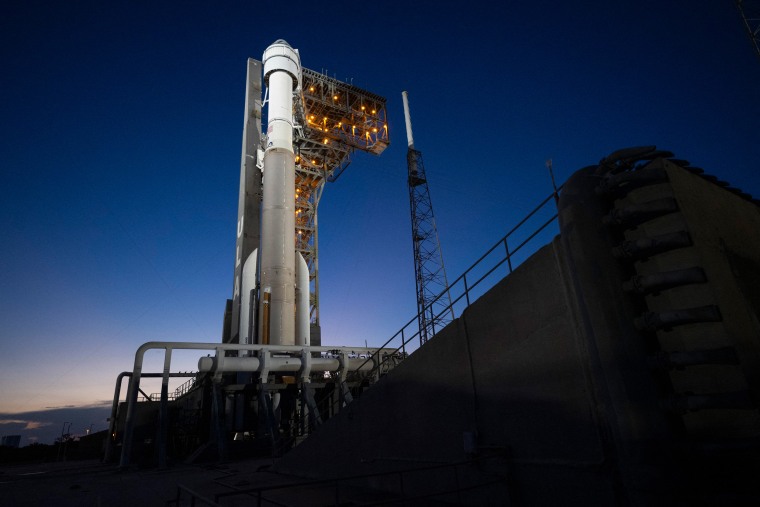
Both SpaceX’s Crew Dragon capsule and Boeing’s Starliner craft were developed as part of NASA’s Commercial Crew Program. The initiative began more than a decade ago, following the retirement of the agency’s space shuttles, to support private companies in building new space vehicles to take astronauts to low-Earth orbit.
Starliner’s first uncrewed flight in 2019 was thwarted by software issues, forcing mission controllers to cut the test short before the vehicle could attempt to rendezvous and dock with the ISS. A second attempt was then delayed several times by fuel valve issues, and it wasn’t until 2022 that Boeing was able to carry out a successful uncrewed flight to and from the space station .
Denise Chow is a reporter for NBC News Science focused on general science and climate change.
An official website of the United States government
Official websites use .gov A .gov website belongs to an official government organization in the United States.
Strong geomagnetic storm reaches Earth, continues through weekend
NOAA space weather forecasters have observed at least seven coronal mass ejections (CMEs) from the sun, with impacts expected to arrive on Earth as early as midday Friday, May 10, and persist through Sunday, May 12, 2024.
NOAA’s Space Weather Prediction Center (SWPC) has issued a Geomagnetic Storm Warning for Friday, May 10. Additional solar eruptions could cause geomagnetic storm conditions to persist through the weekend.
- The First of Several CMEs reached Earth on Friday, May 10 at 12:37 pm EDT. The CME was very strong and SWPC quickly issued a series of geomagnetic storm warnings. SWPC observed G4 conditions at 1:39 pm EDT (G3 at 1:08 pm EDT).
- This storm is ongoing and SWPC will continue to monitor the situation and provide additional warnings as necessary.
This is an unusual and potentially historic event. Clinton Wallace , Director, NOAA’s Space Weather Prediction Center
CMEs are explosions of plasma and magnetic fields from the sun’s corona. They cause geomagnetic storms when they are directed at Earth. Geomagnetic storms can impact infrastructure in near-Earth orbit and on Earth’s surface , potentially disrupting communications, the electric power grid, navigation, radio and satellite operations. SWPC has notified the operators of these systems so they can take protective action.
Geomagnetic storms can also trigger spectacular displays of aurora on Earth . A severe geomagnetic storm includes the potential for aurora to be seen as far south as Alabama and Northern California.
Related Features //
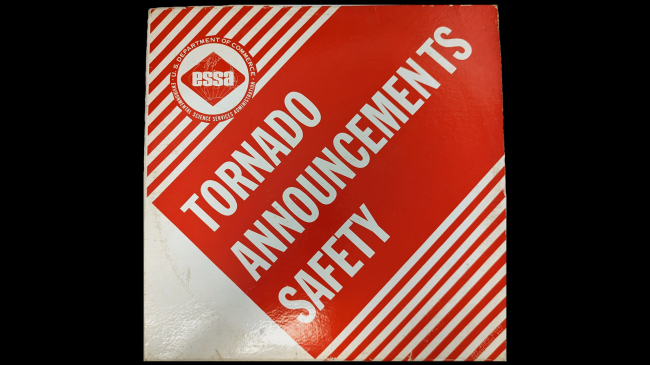

IMAGES
VIDEO
COMMENTS
Space exploration unites the world to inspire the next generation, make ground-breaking discoveries, and create new opportunities. Technologies and missions we develop for human spaceflight have thousands of applications on Earth, boosting the economy, creating new career paths, and advancing everyday technologies all around us.
Stefanie Waldek is a freelance space, travel, and design journalist with expertise in aviation, meteorology, and polar regions. She was a former editor at Architectural Digest, TripAdvisor, and ...
Everything you need to know about space travel (almost) - BBC Science Focus Magazine.
She'll be only the fourth Black woman from the US to travel to orbit. Chris Sembroski, a 42-year-old Seattle-based Lockheed Martin employee and former camp counselor at Alabama's famed Space Camp.
NASA aims to travel to the moon again—and beyond. Here's a look at the 21st-century race to send humans into space. Private spaceflight is not a new concept. In the United States, commercial ...
5) SpaceX stacks tallest booster ever with Starship. SpaceX's first orbital Starship SN20 is stacked atop its massive Super Heavy Booster 4 for the first time on Aug. 6, 2021 at the company's ...
Jason Lyon. By Debra Kamin. May 7, 2022. Ilida Alvarez has dreamed of traveling to space since she was a child. But Ms. Alvarez, a legal-mediation firm owner, is afraid of flying, and she isn't ...
The fastest ever spacecraft, the now- in-space Parker Solar Probe will reach a top speed of 450,000 mph. It would take just 20 seconds to go from Los Angeles to New York City at that speed, but it ...
New research suggests that it might be possible to build warp drives and beat the galactic speed limit. Faster than light travel is the only way humans could ever get to other stars in a ...
With more people having access to space travel today than ever before, successful and safe spaceflights require varying levels of preparation before launch day. For government astronauts, candidates undergo a rigorous two-year initial training period before qualifying for flight assignment. This training includes learning about Space Station ...
Blue Origin is also sending its first crewed suborbital space flight on July 20, 2021. That's nine days after Virgin Galactic's first flight, but the Blue Origin vehicle will fly an additional ...
No word on how much it cost them. For $55 million, Axiom Space will send astronauts via a SpaceX rocket to the International Space Station, a laboratory that circles Earth once every 90 minutes ...
Up to 2009, only 7 people made it into space as tourists, all travelling with the Russian Space Agency, and all paying in excess of USD $20 million. These weren't exactly hop-on hop-off trips either, with the participants undergoing months of training, and many of them actively running their own experiments in space.
The fastest ever spacecraft, the now-in-space Parker Solar Probe will reach a top speed of 450,000 miles (724,000 km) per hour. It would take just 20 seconds to go from Los Angeles to New York ...
World's 1st man in space once visited Nova Scotia. Yuri Gagarin (born March 9, 1934, near Gzhatsk, Russia, U.S.S.R. [now Gagarin, Russia]—died March 27, 1968, near Moscow) was a Soviet cosmonaut who in 1961 became the first man to travel into space. The son of a carpenter on a collective farm, Gagarin graduated as a molder from a trade school ...
An American real estate investor, a Canadian investor, a former Israeli Air Force pilot, and an ex-Space Shuttle pilot will launch on an incredible orbital mission in its Crew Dragon spacecraft ...
Here's how you can - BBC Sky at Night Magazine. Have you ever wanted to travel into space? It's theoretically possible. Here are the various options, and how much it will cost you to go into space.
Fer Gregory/Shutterstock.com. As of 2021, Americans James Lovell, Fred Haise, John Swigert are the three people who have traveled furthest from Earth, during the Apollo 13 mission. When they flew ...
Although human beings have been dreaming about space travel forever, the first landmark in the history of space travel is Russia's launch of Sputnik 2 into space in November 1957. The spacecraft carried the first earthling, the Russian dog Laika, into space.. Four years later, on 12 April 1961, Soviet cosmonaut Yuri A. Gagarin became the first human in space when his spacecraft, the Vostok 1 ...
The launch will mark just the sixth time ever that NASA astronauts have broken in a brand-new spacecraft. Update, 9 p.m. EDT: Boeing Starliner's launch has been scrubbed due to a valve issue on ...
Boeing is on the verge of launching astronauts aboard new capsule, the latest entry to space travel 1 of 5 | Boeing's Starliner capsule atop an Atlas V rocket is rolled out to the launch pad at Space Launch Complex 41, Saturday, May 4, 2024, in Cape Canaveral, Fla. NASA astronauts Butch Wilmore and Suni Williams will launch aboard to the ...
NASA Administrator Bill Nelson told NPR he sees the U.S. in an urgent race with China to find water on the moon, and that he trusts SpaceX, despite Elon Musk's increasingly controversial profile.
Boeing's Starliner spacecraft blasted off with NASA astronauts onboard for the first time on Monday, kicking off a high-stakes test flight to the space station.
Visit spaceweather.gov for updates. You can subscribe to receive NOAA space weather alerts, warnings, and watch information at pss.swpc.noaa.gov. Credit: NOAA. NOAA's Space Weather Prediction Center (SWPC) has issued a Geomagnetic Storm Warning for Friday, May 10. Additional solar eruptions could cause geomagnetic storm conditions to persist ...
The extent of the devastation of floods that are ravaging southern Brazil have been laid bare in new and dramatic satellite images shared with CNN. At least 95 people have died in the heavy ...
NASA